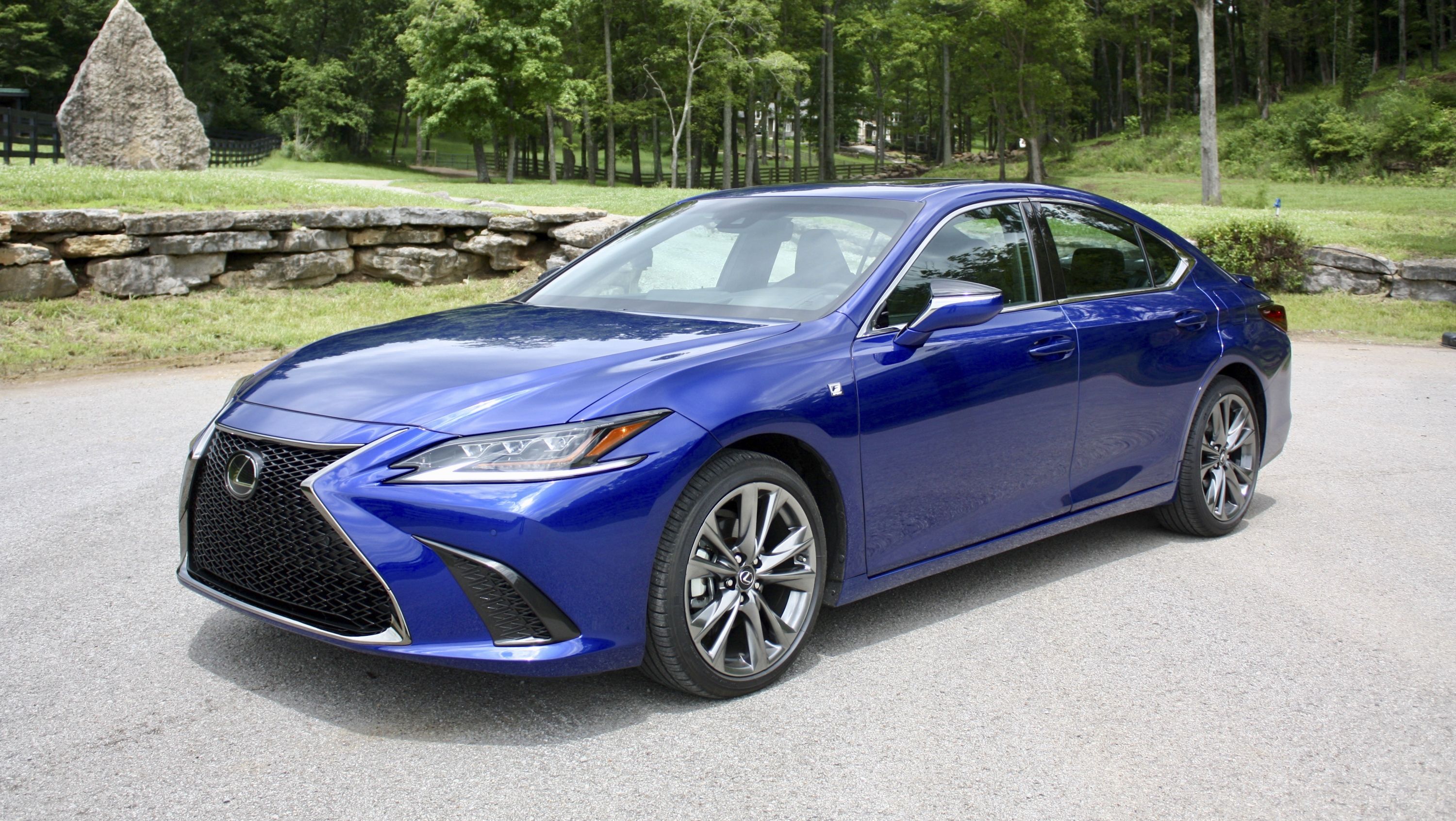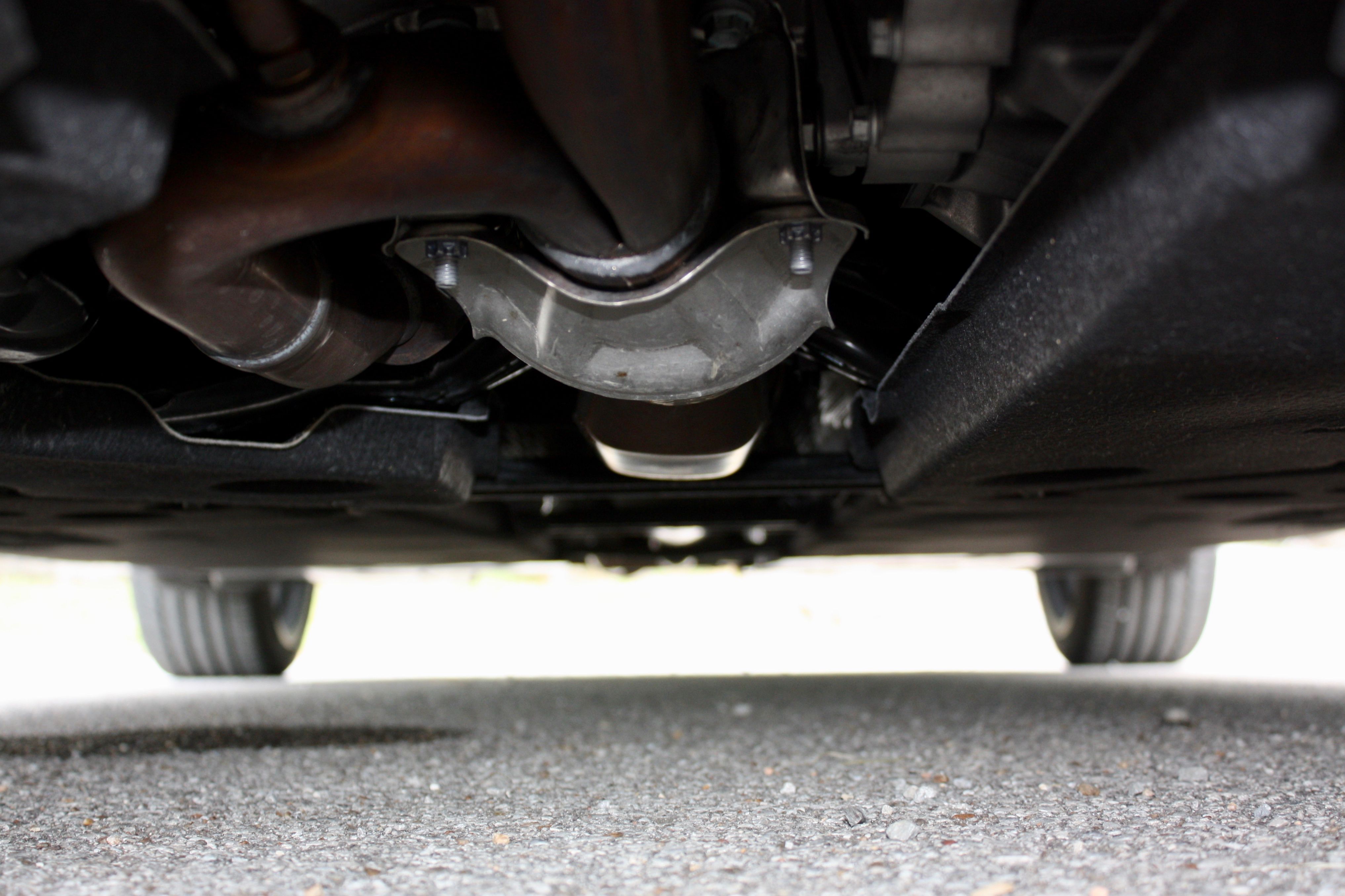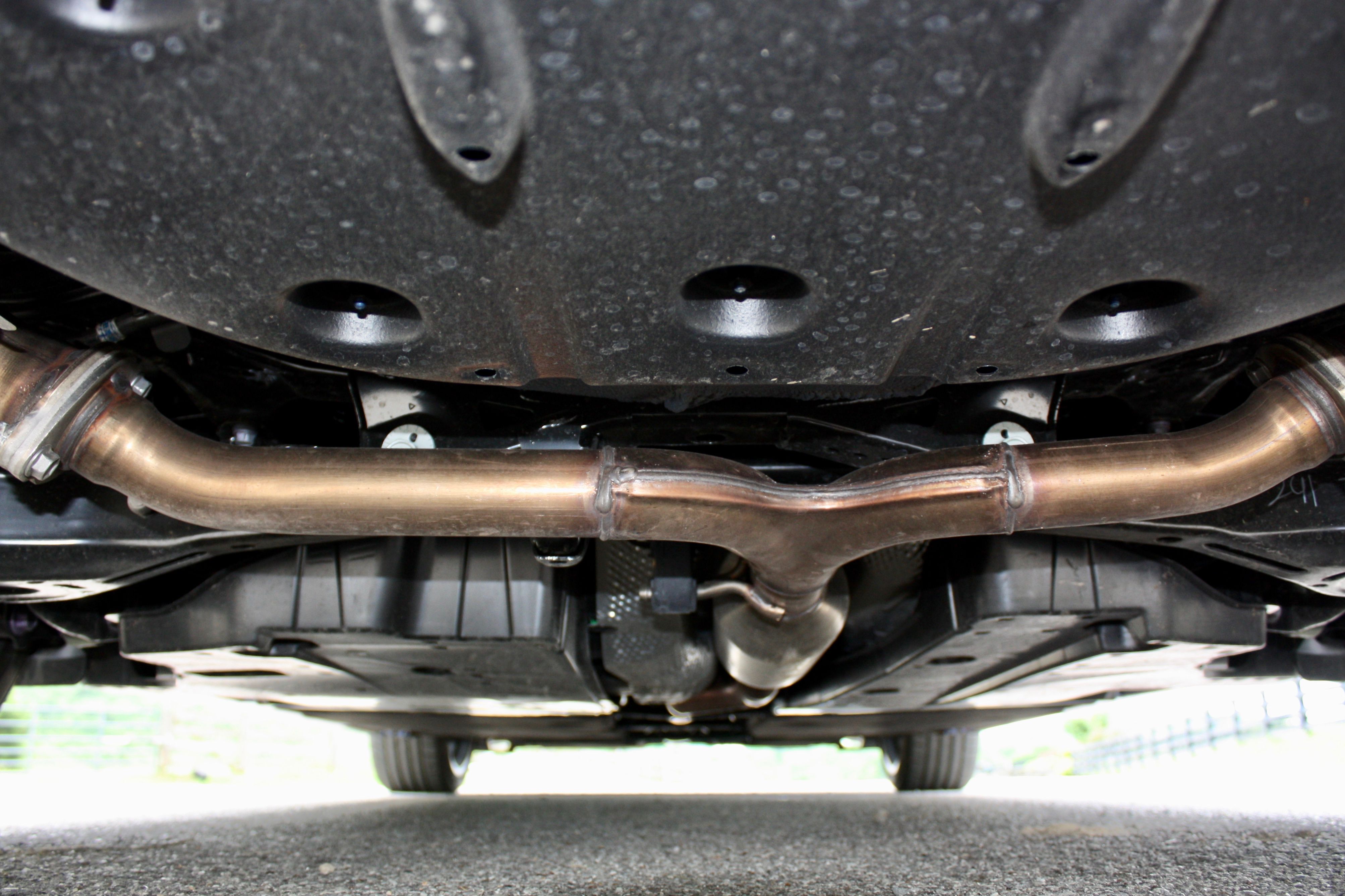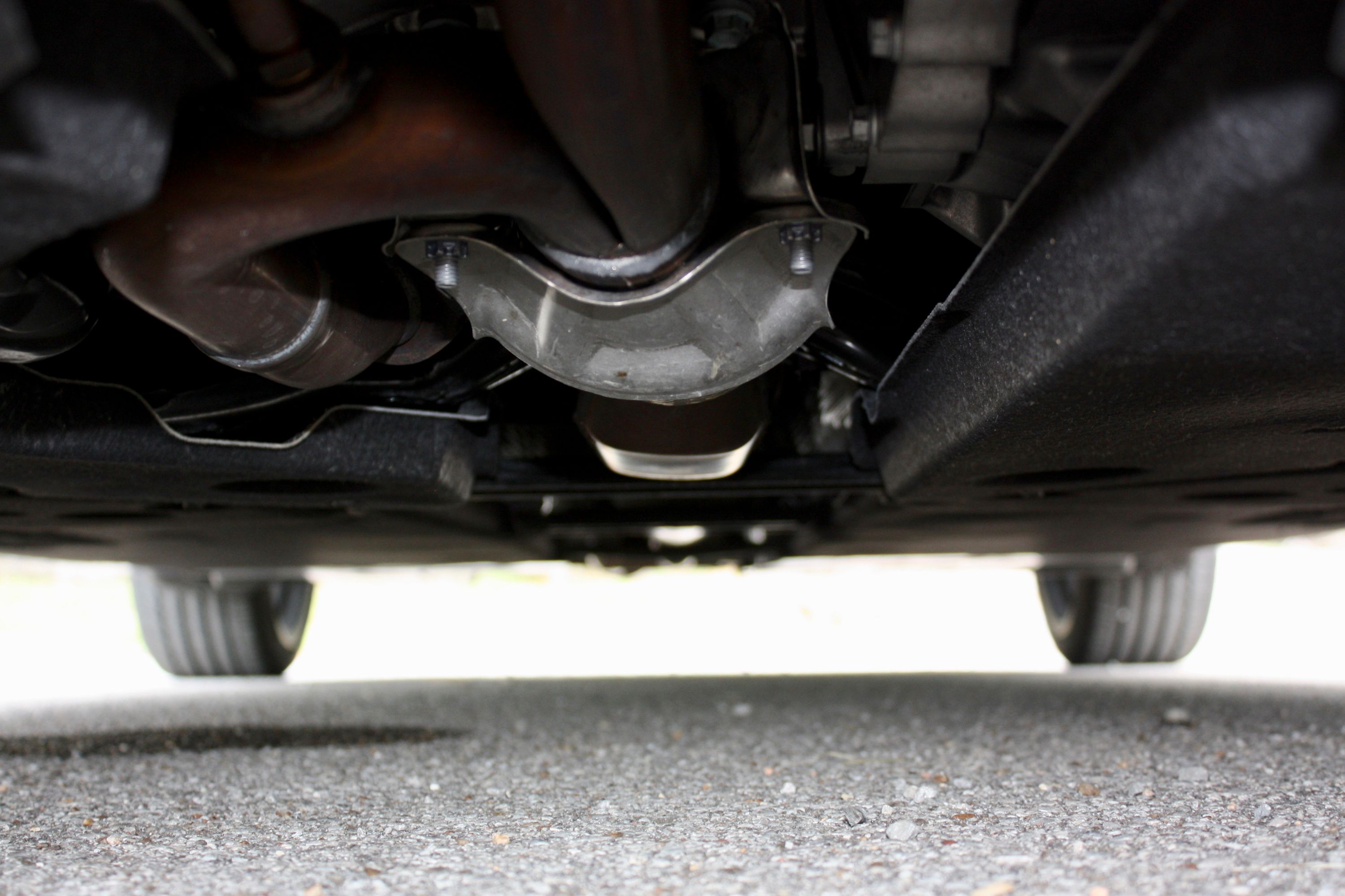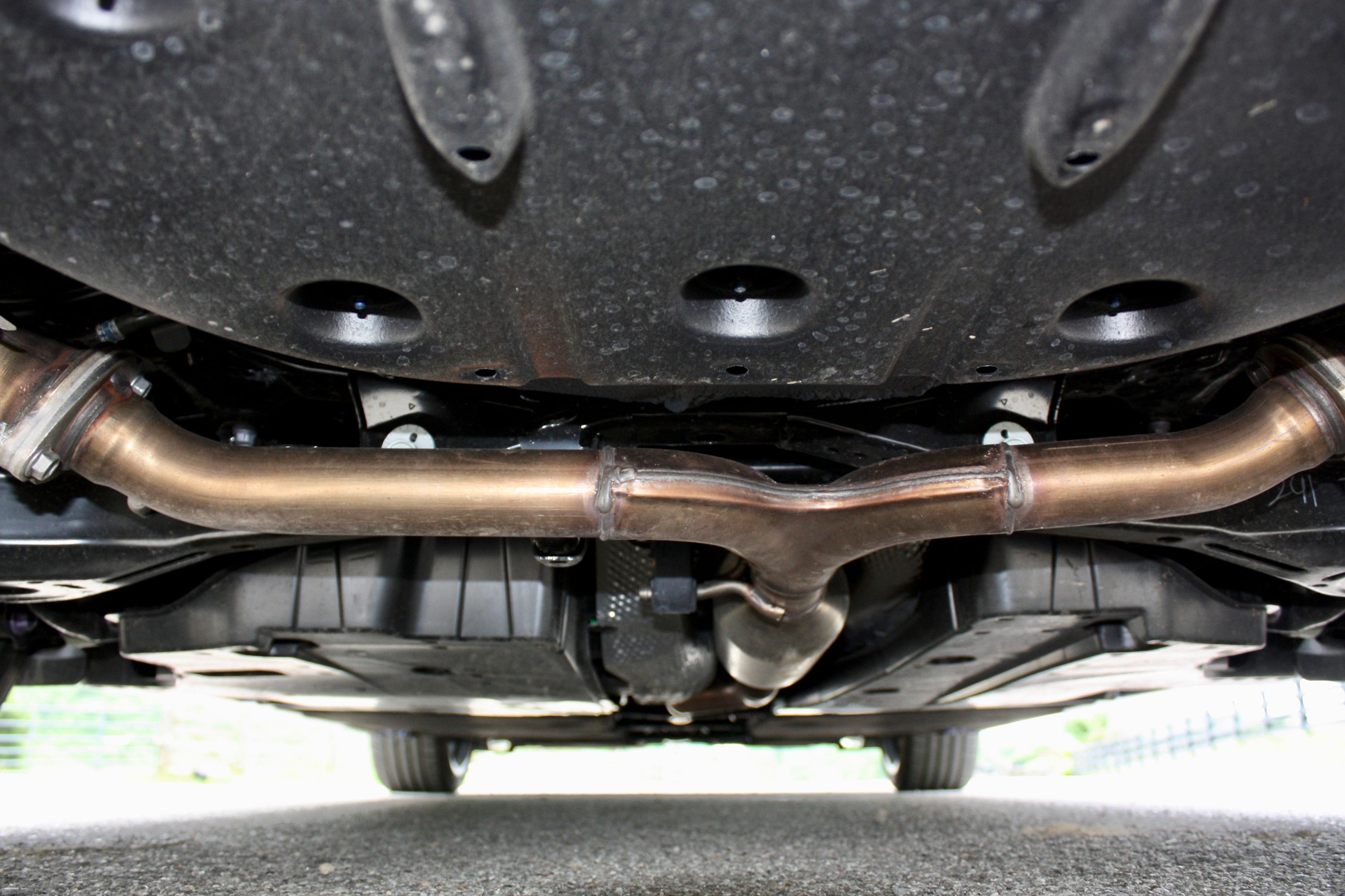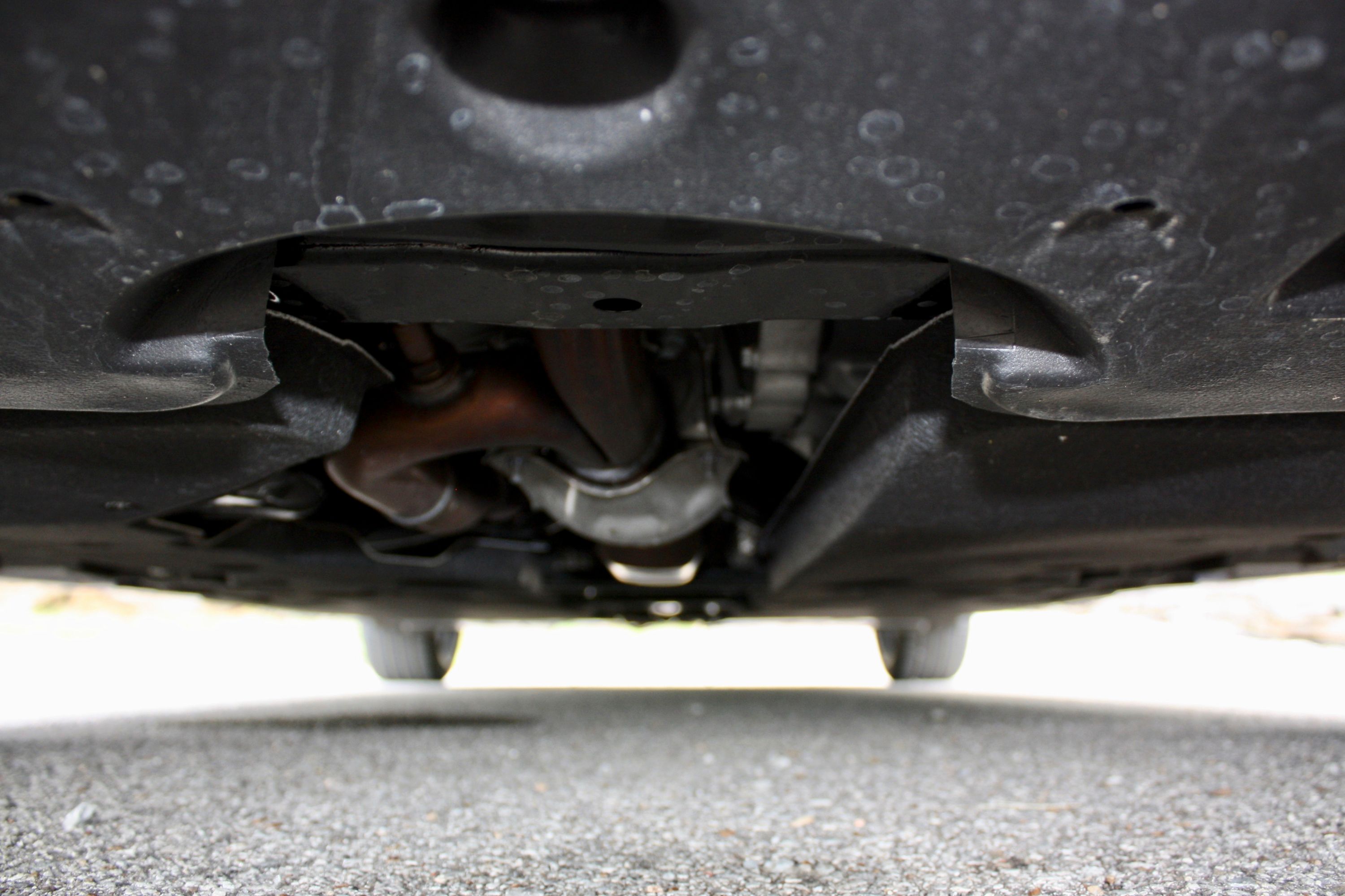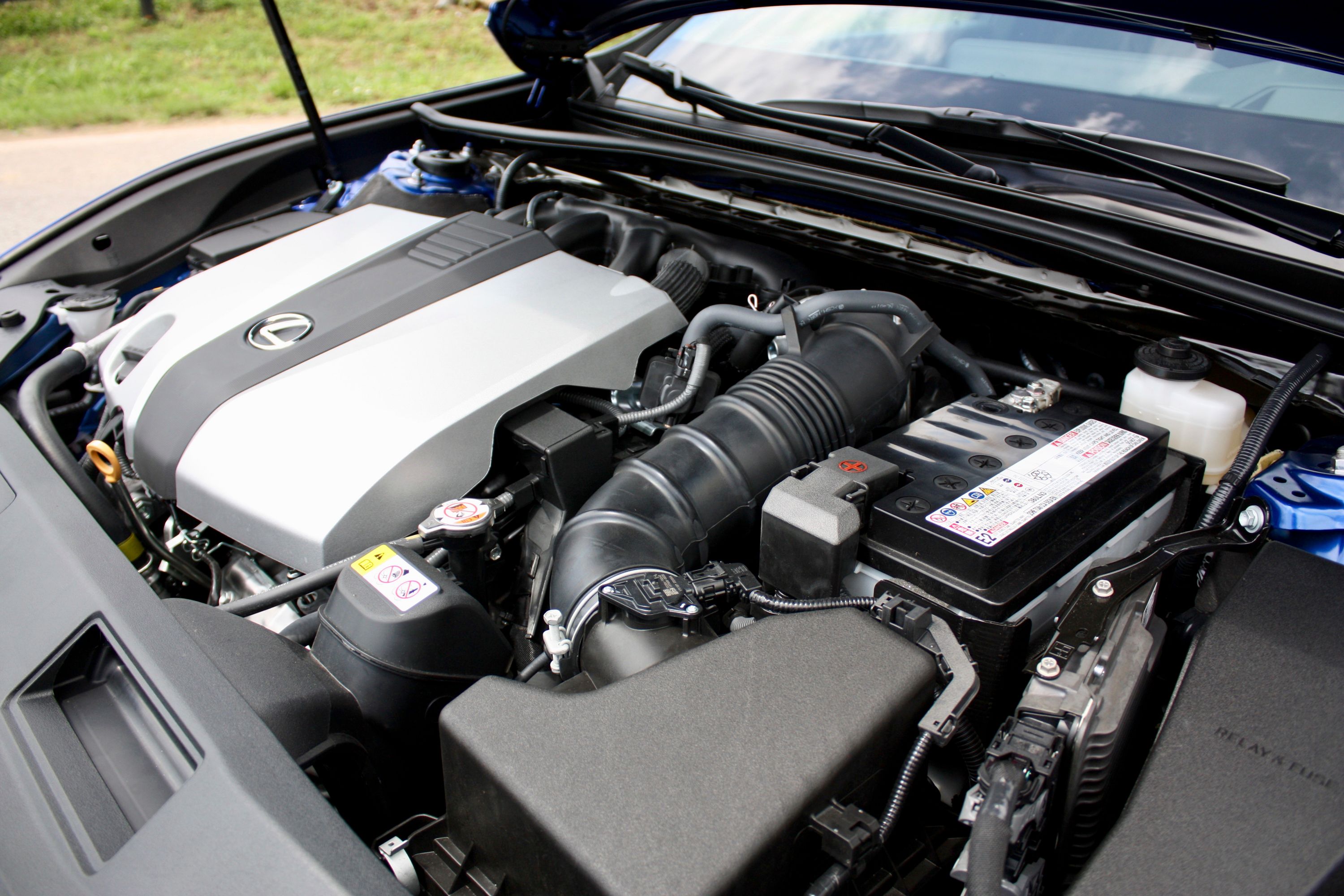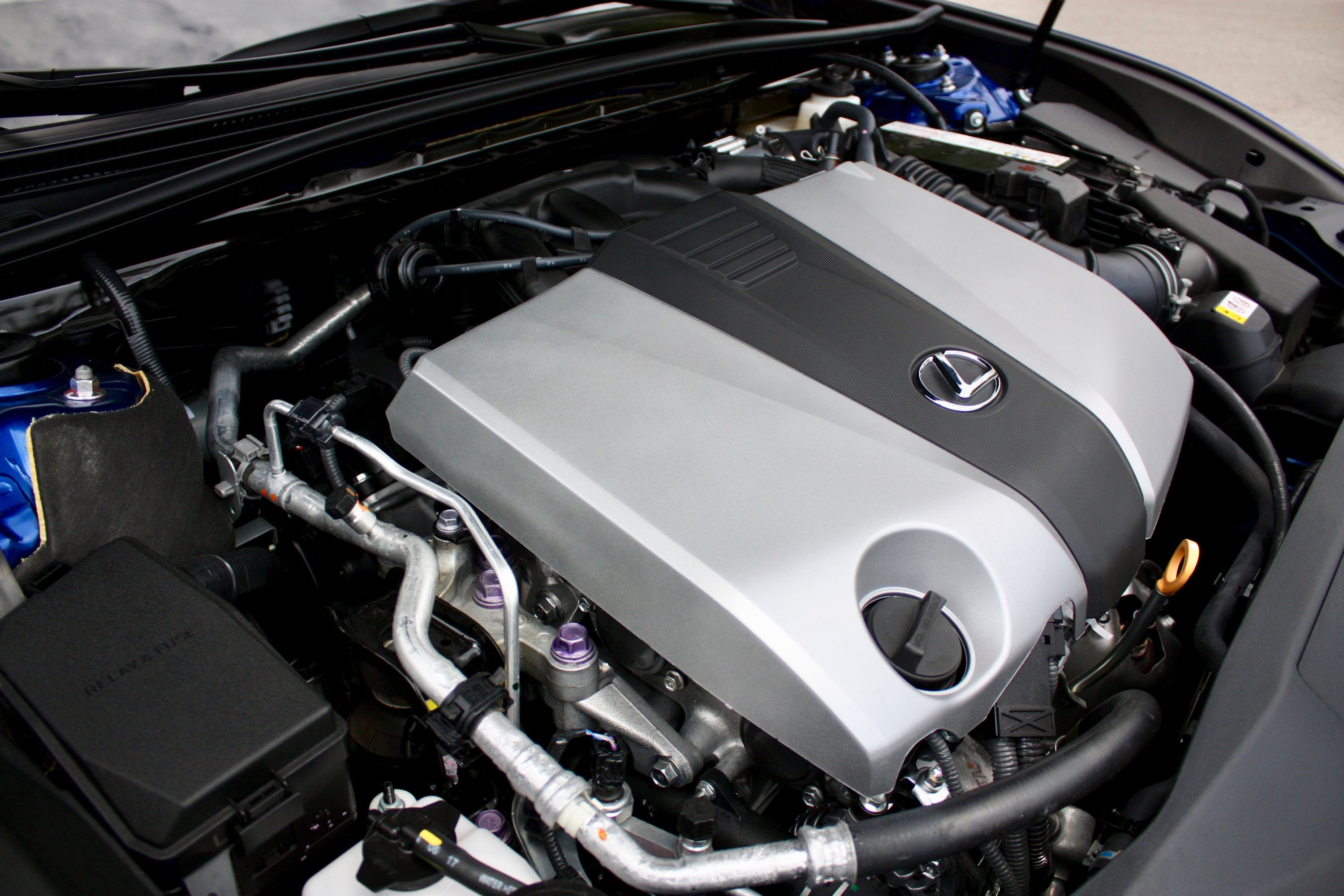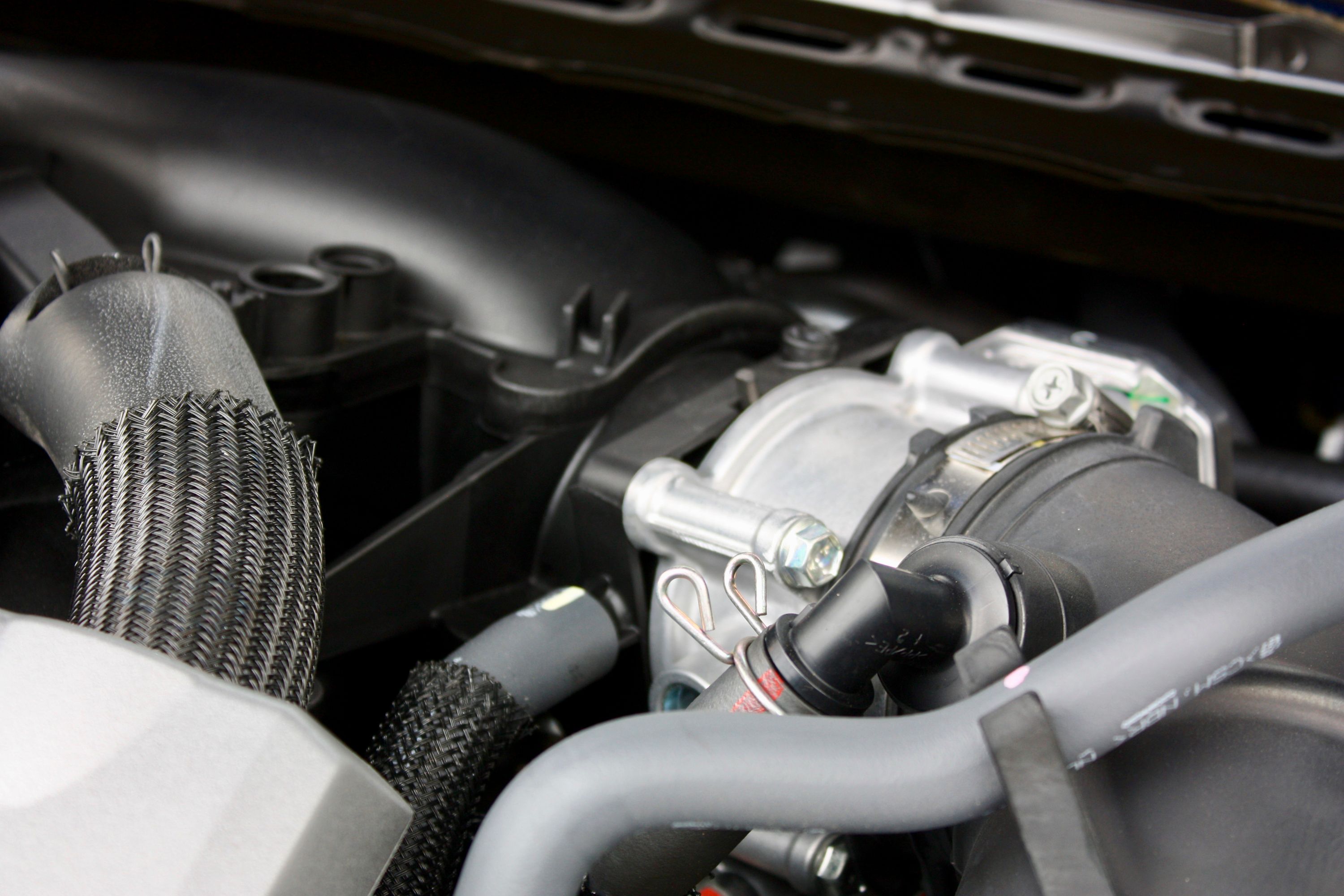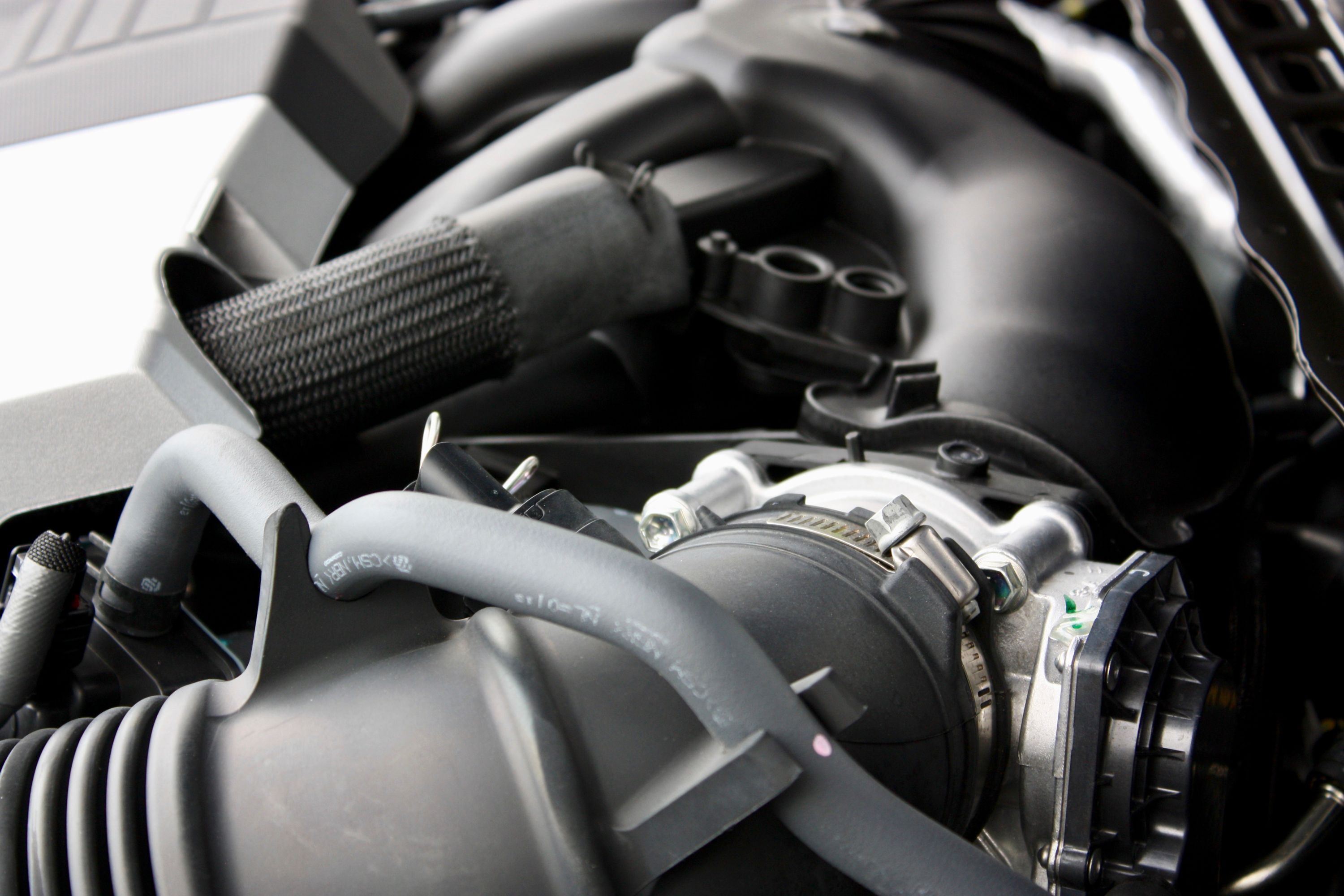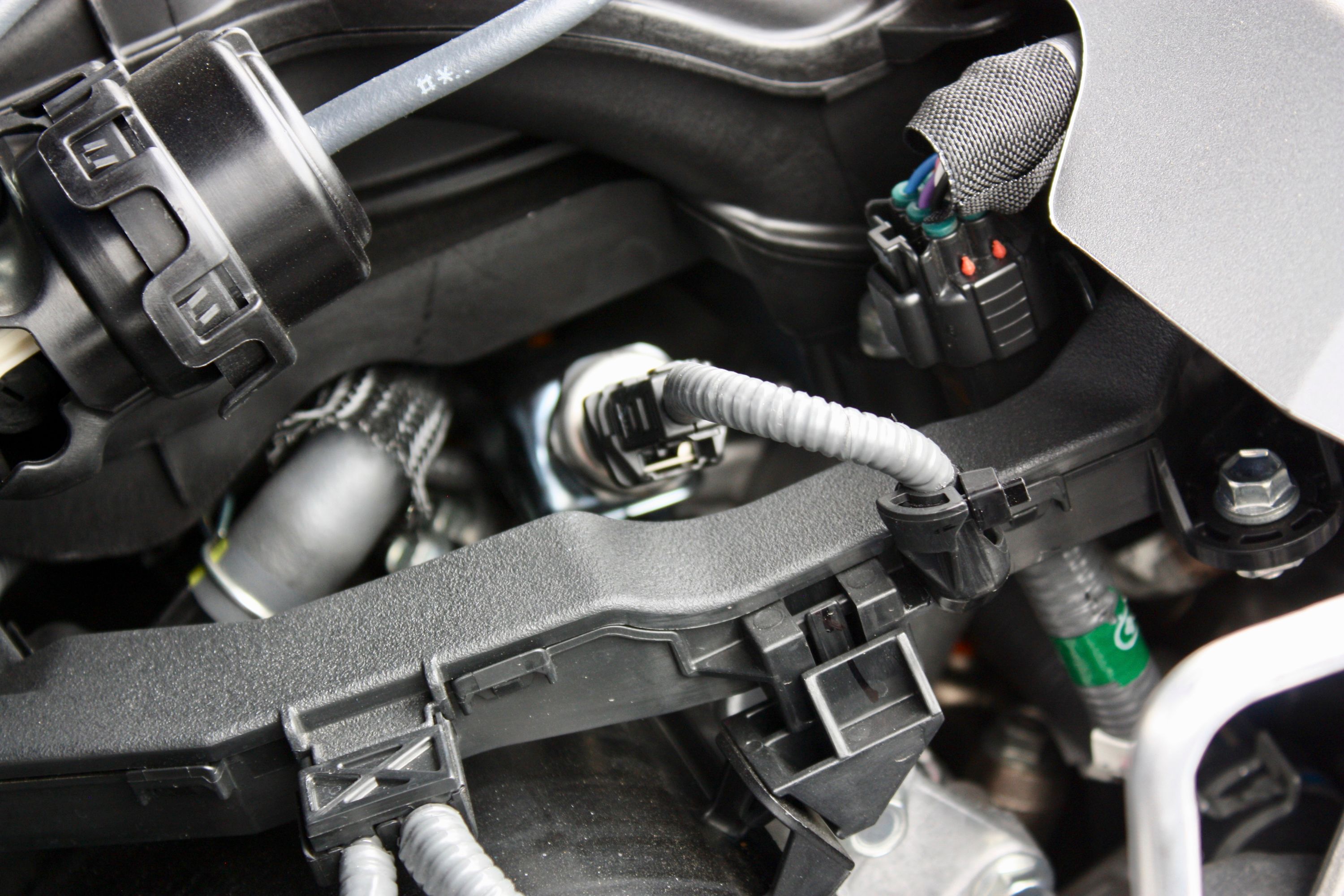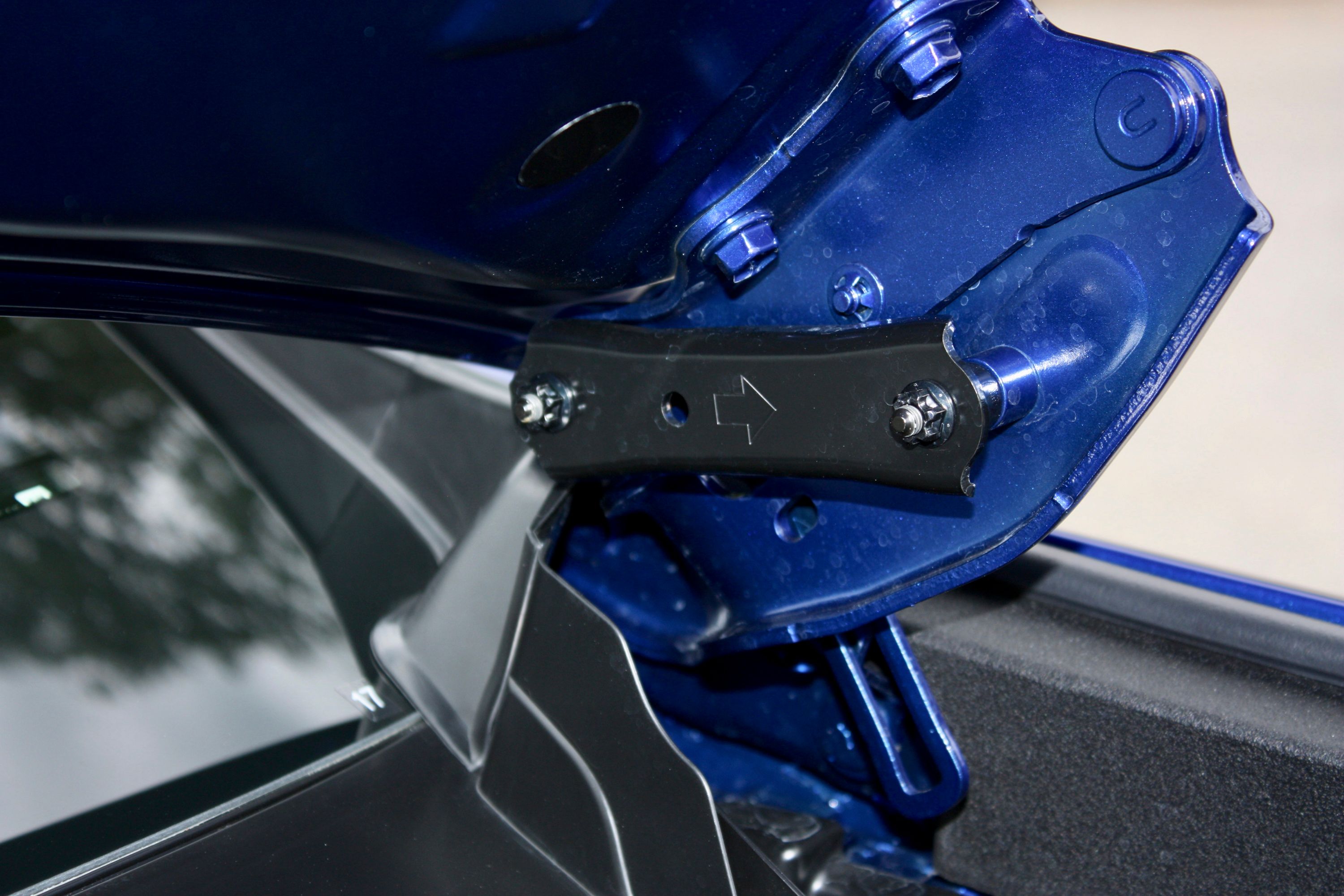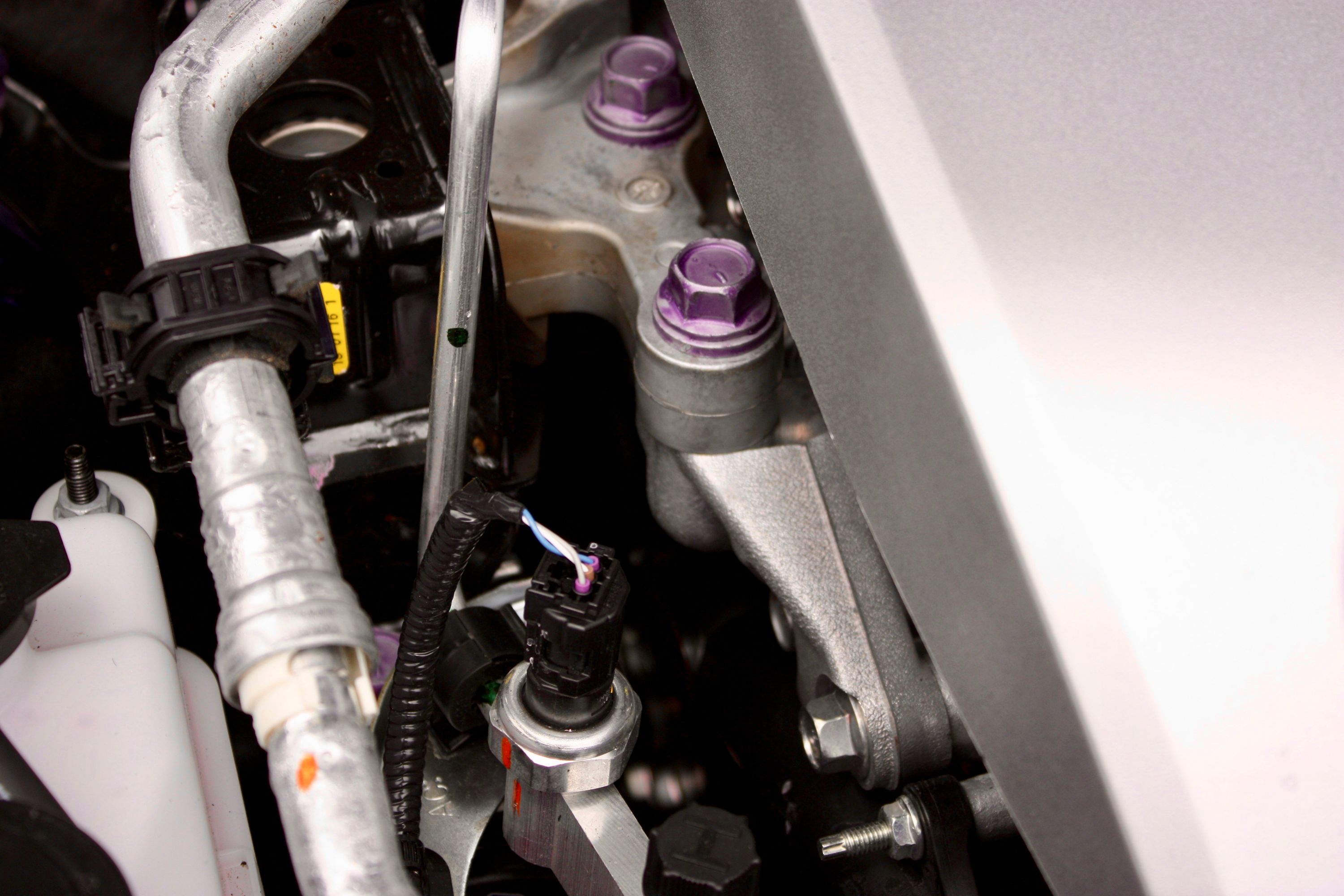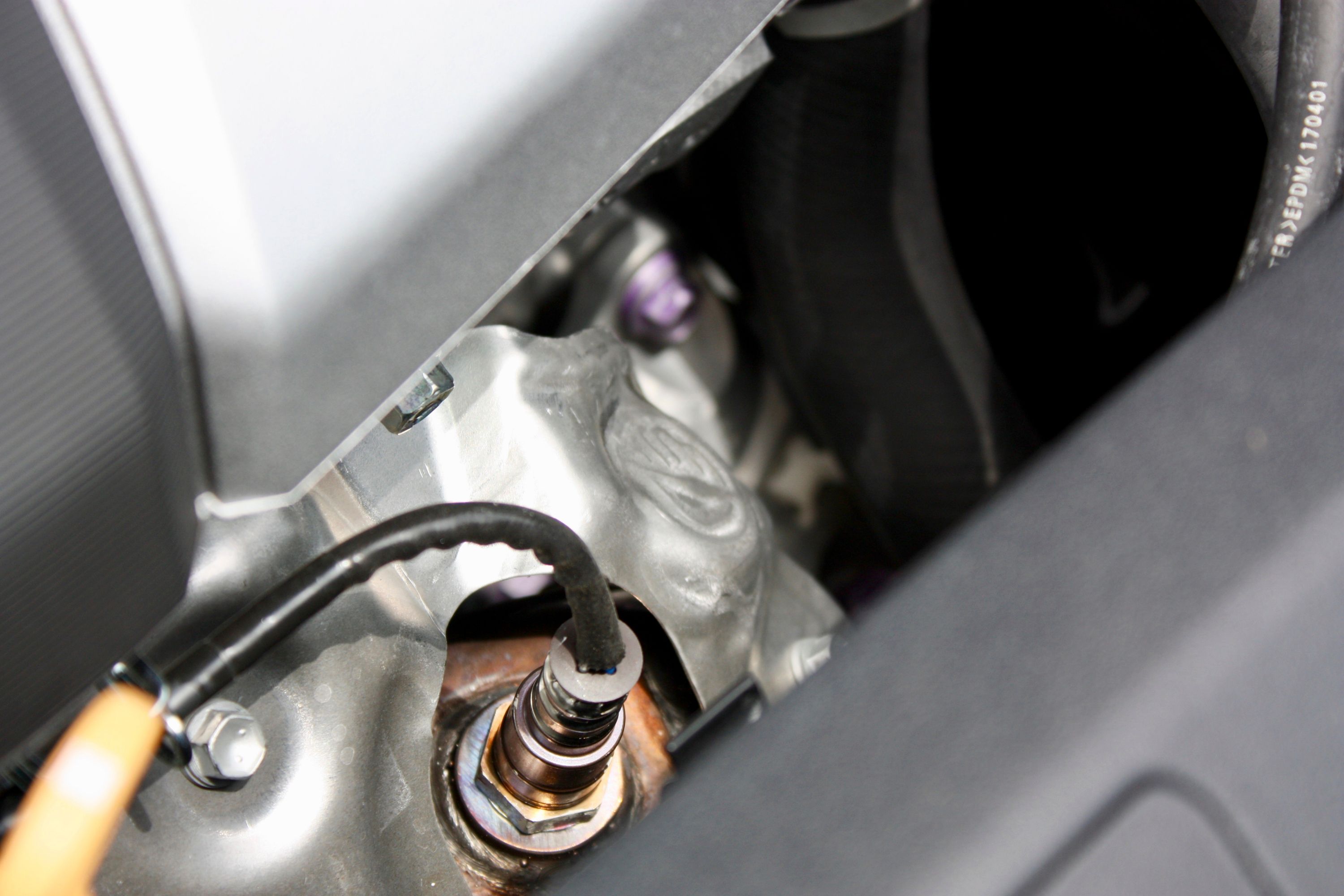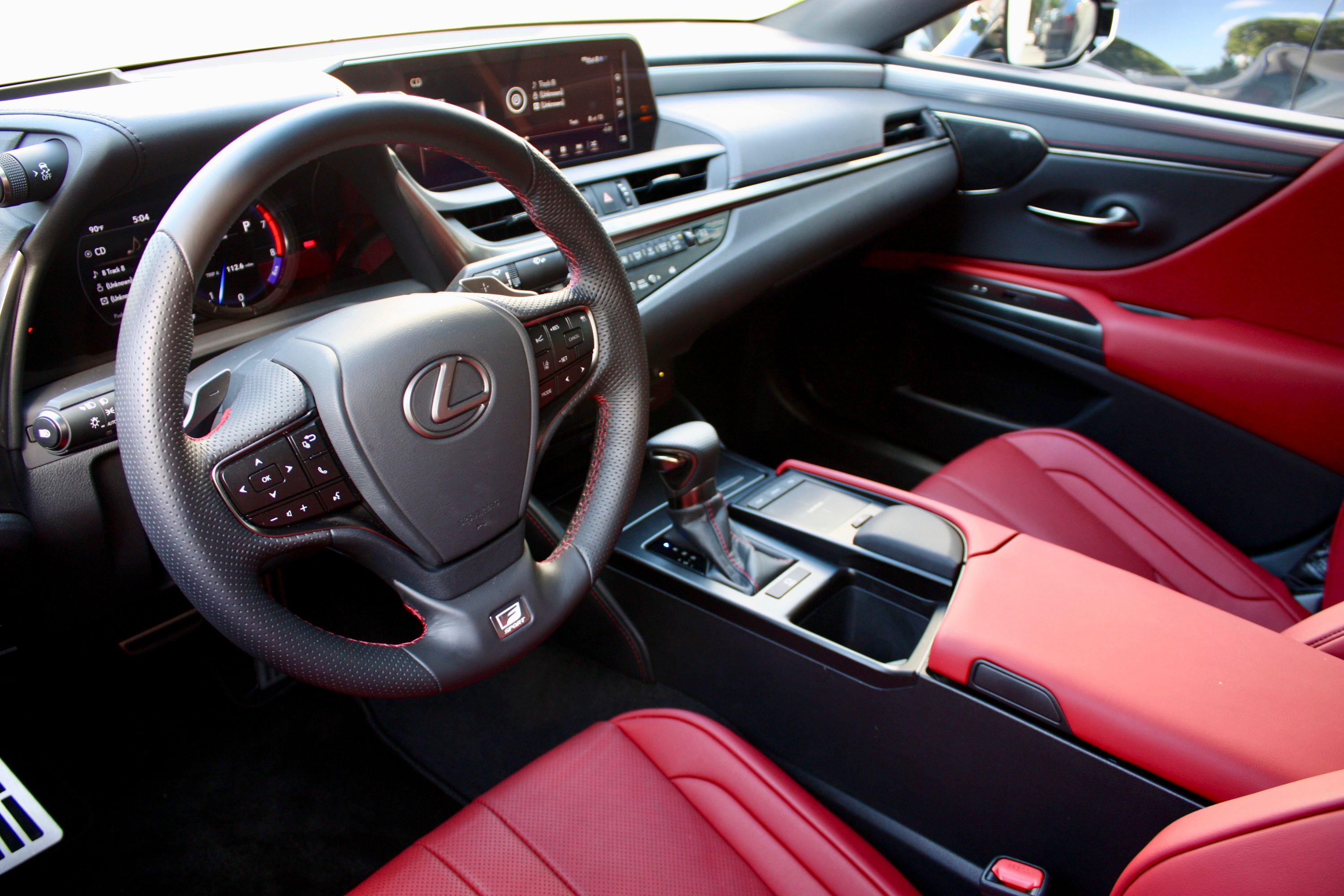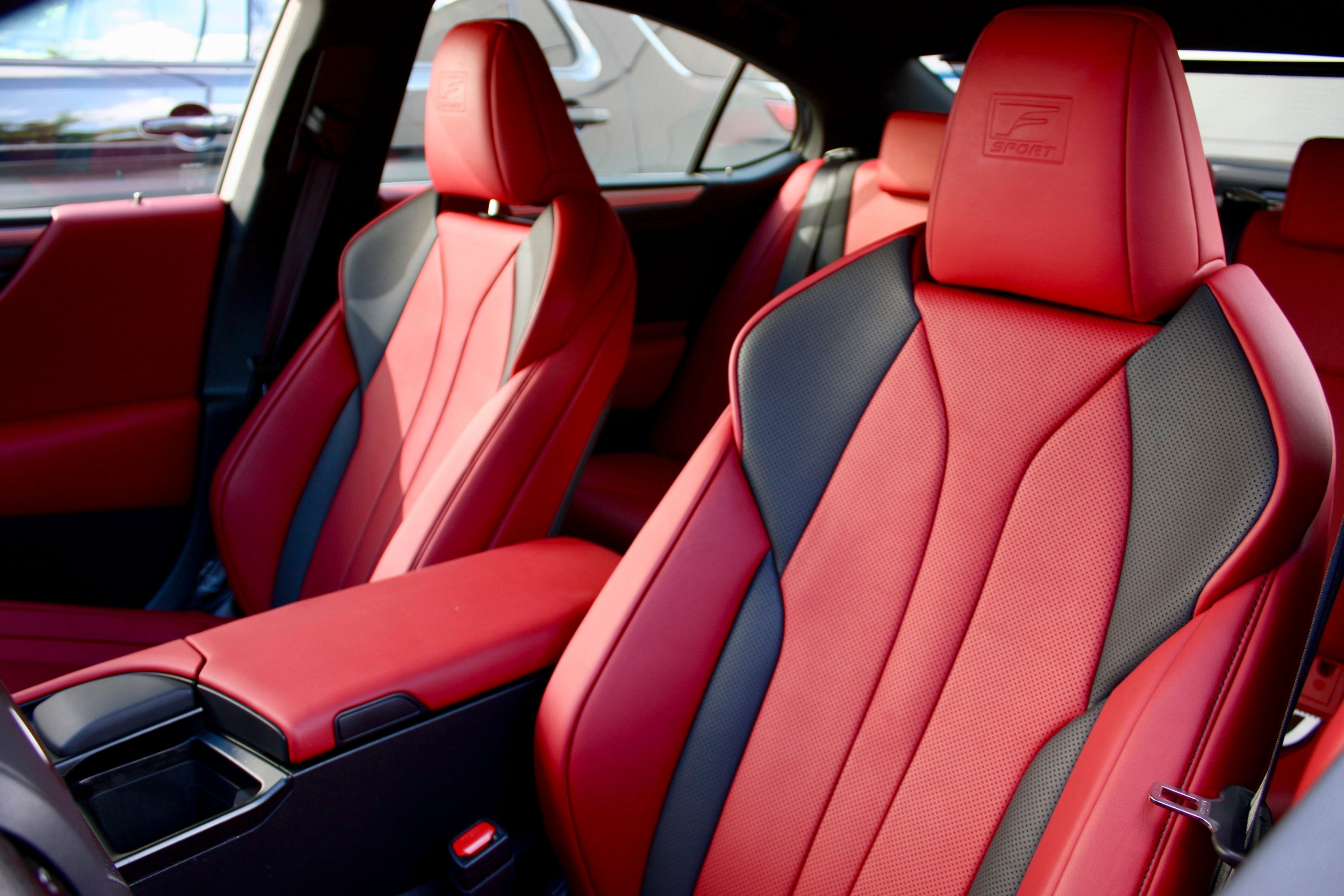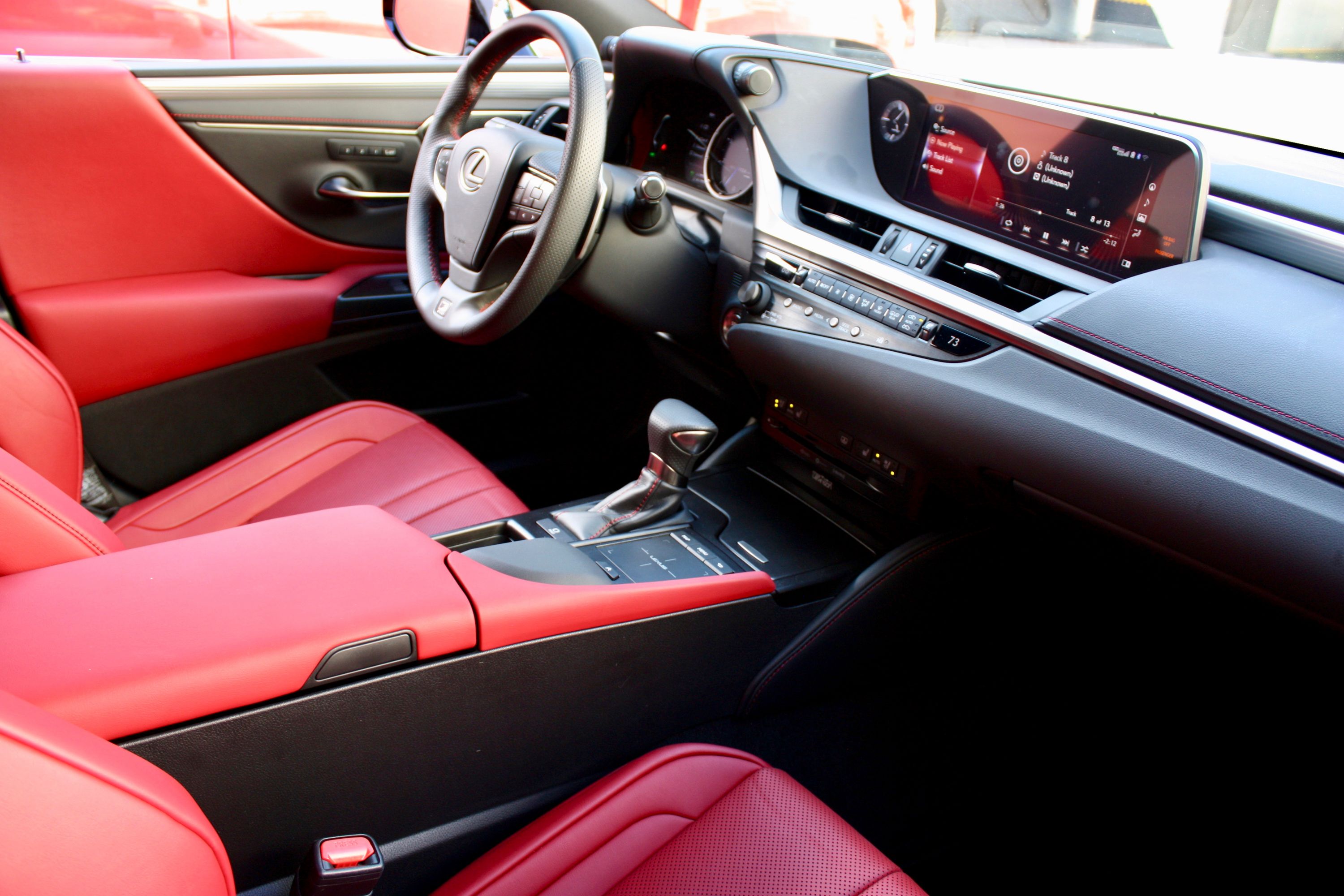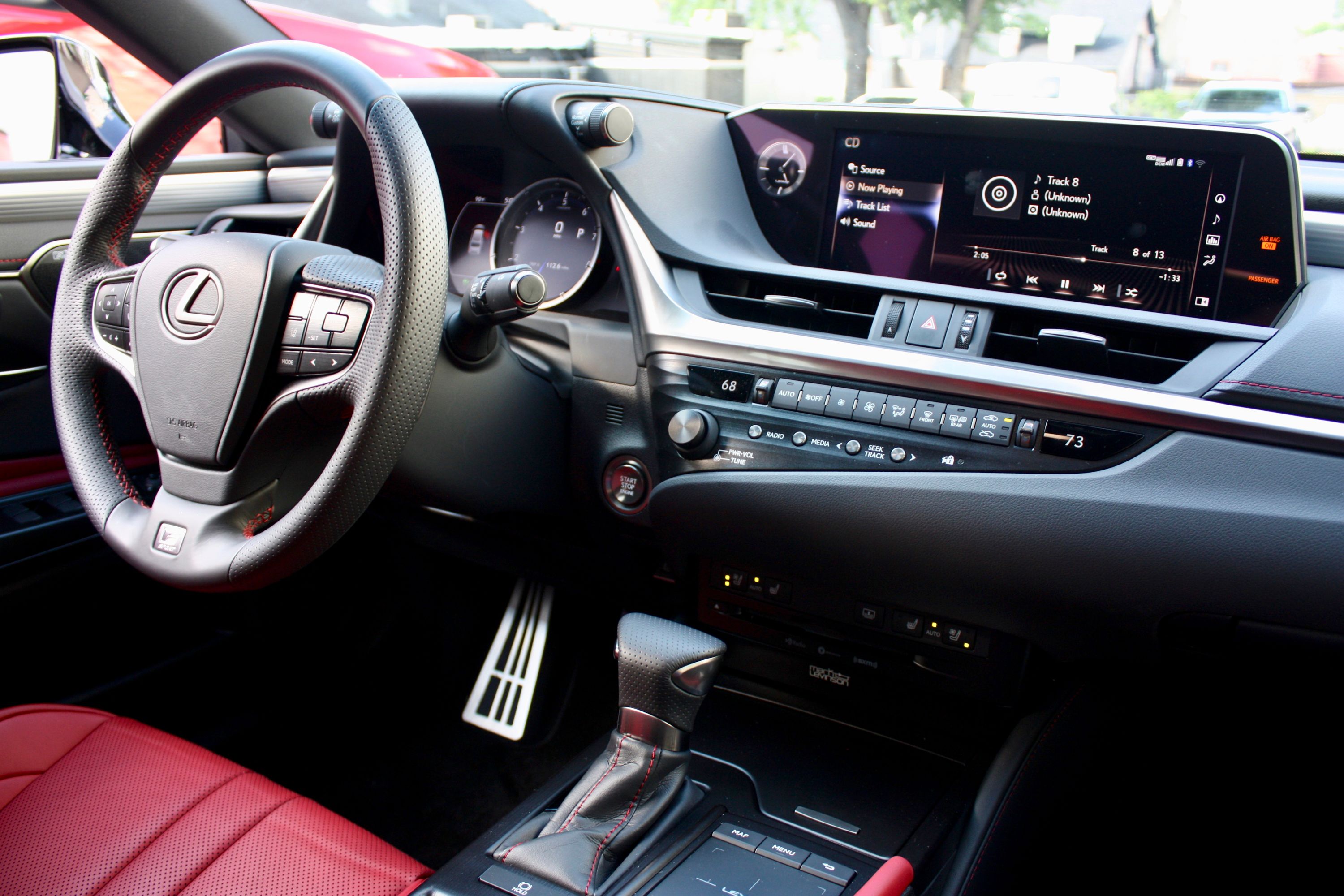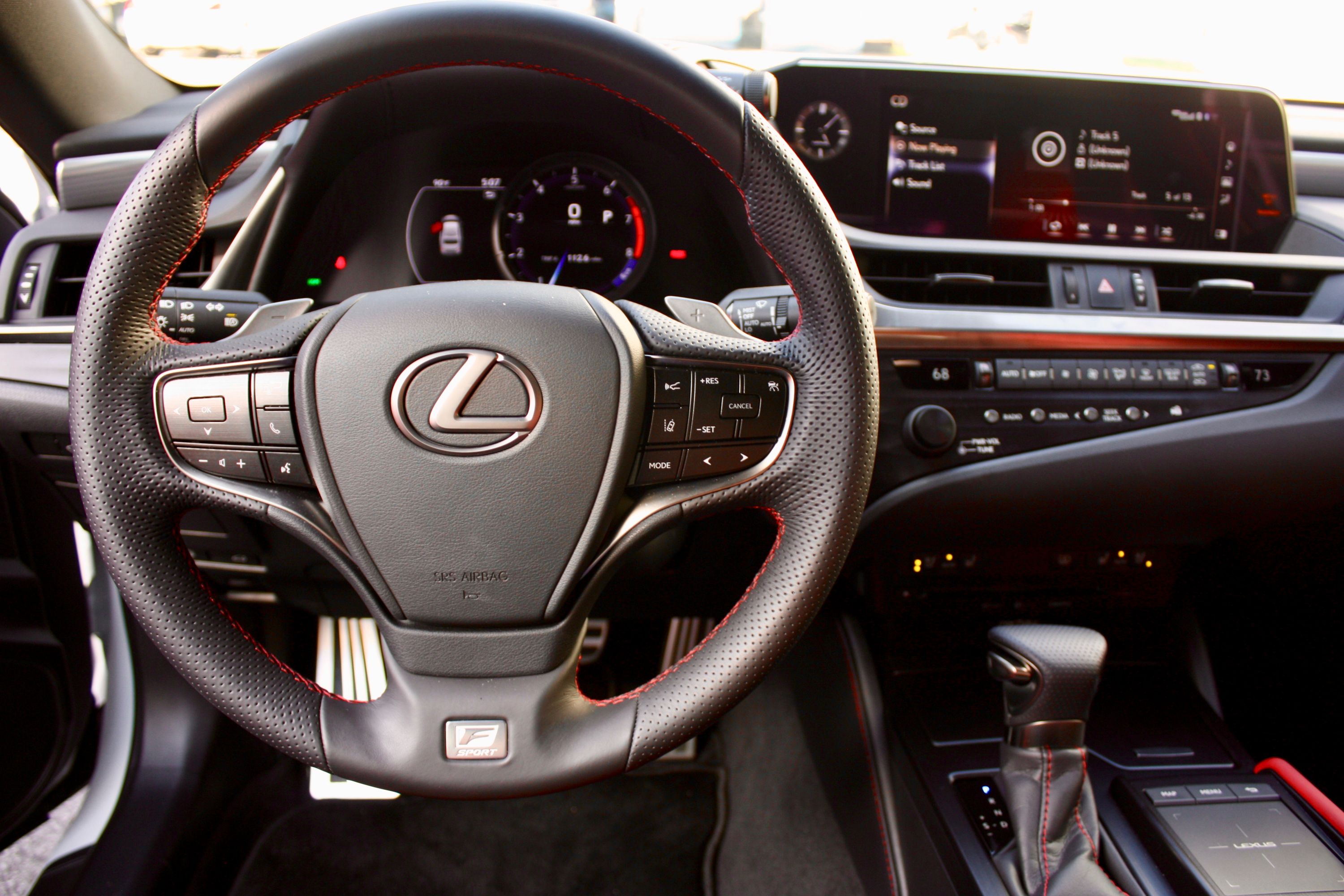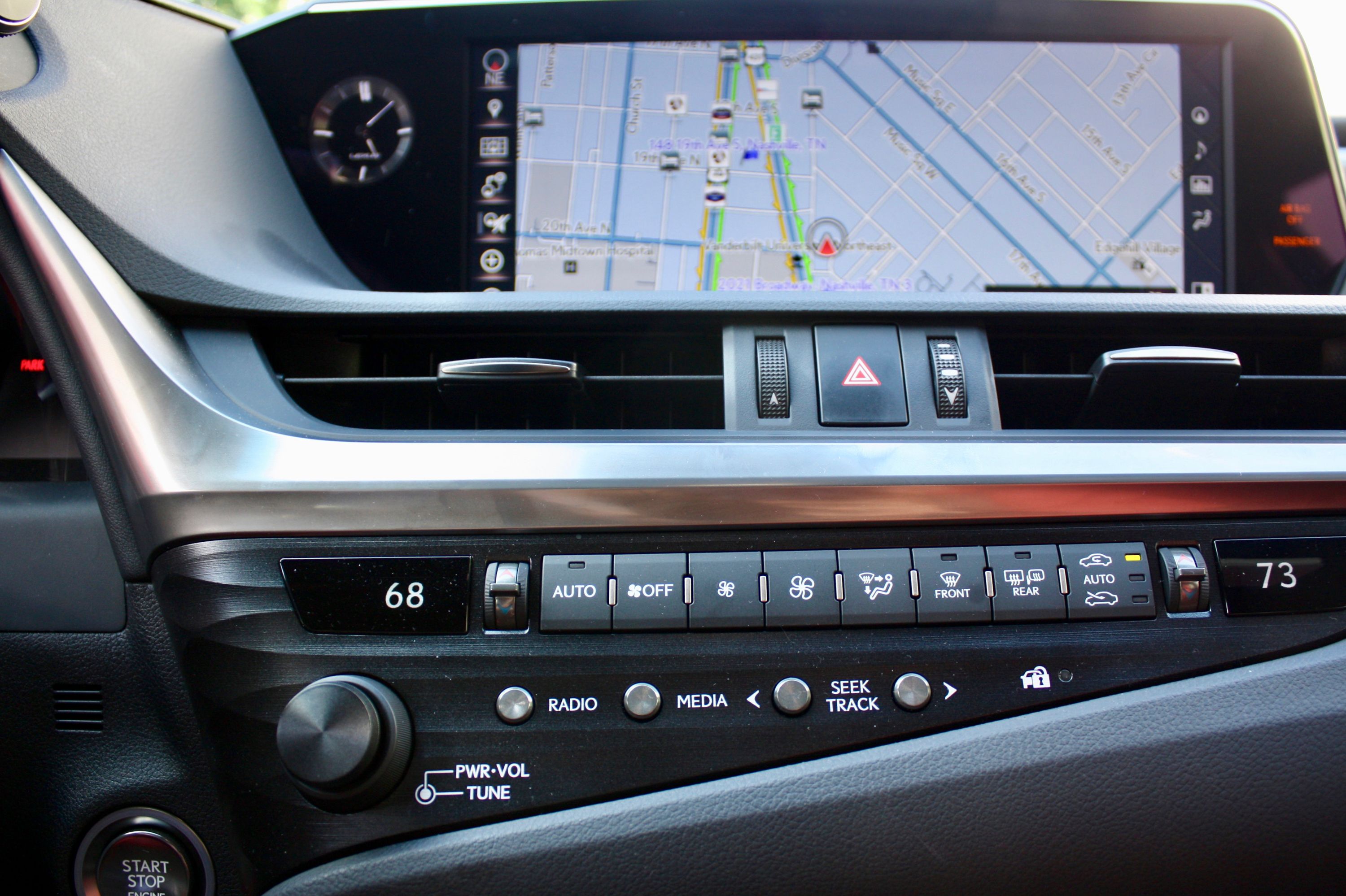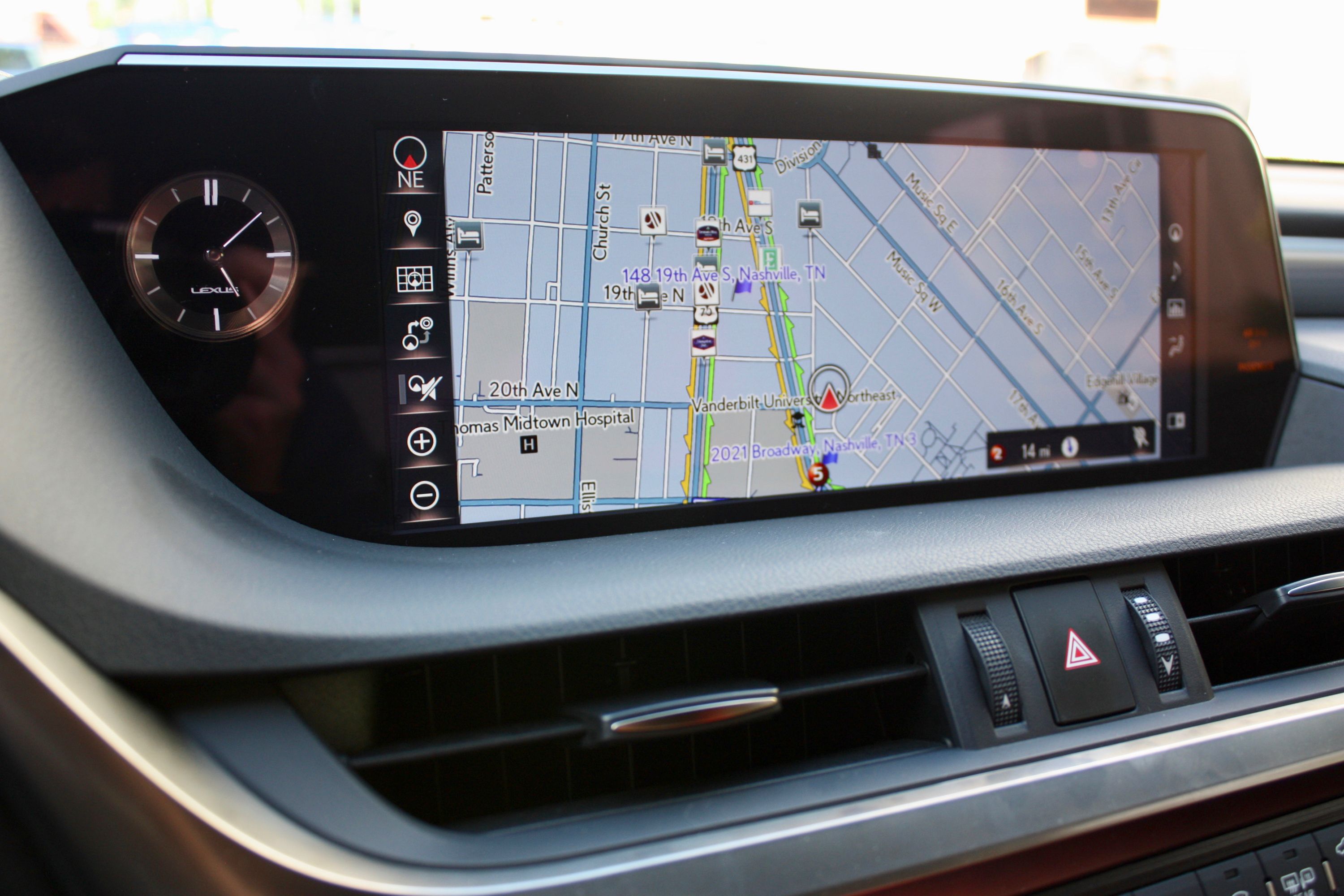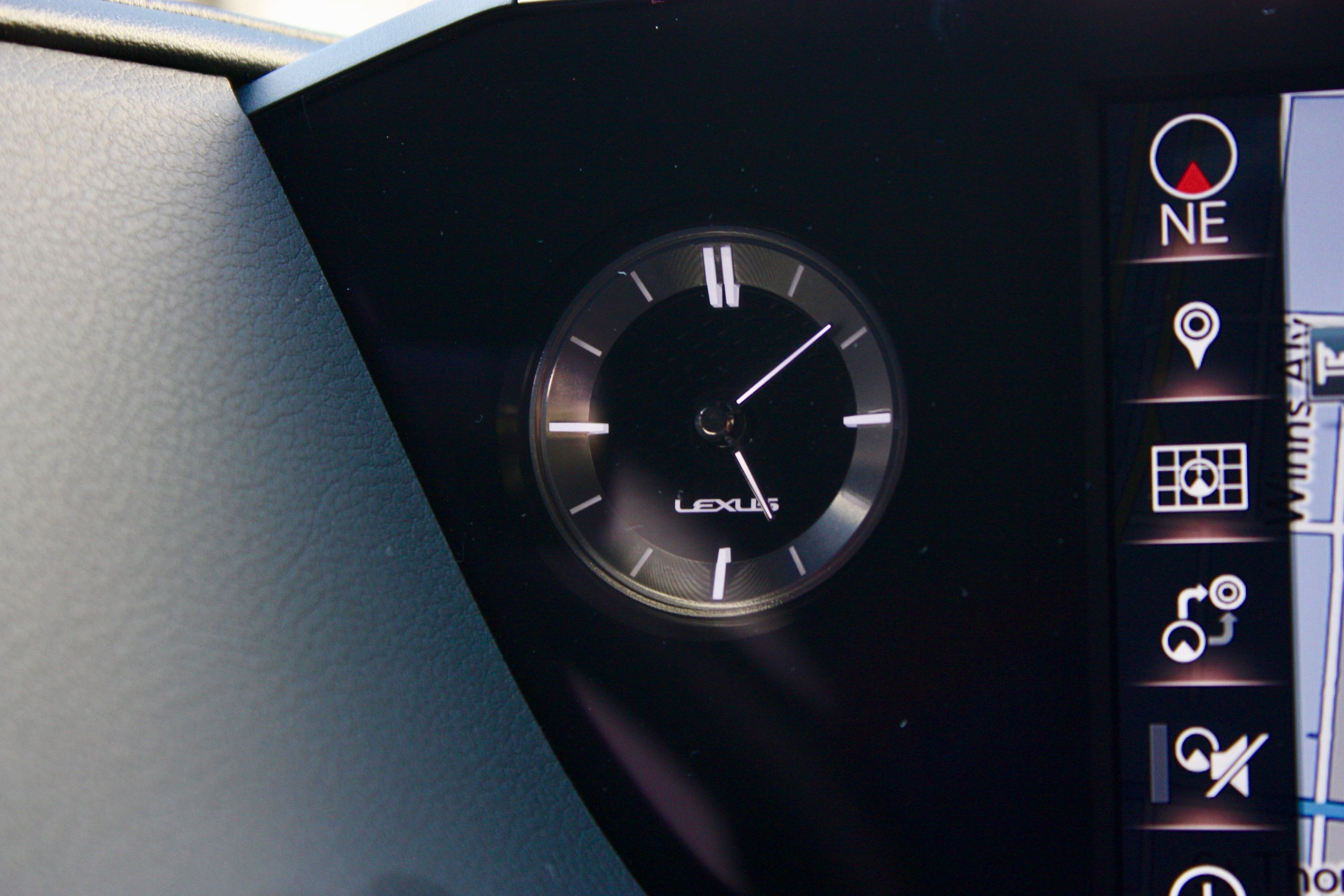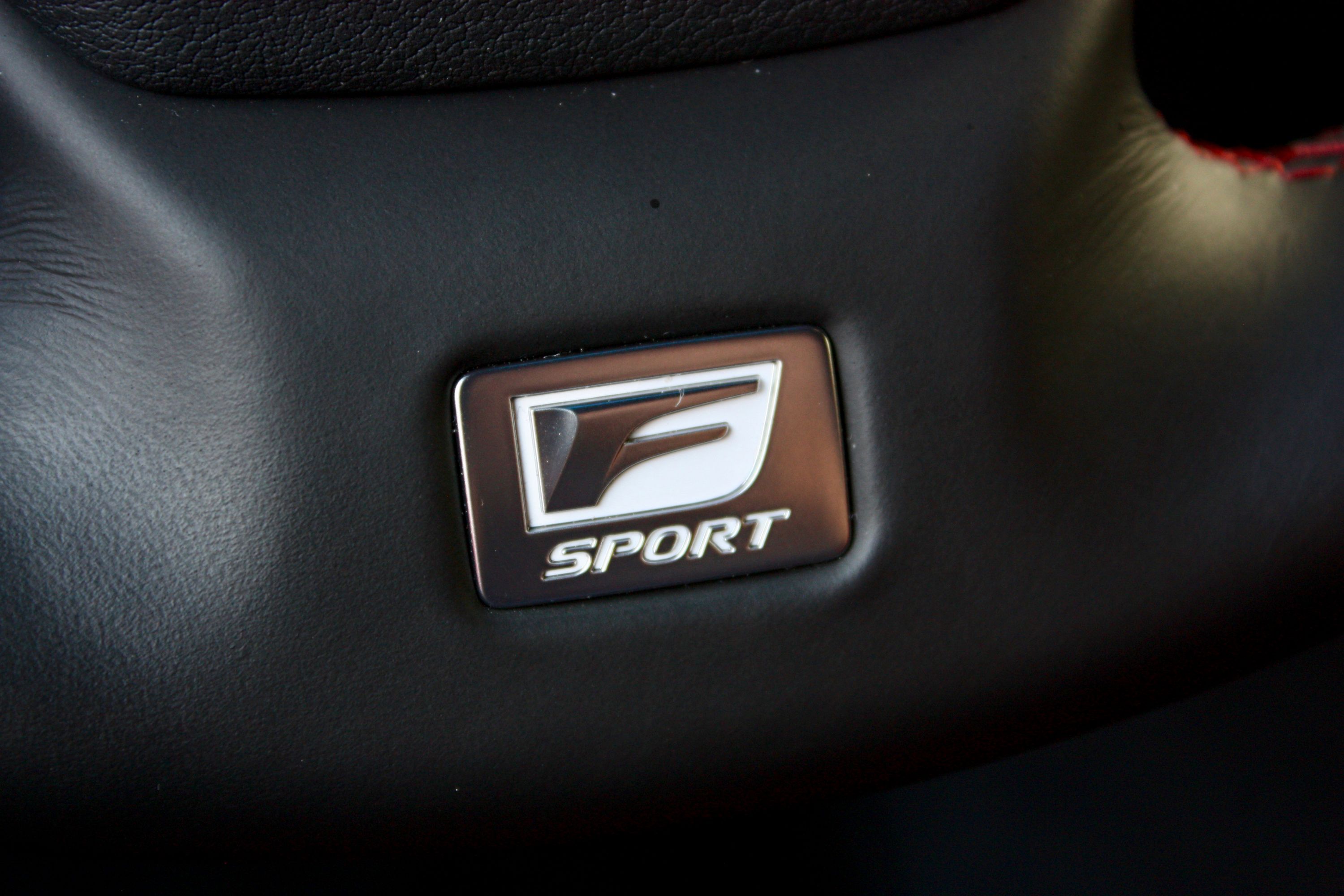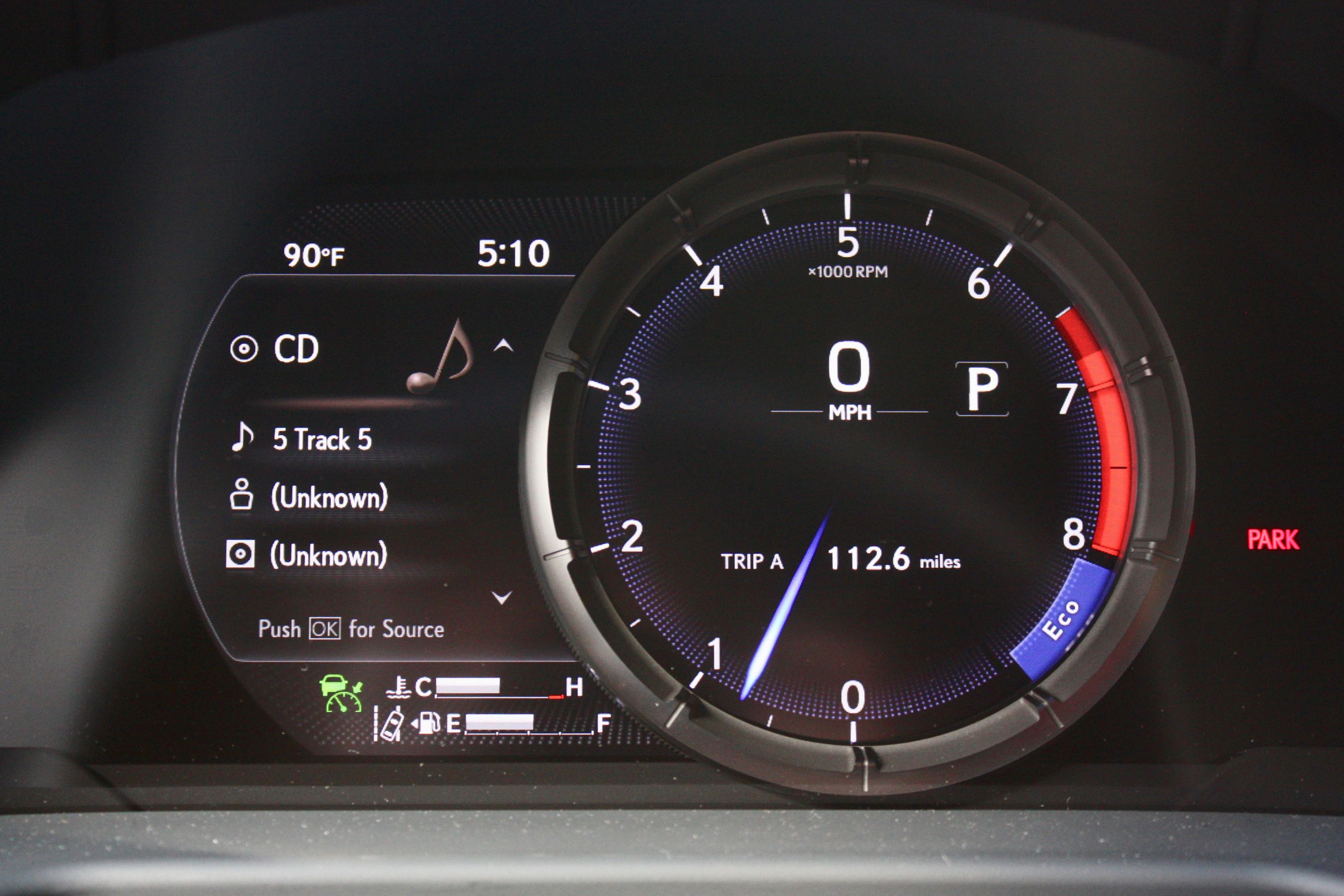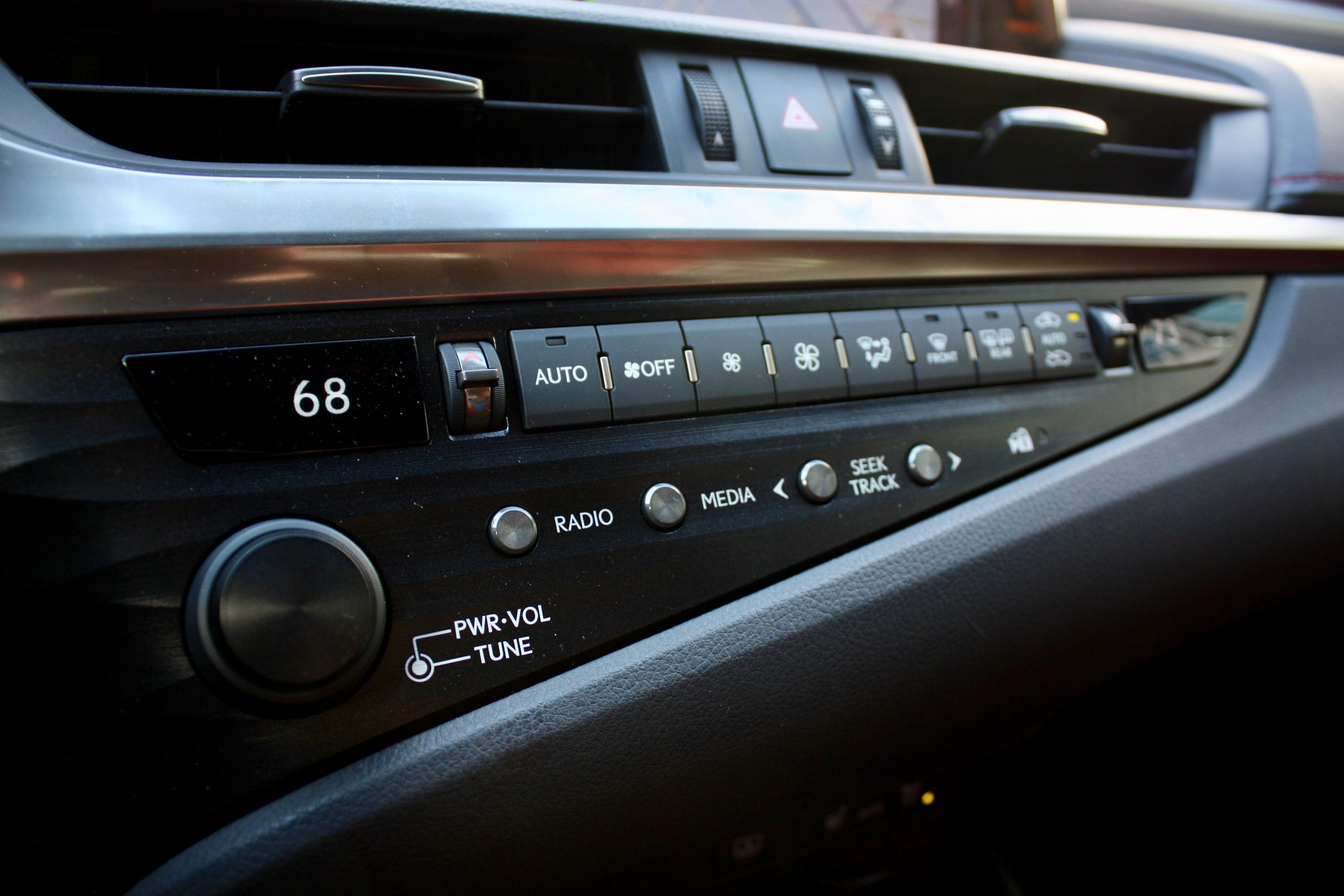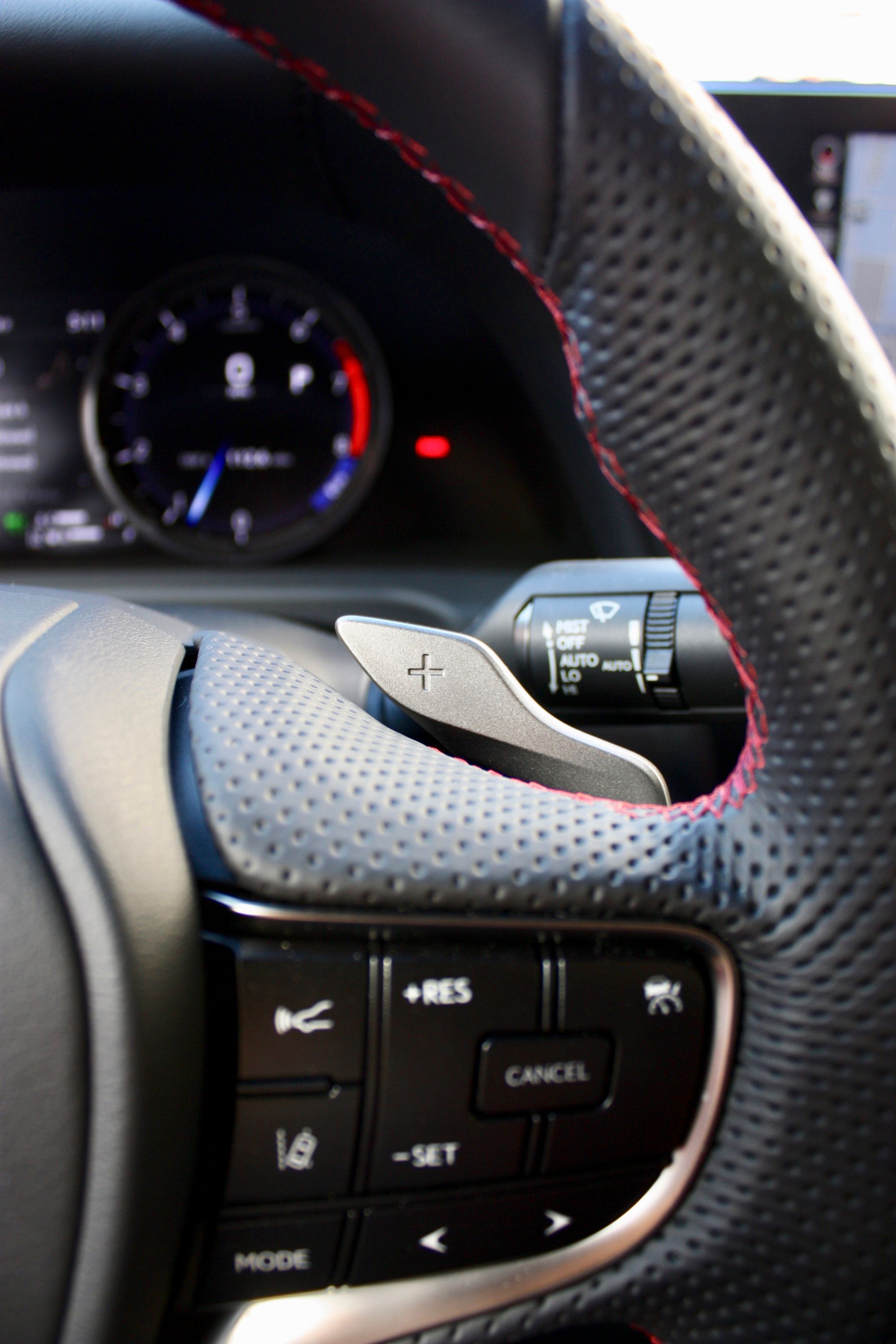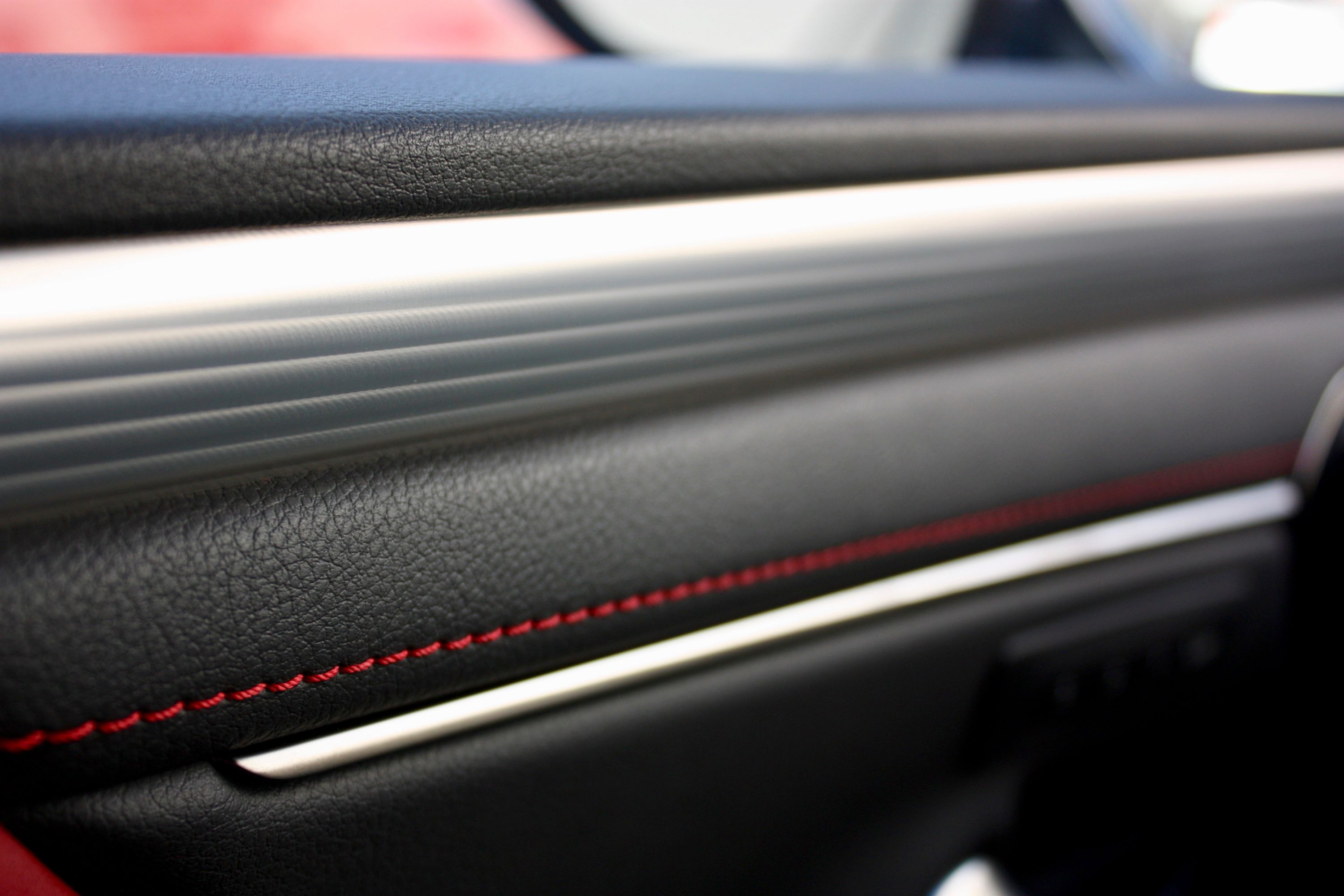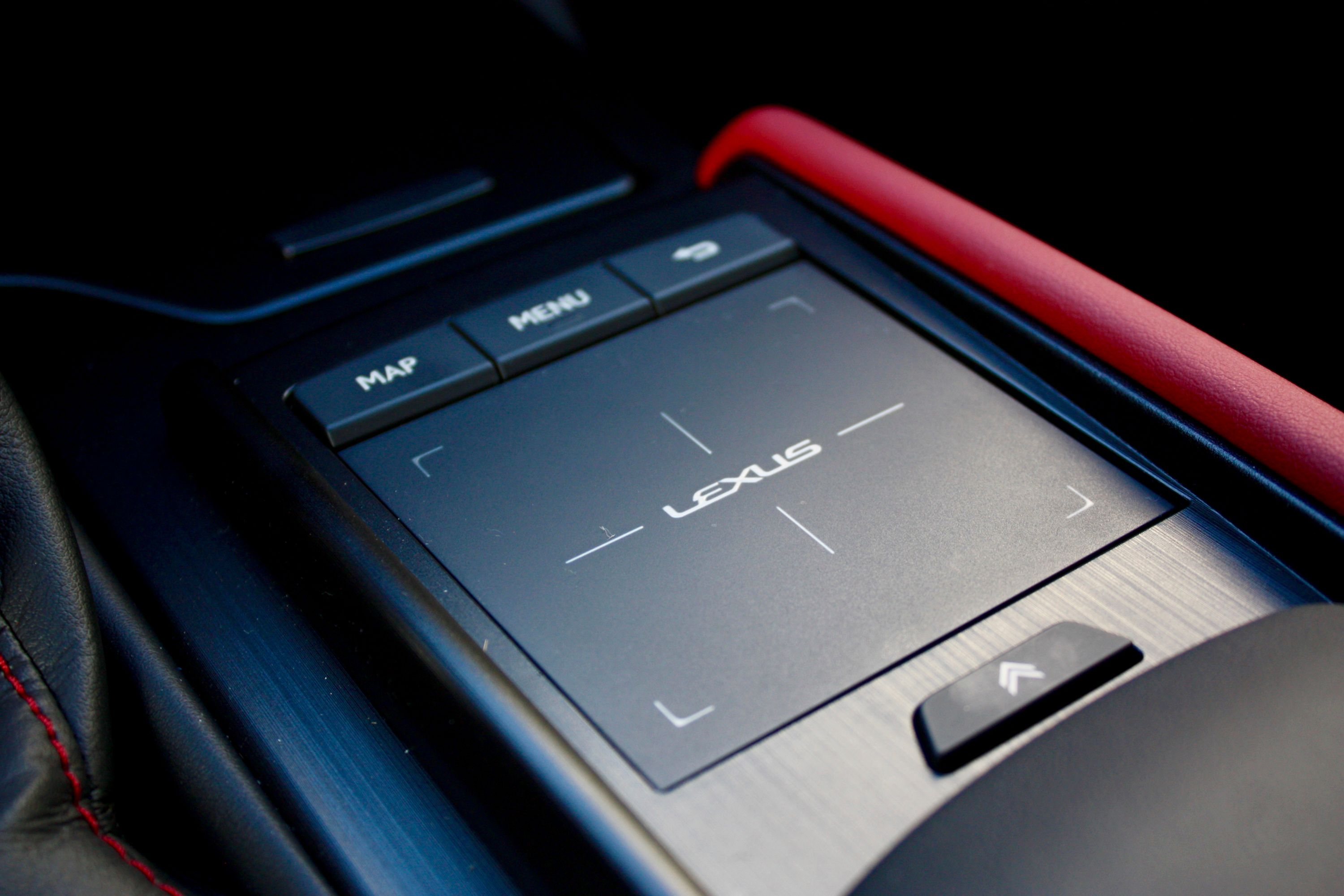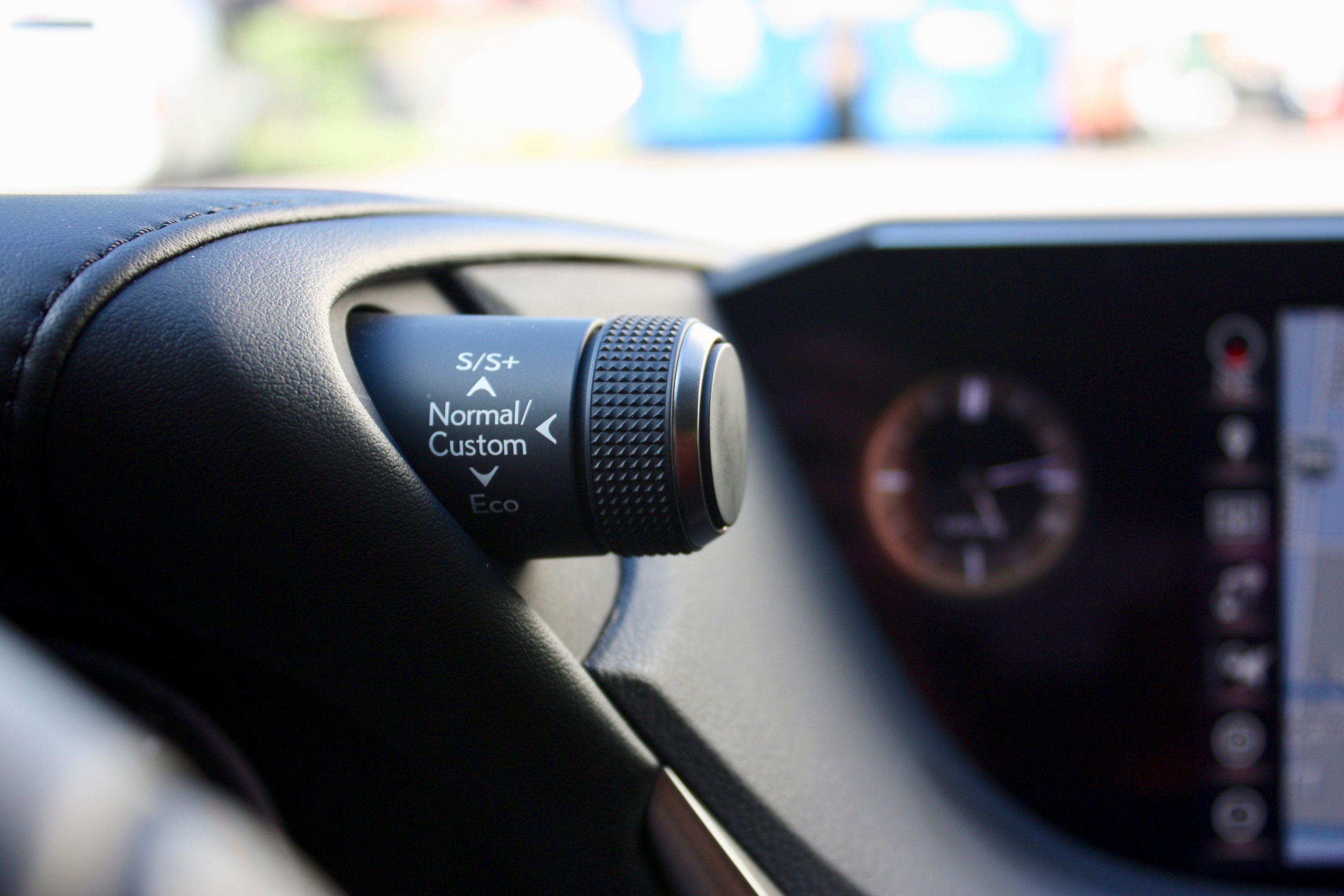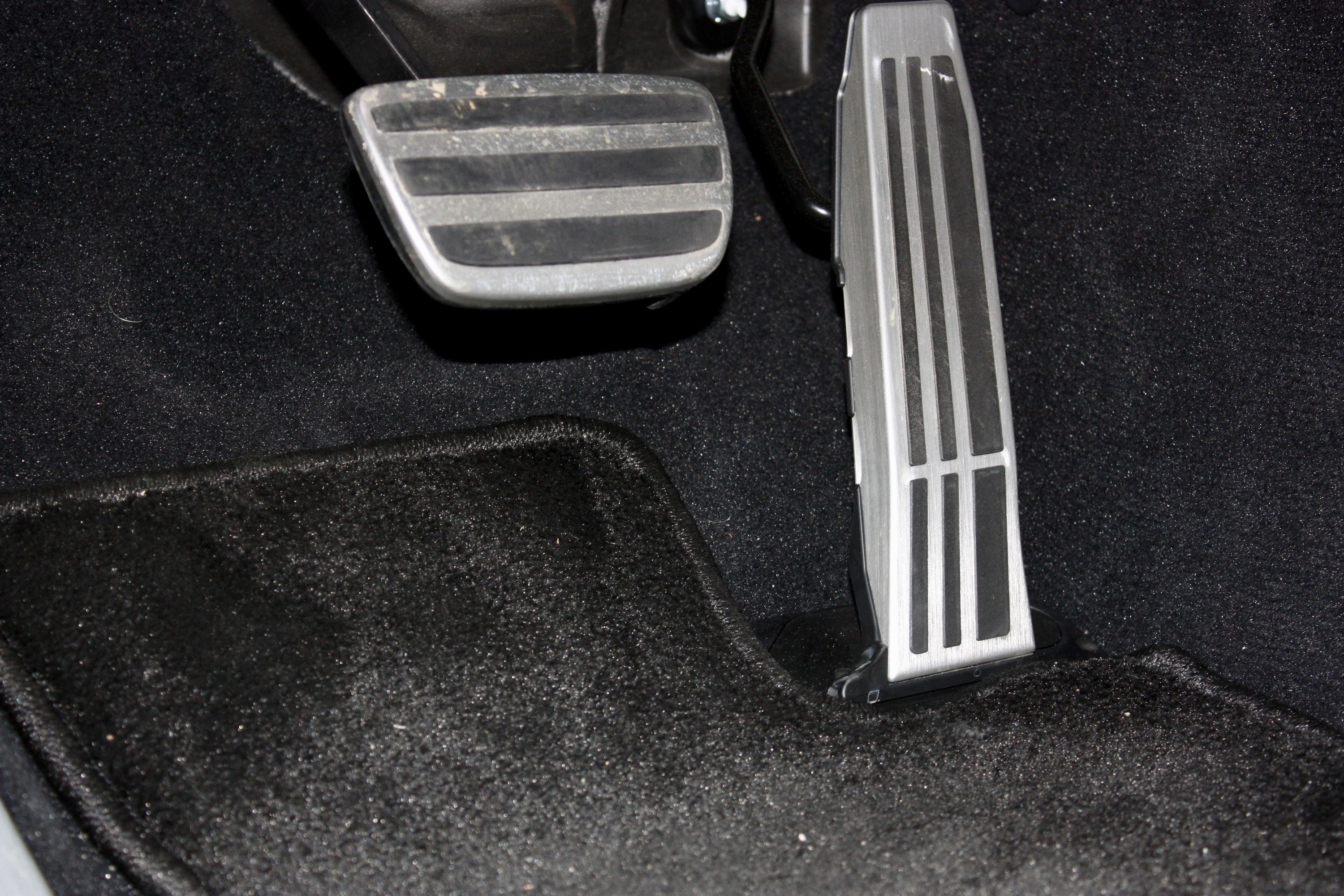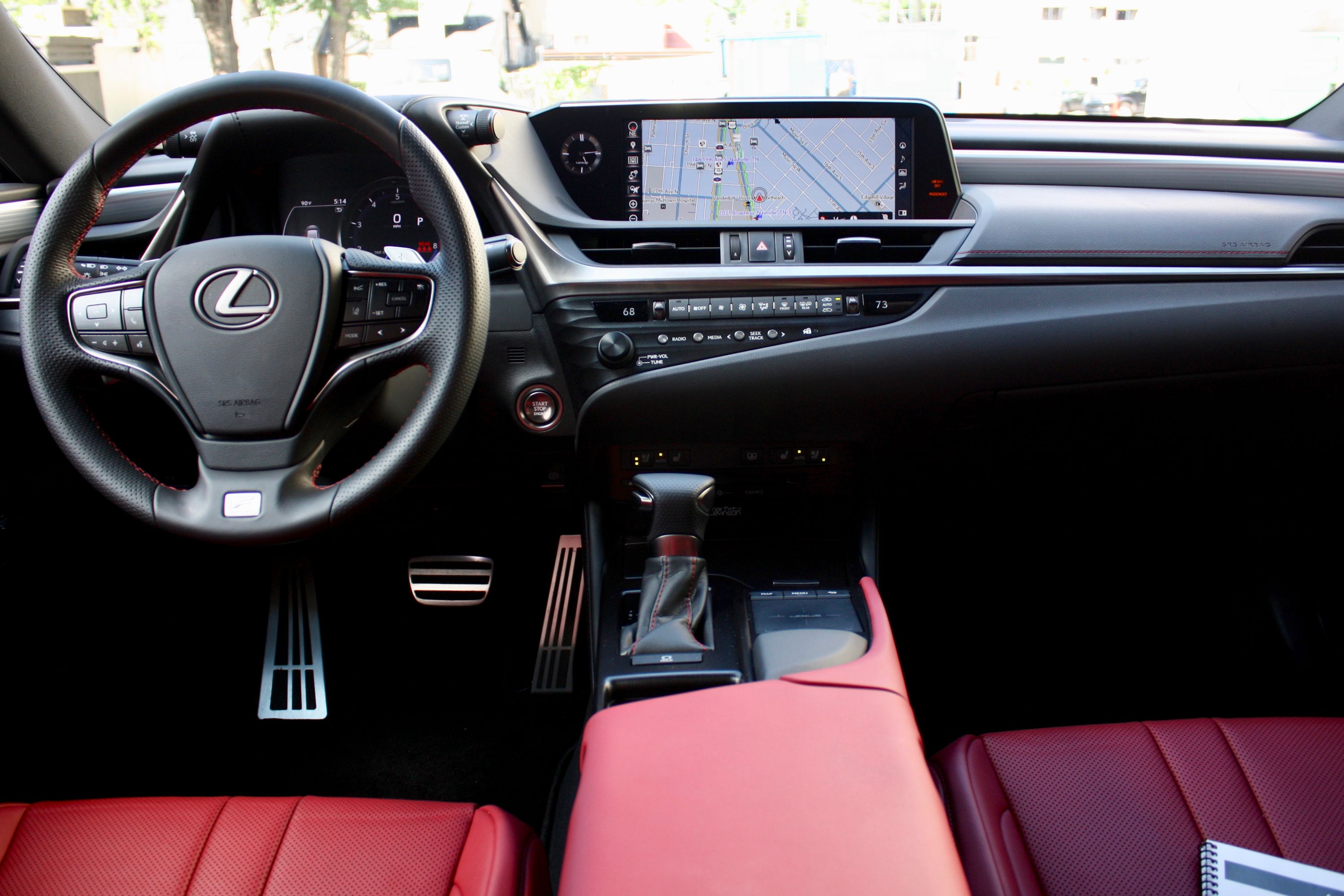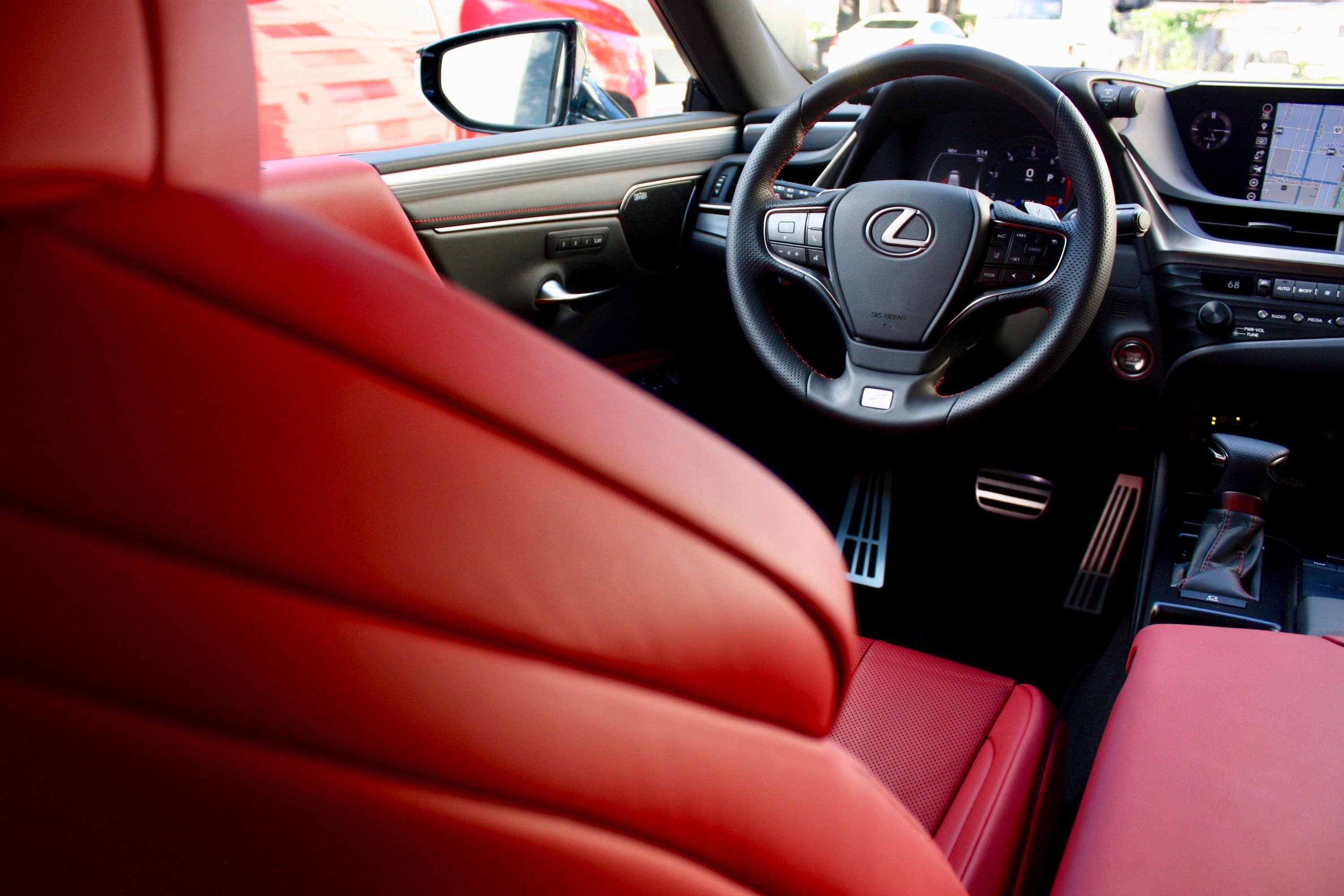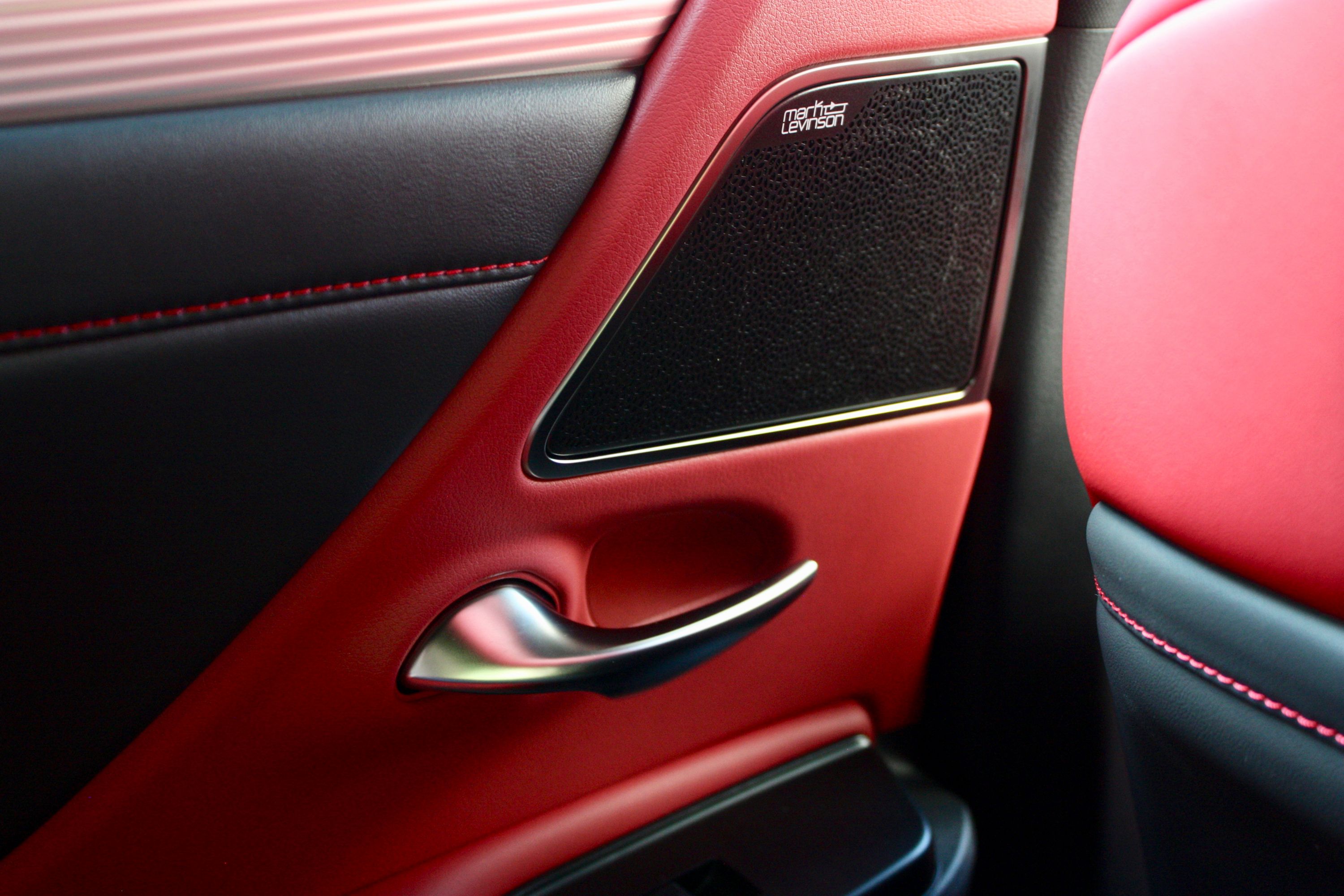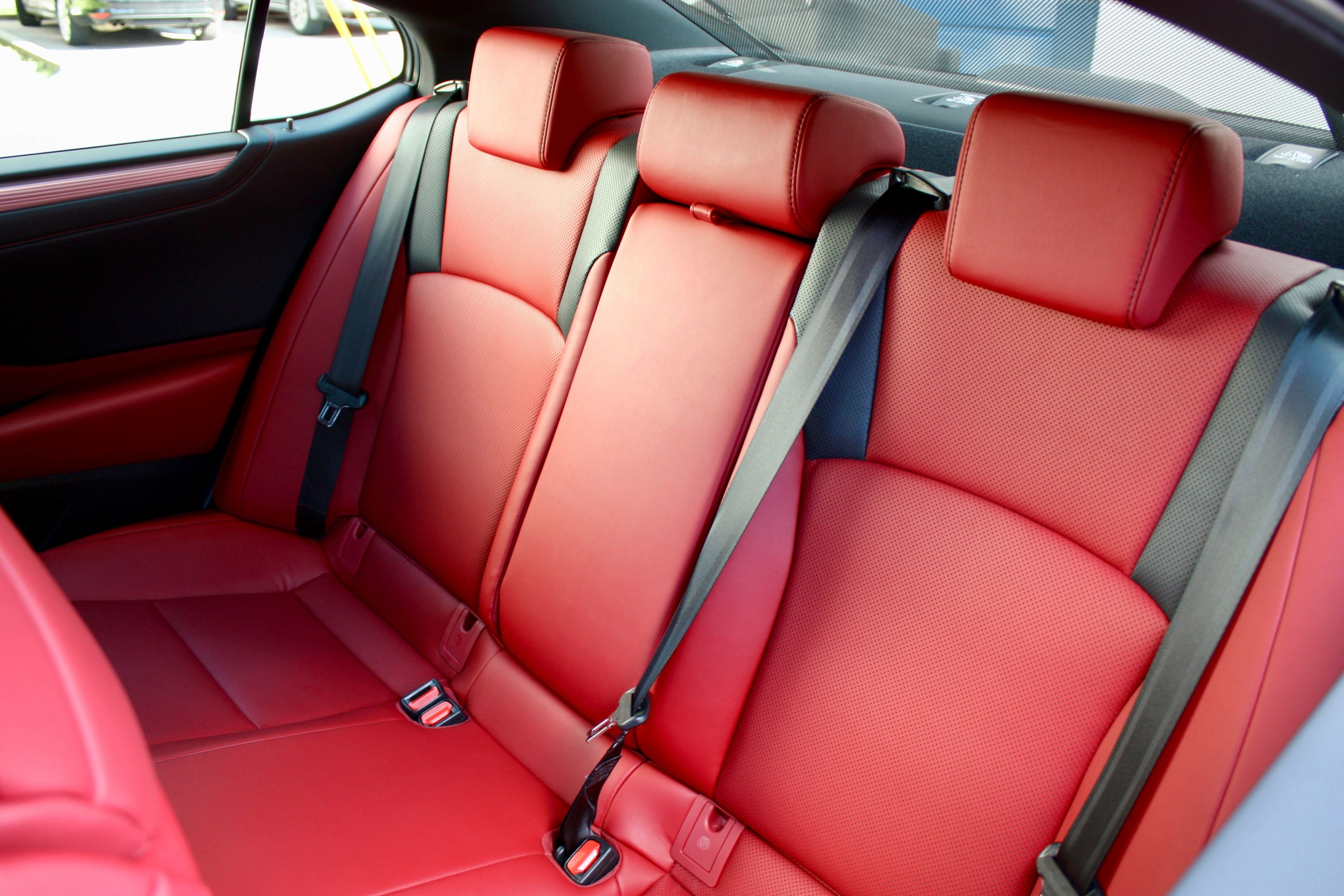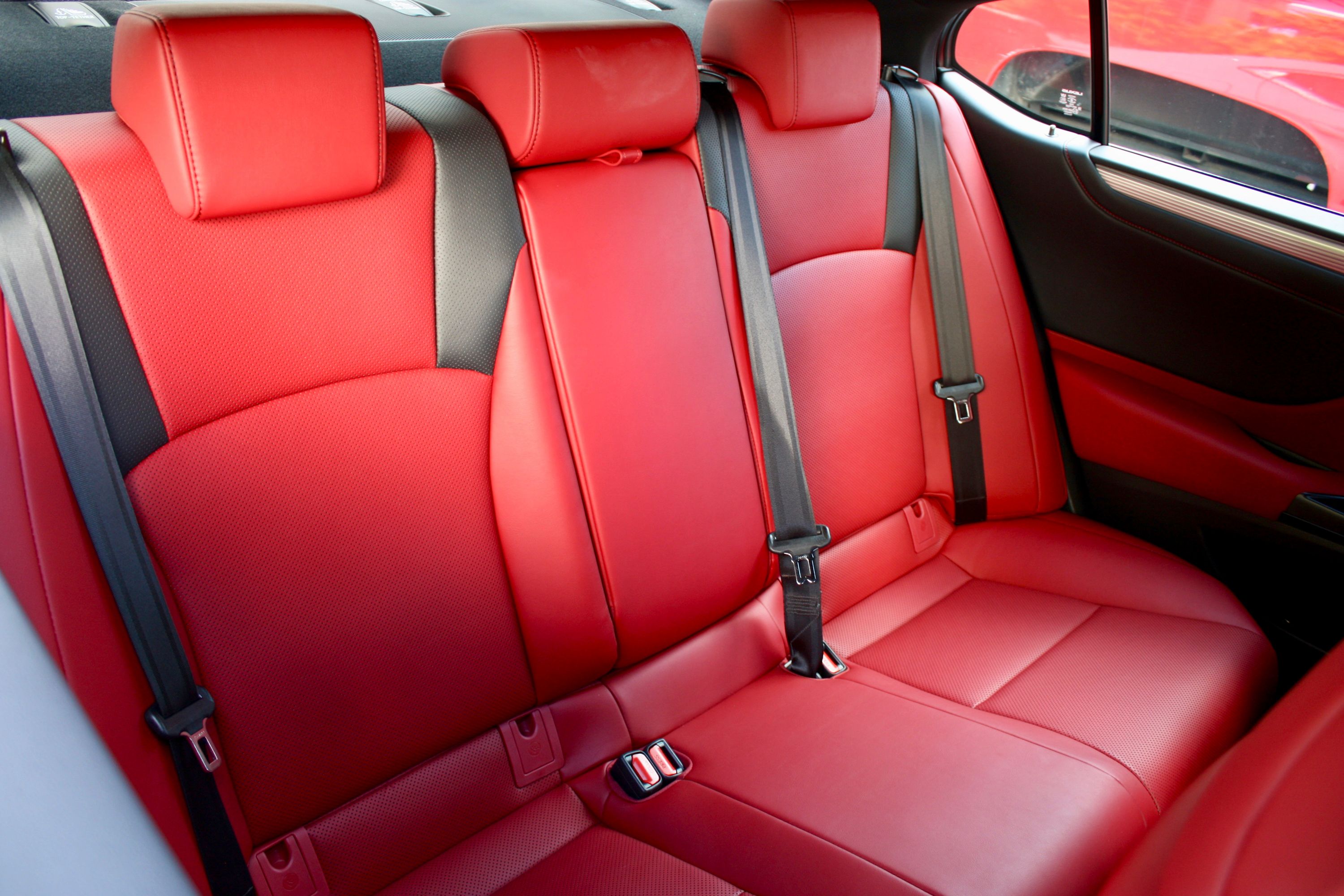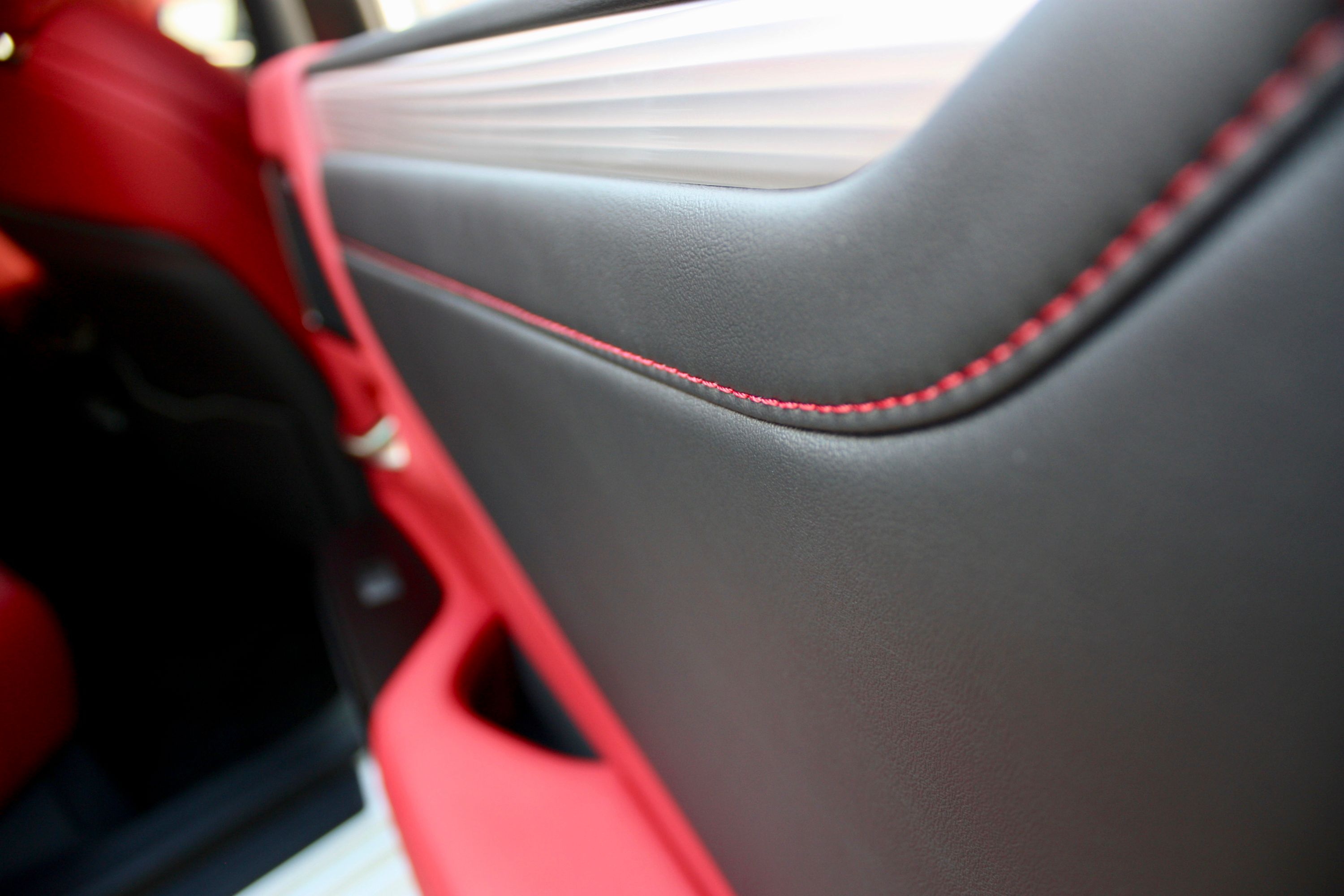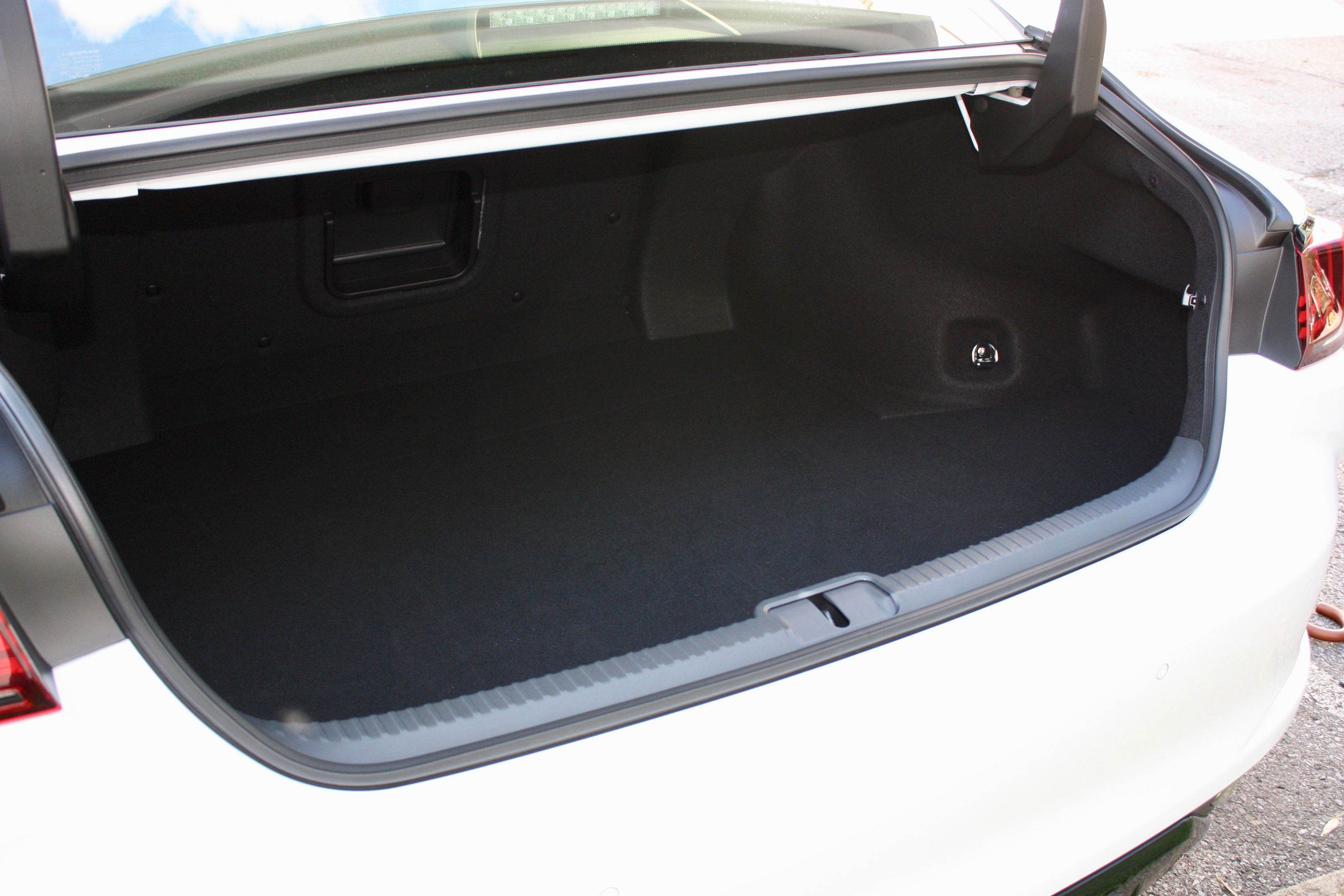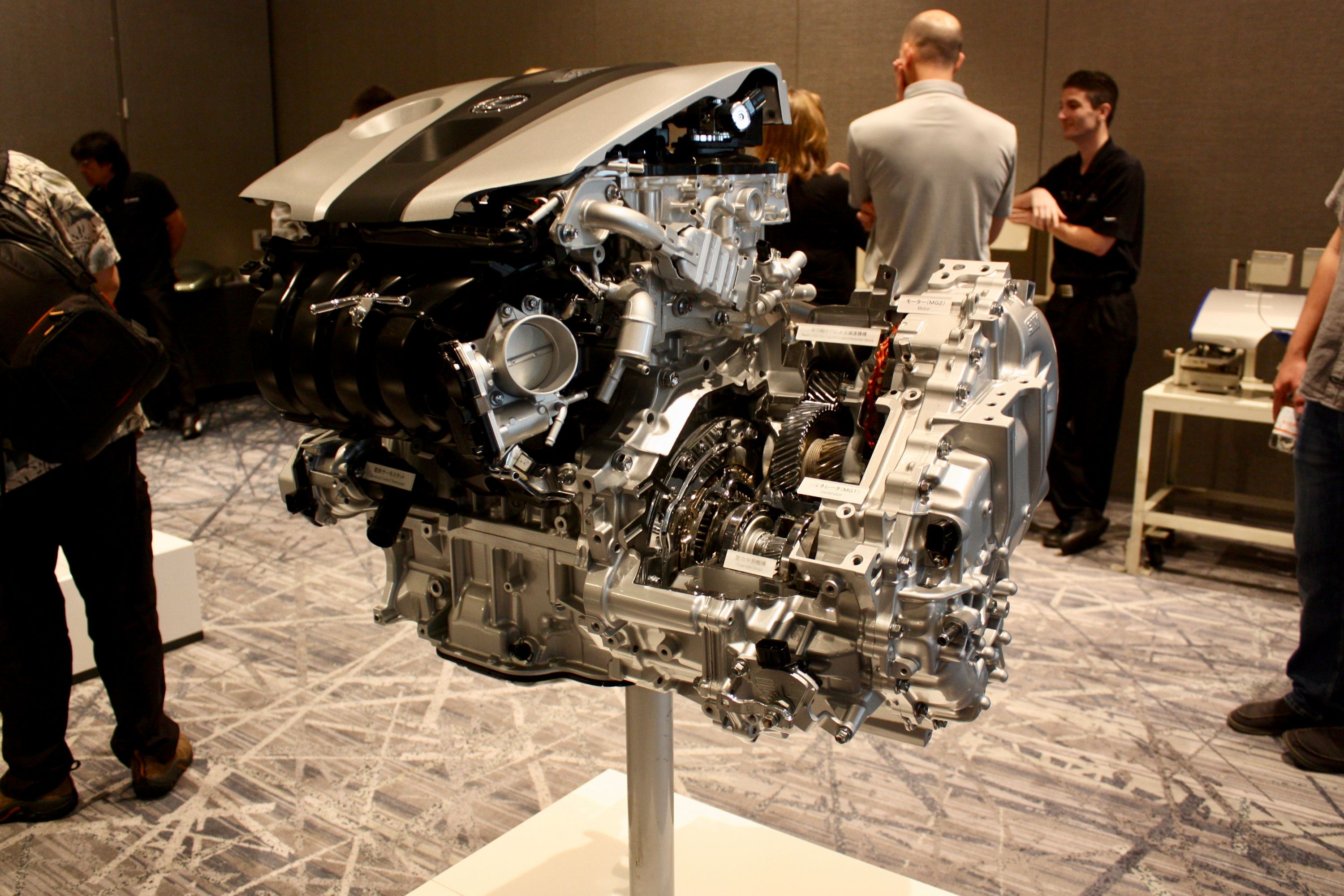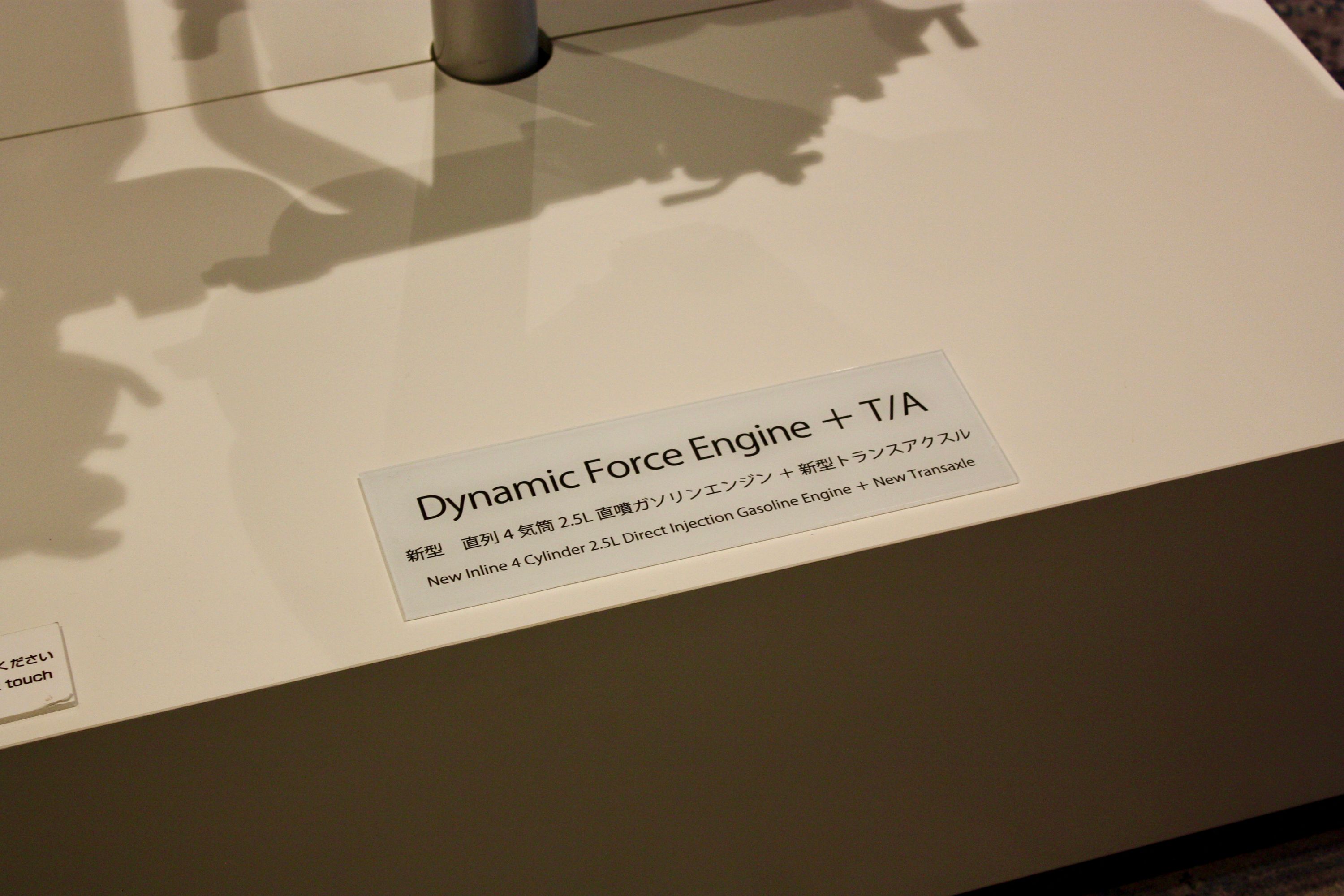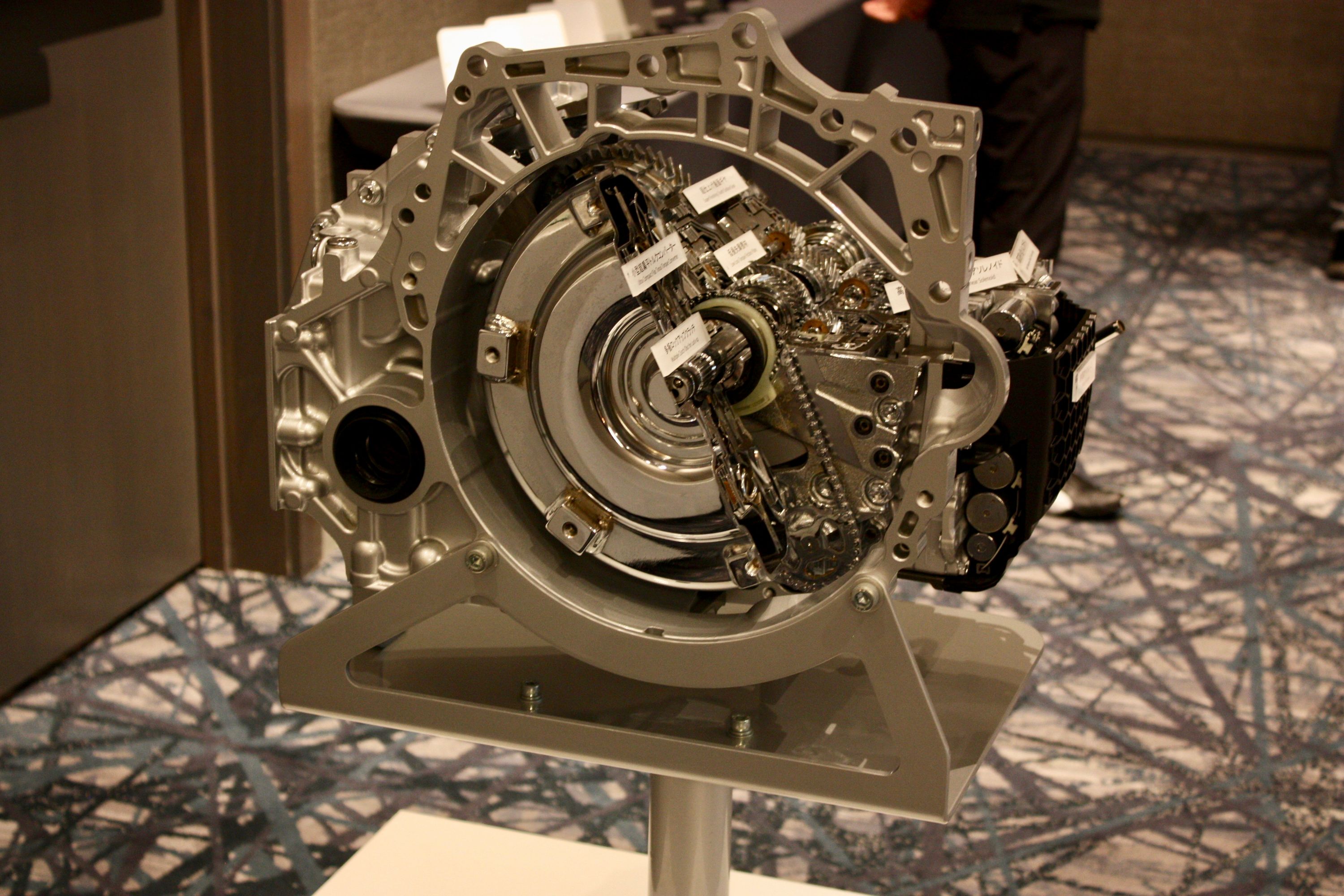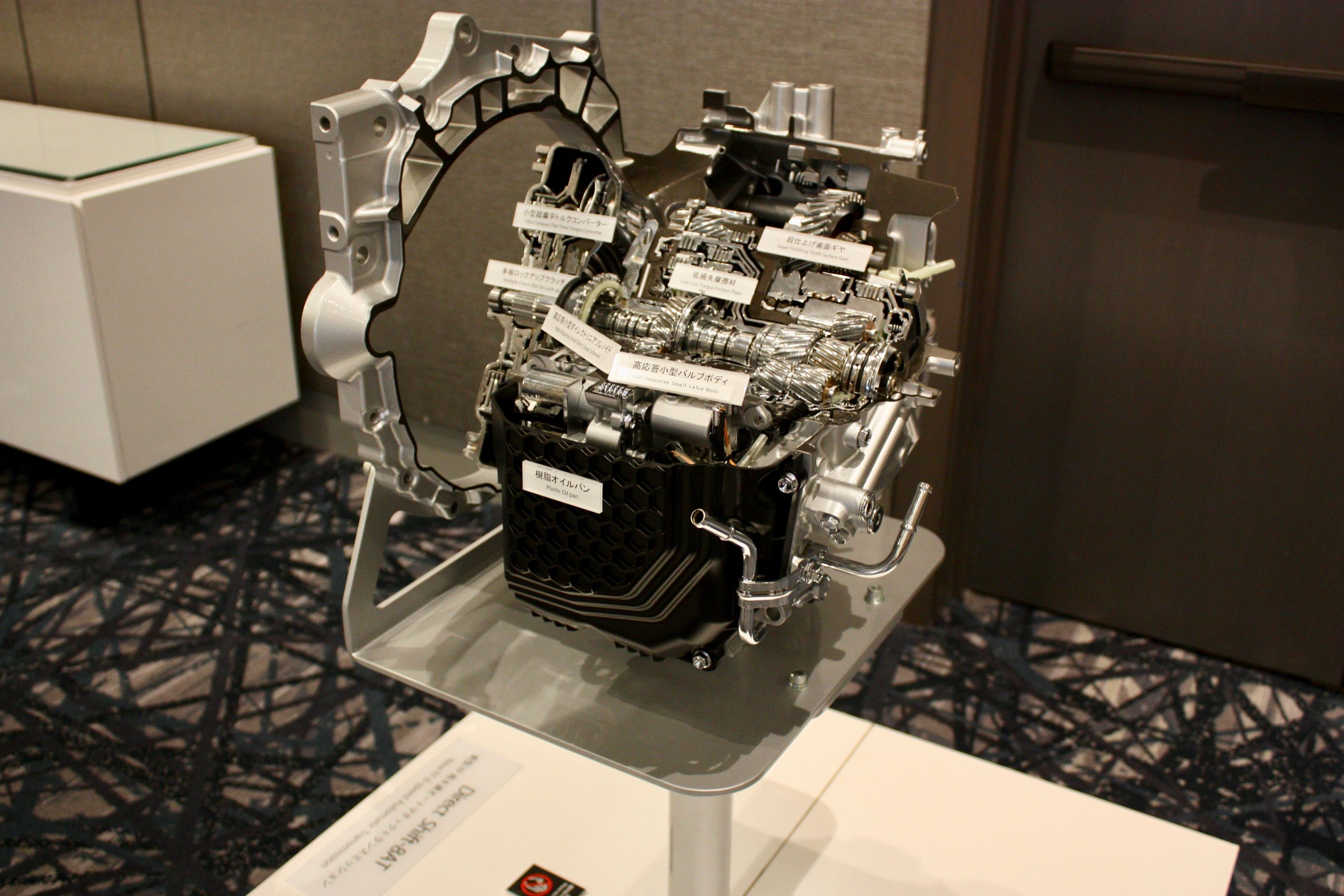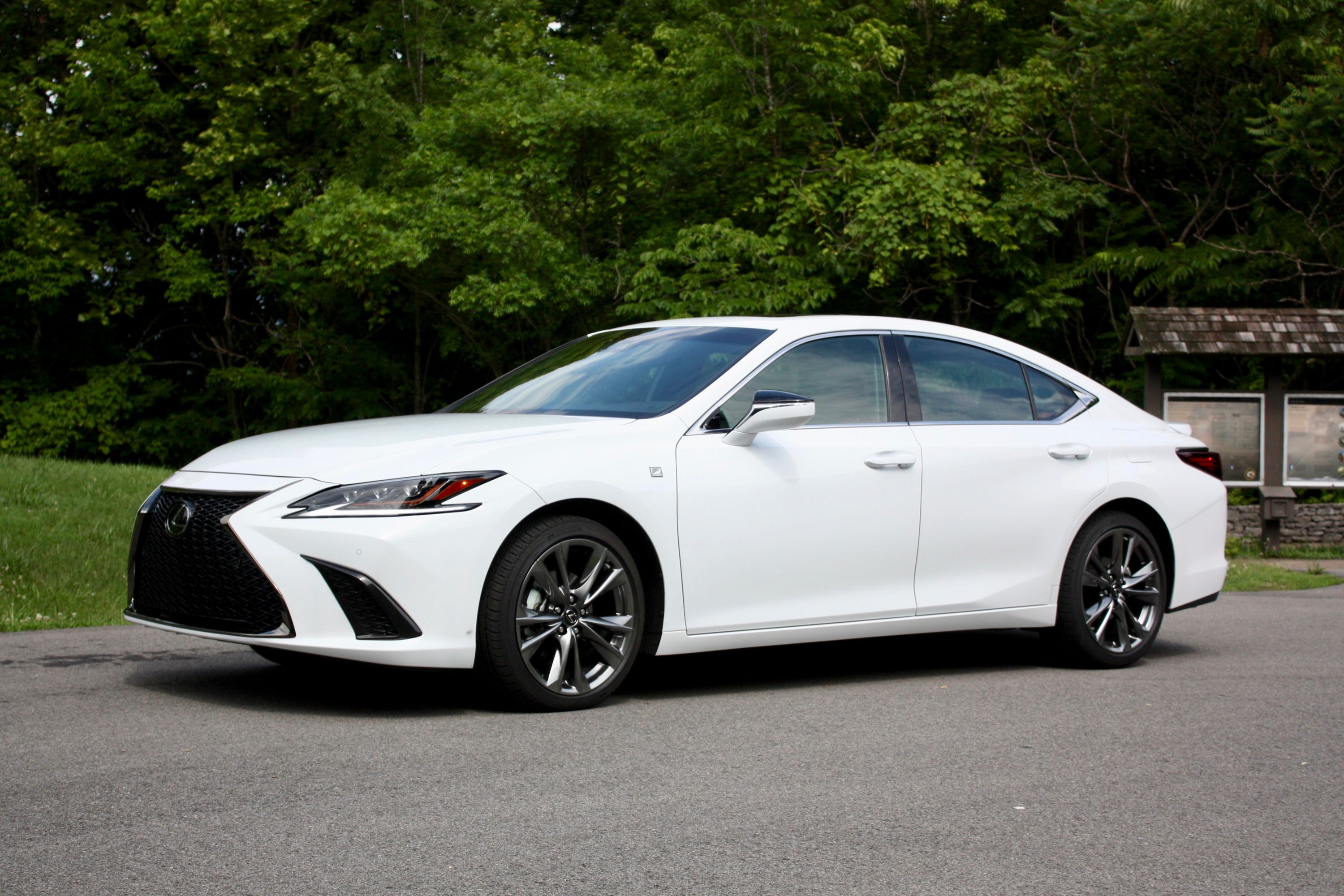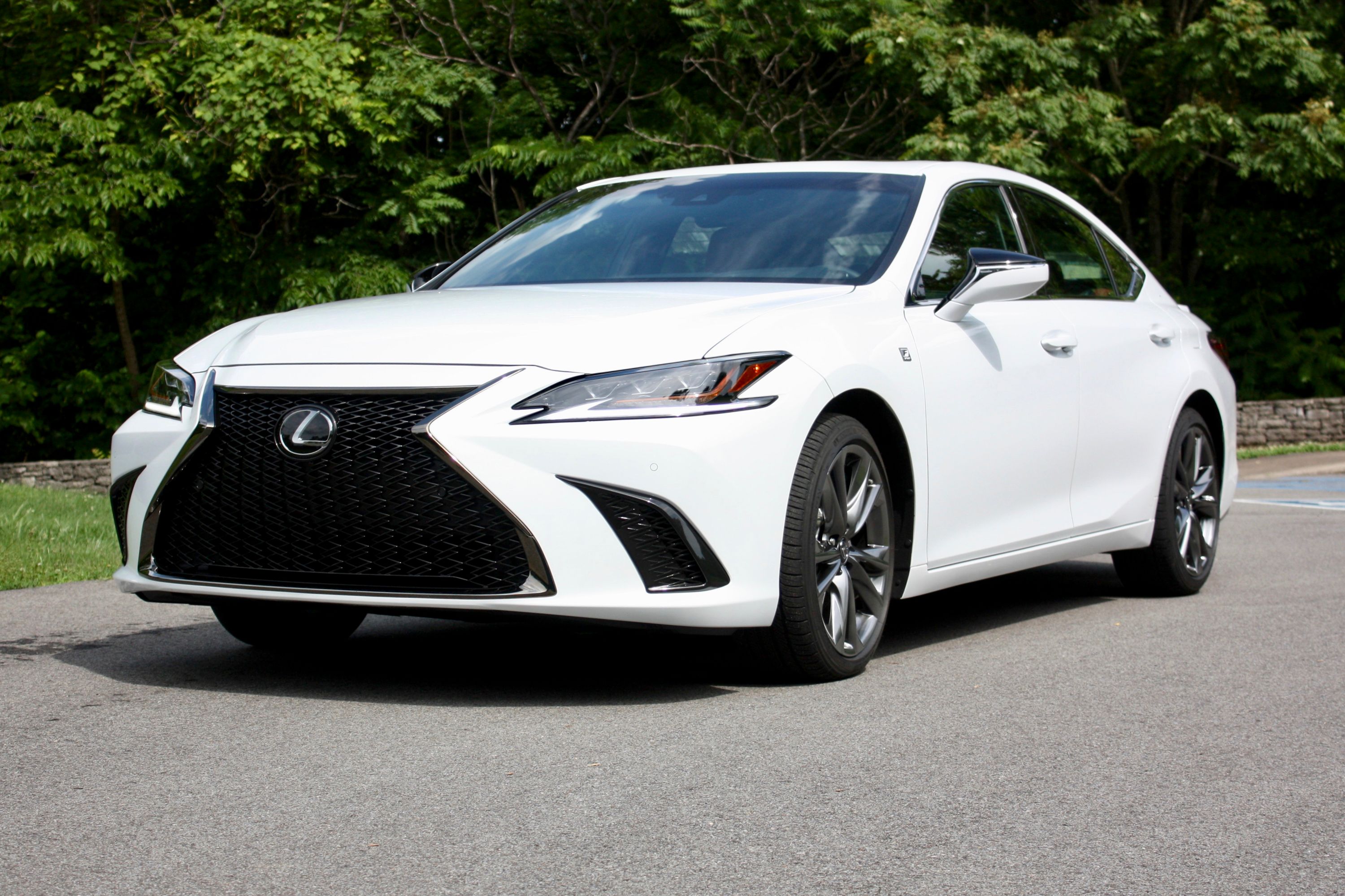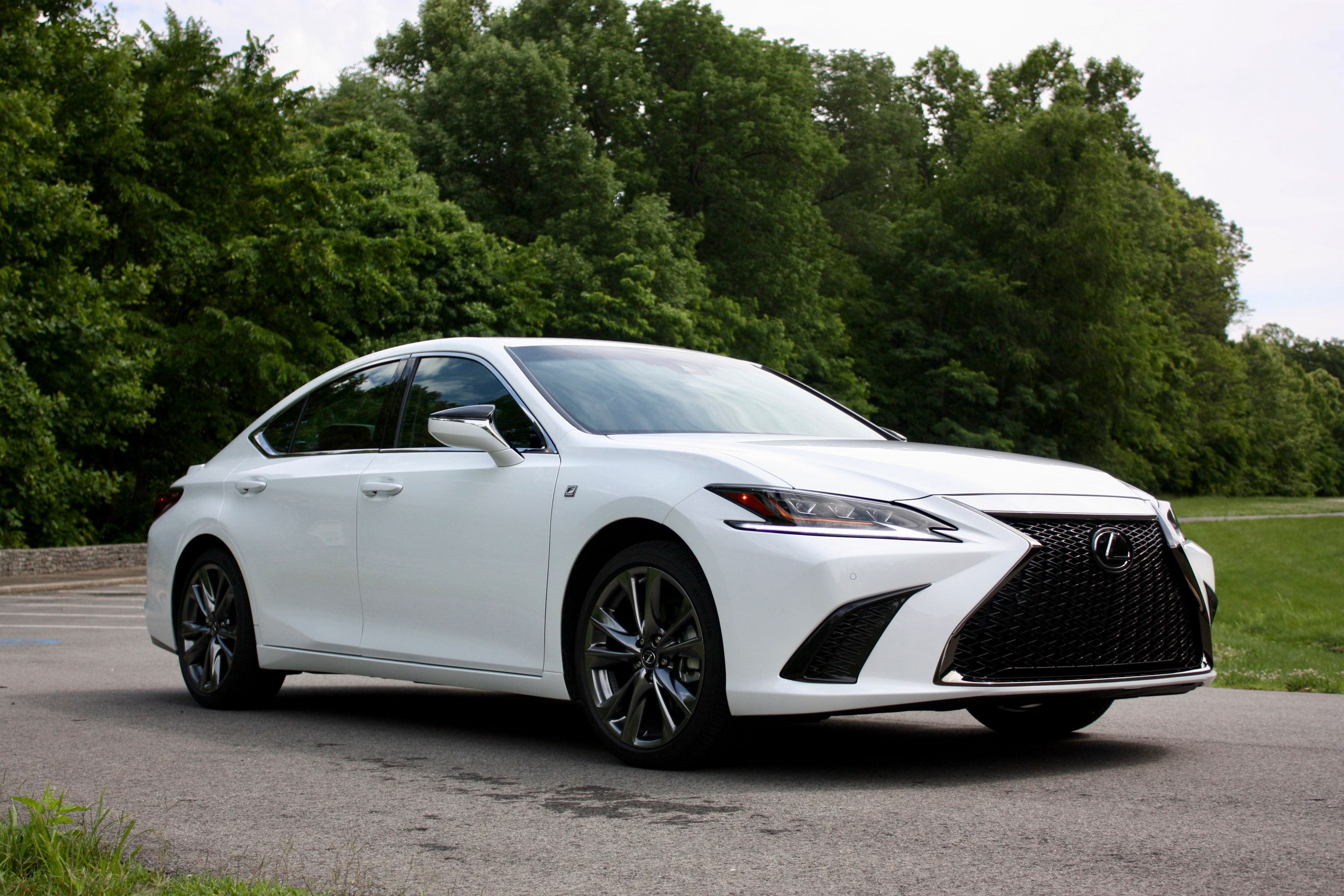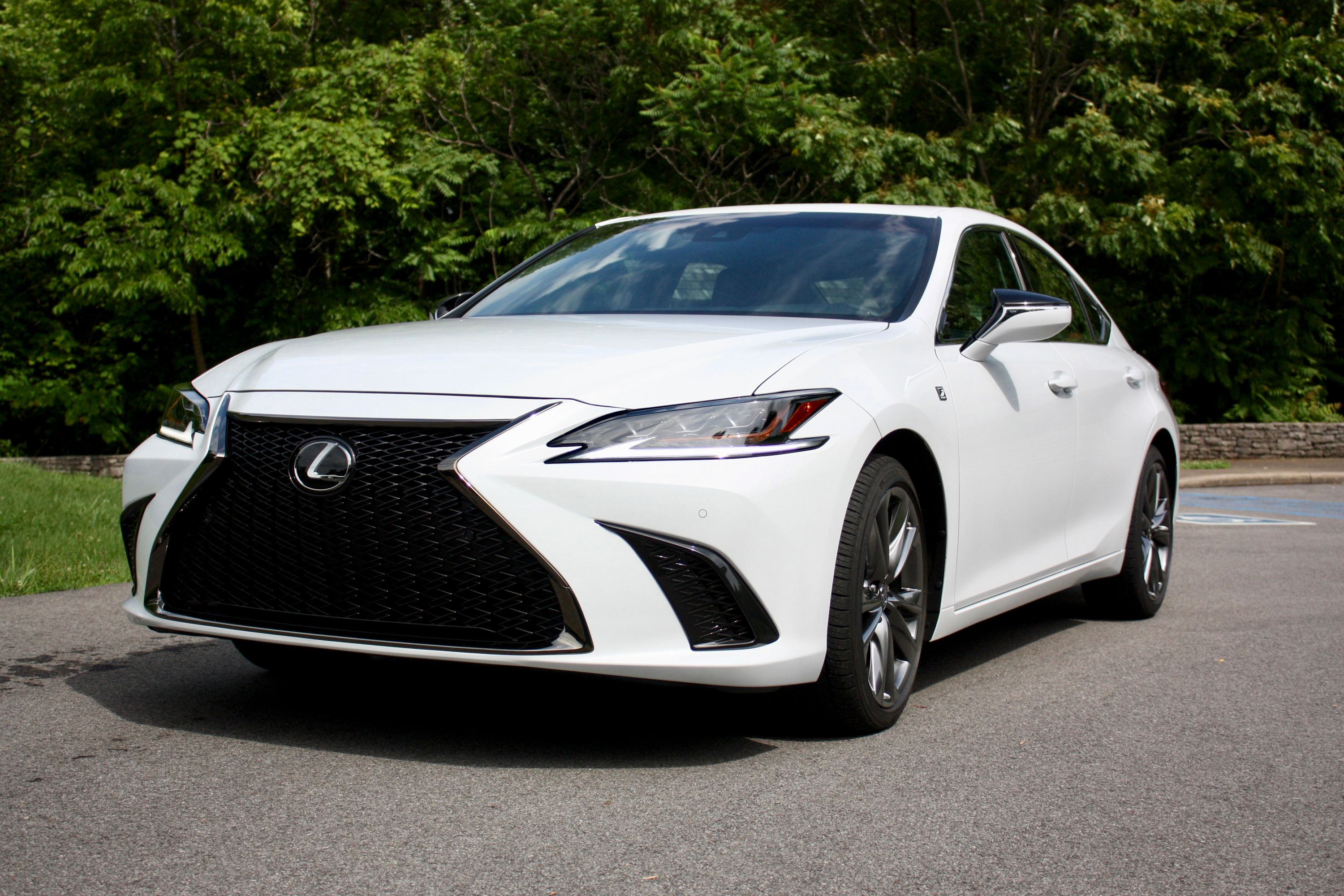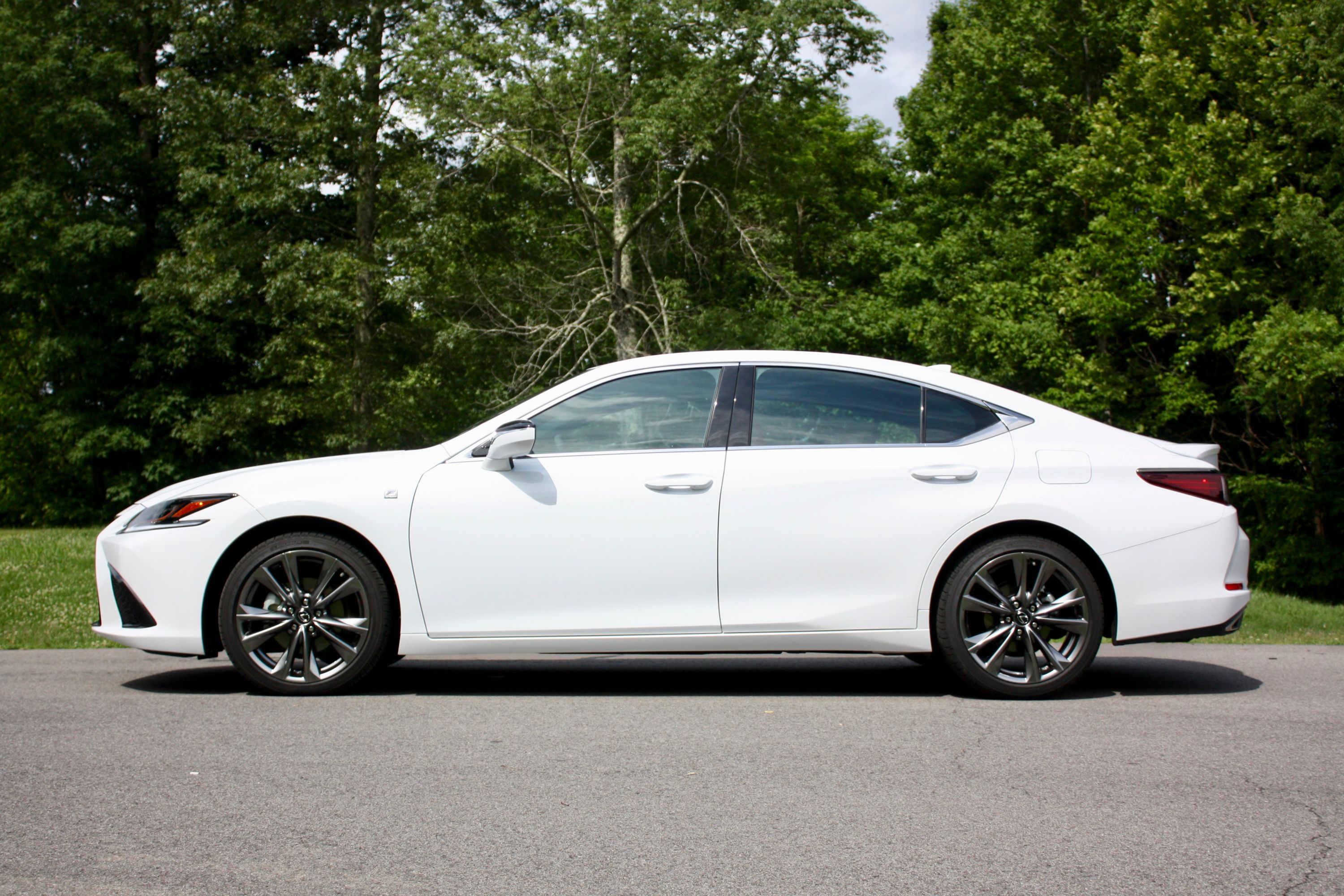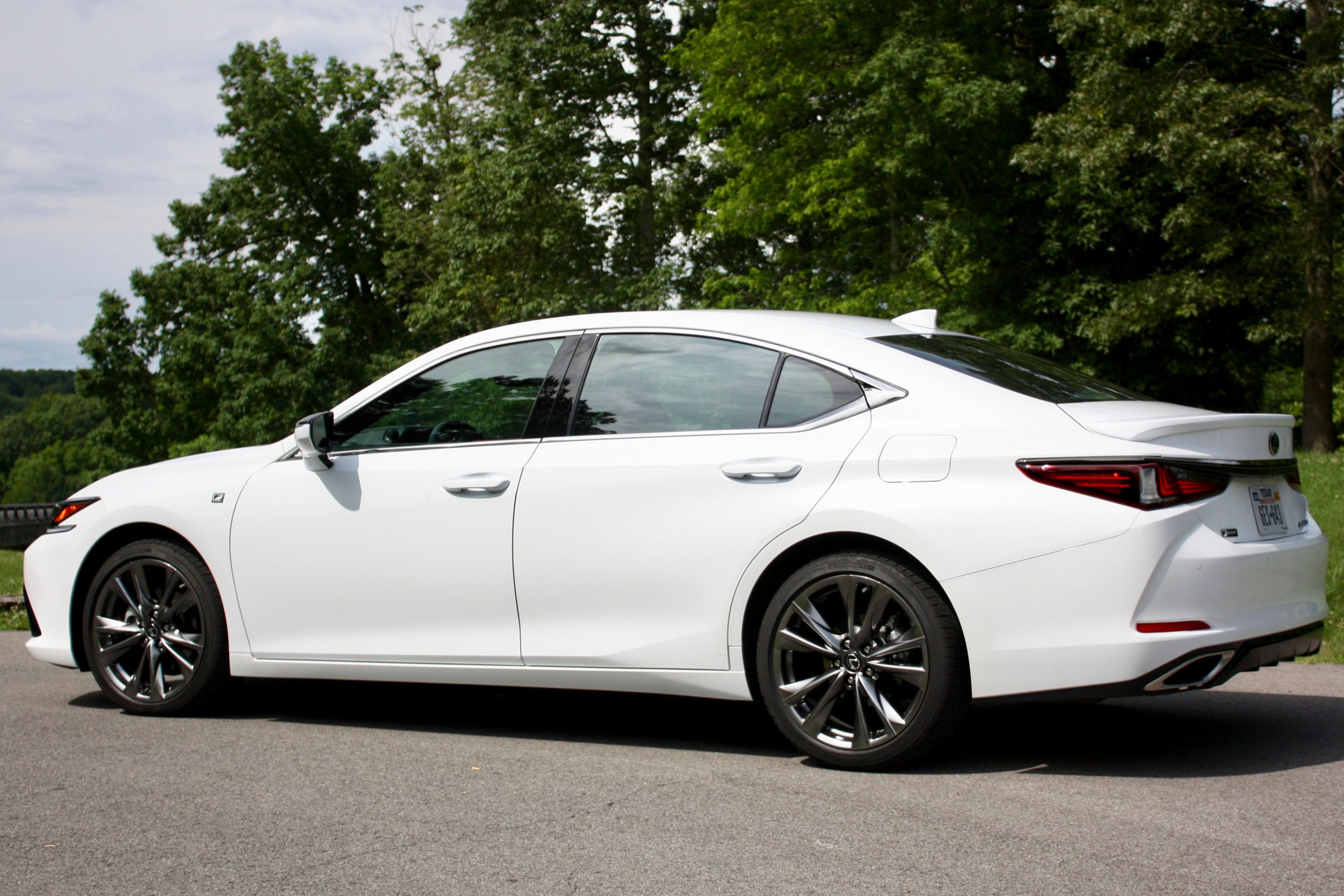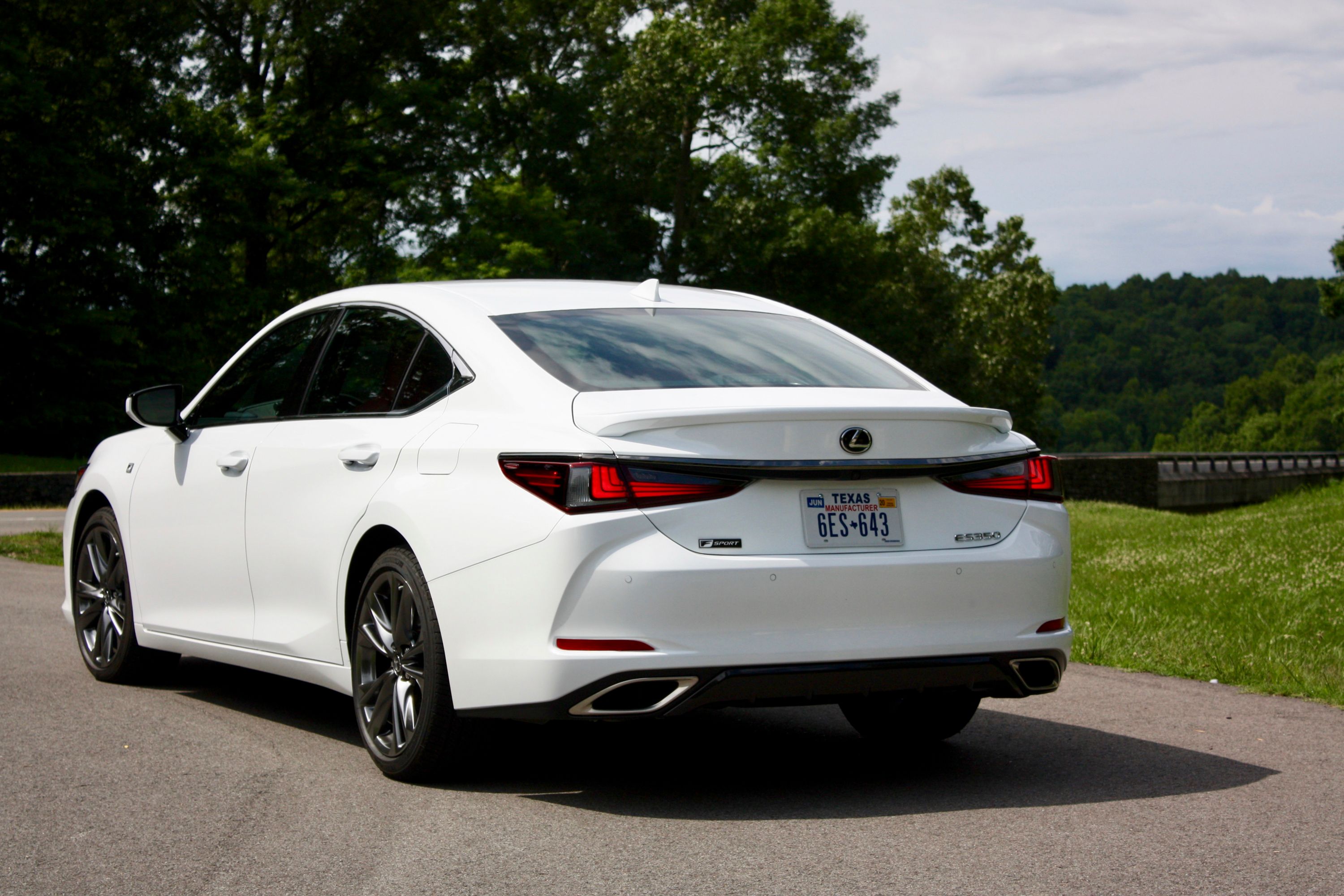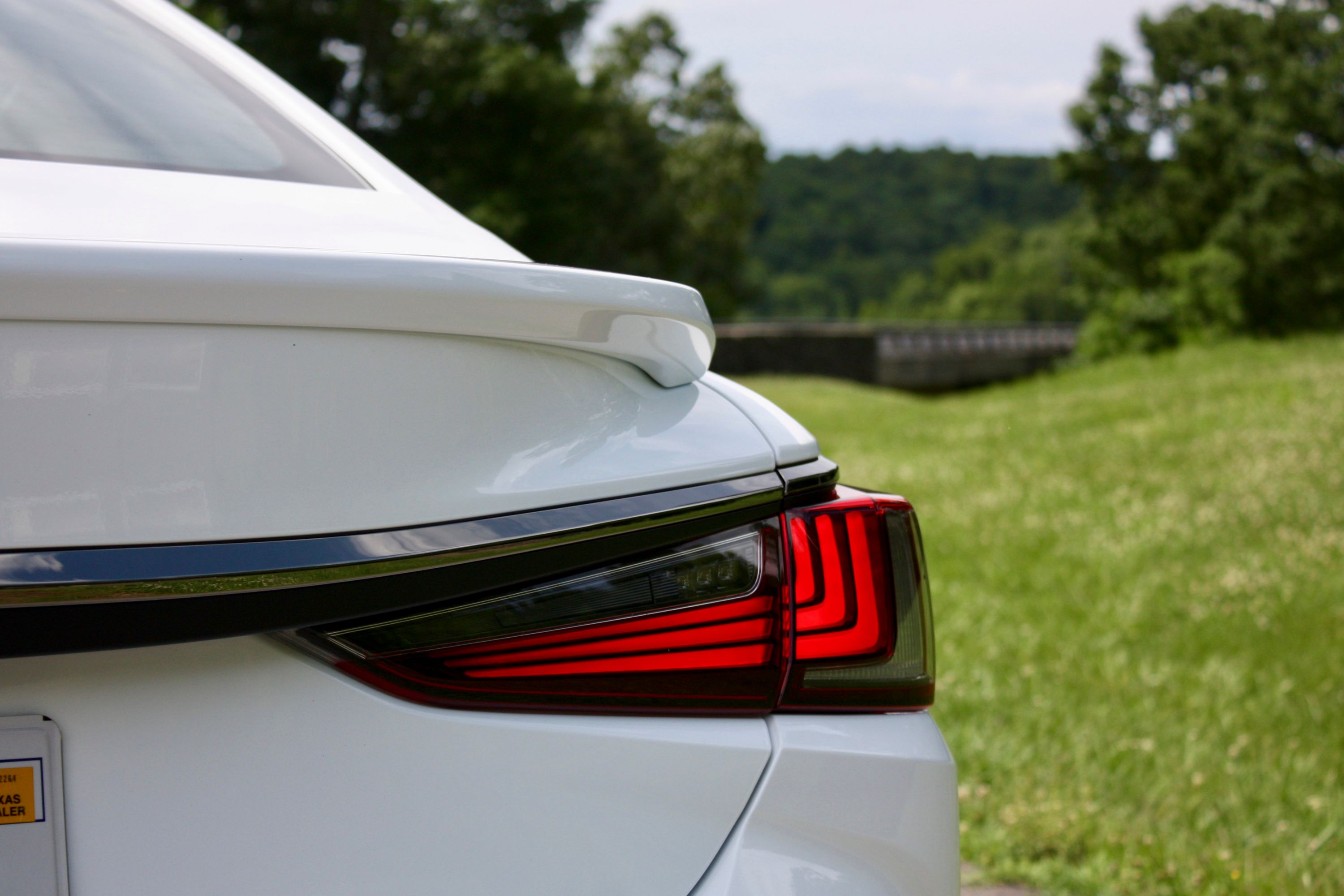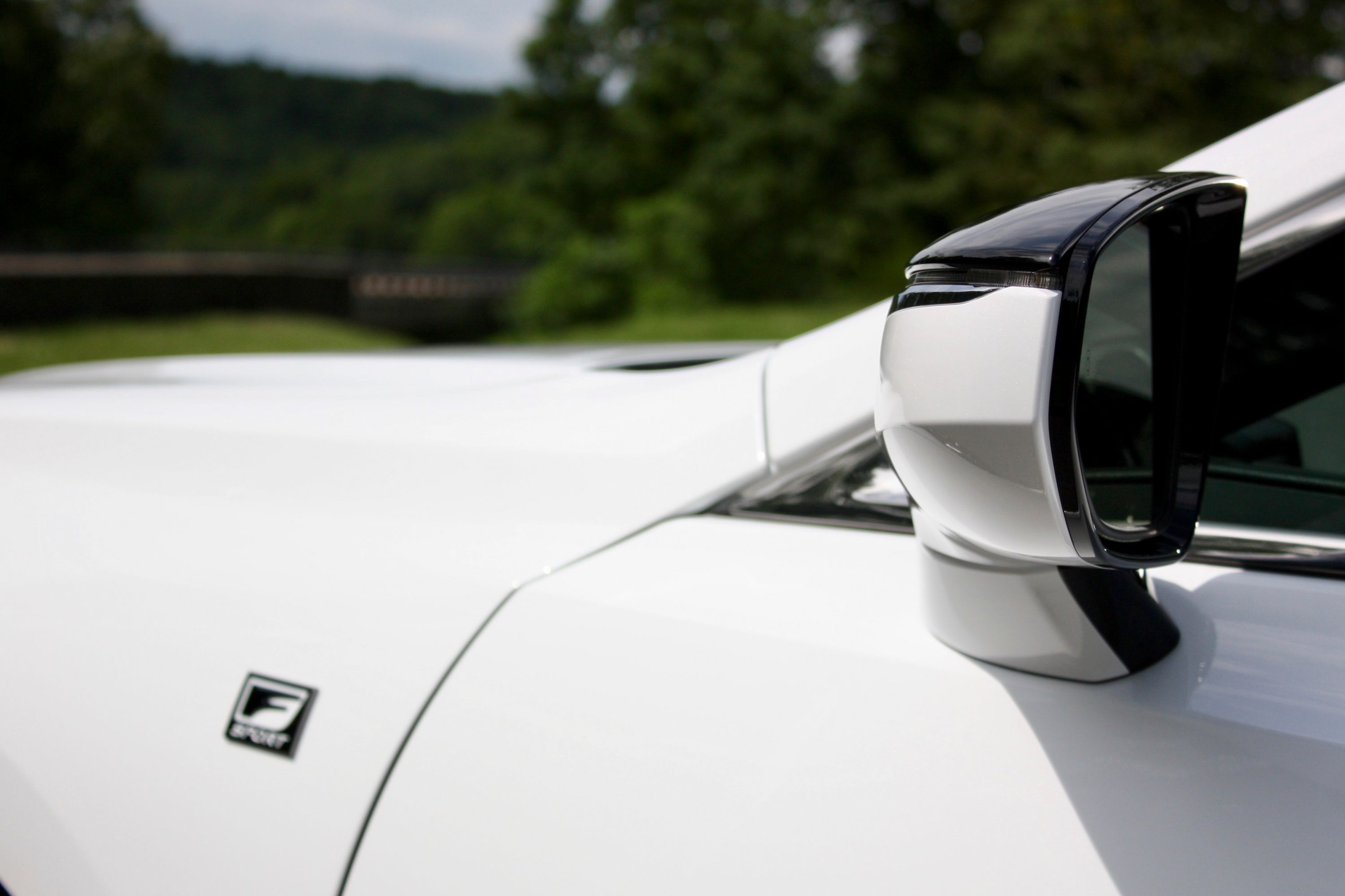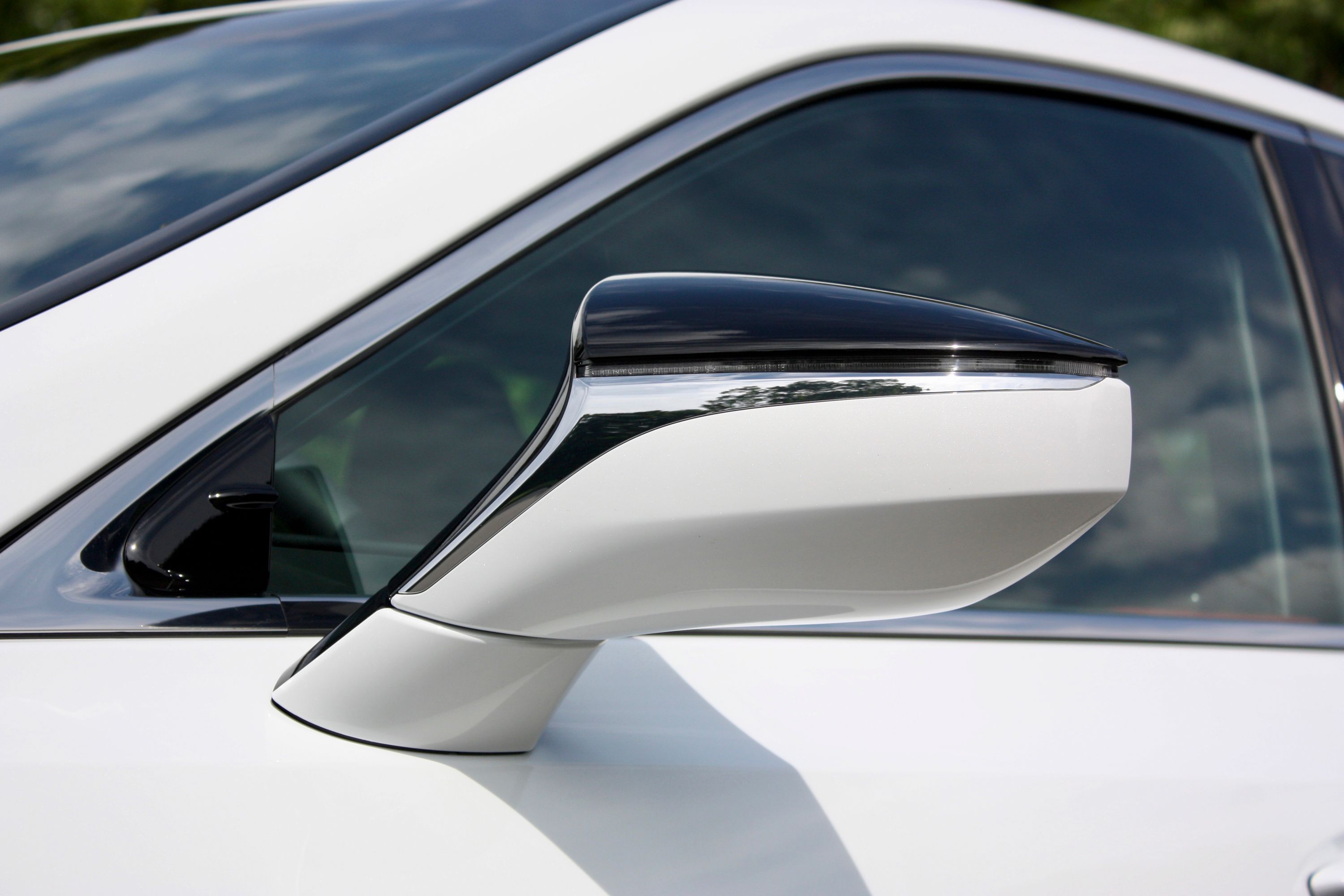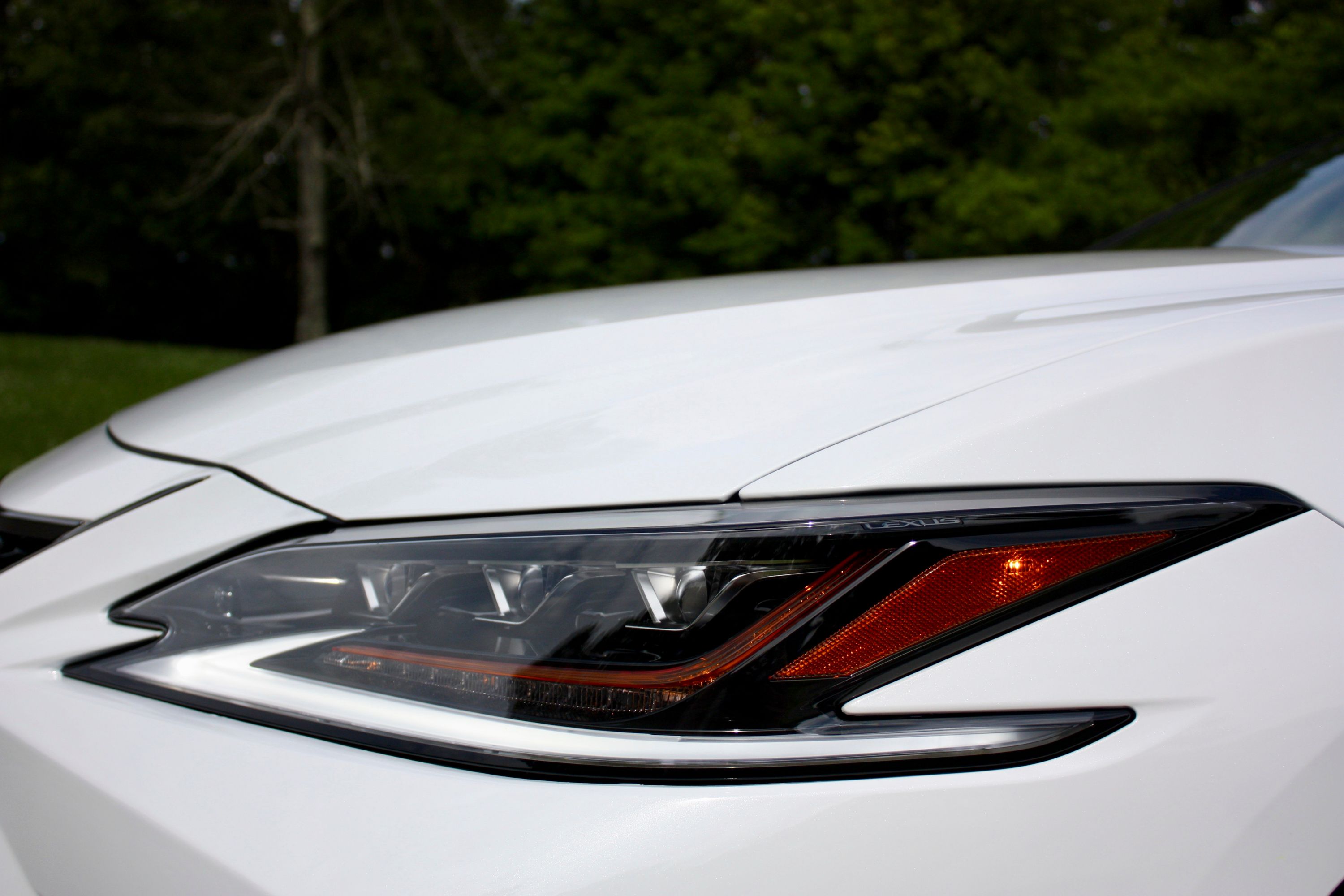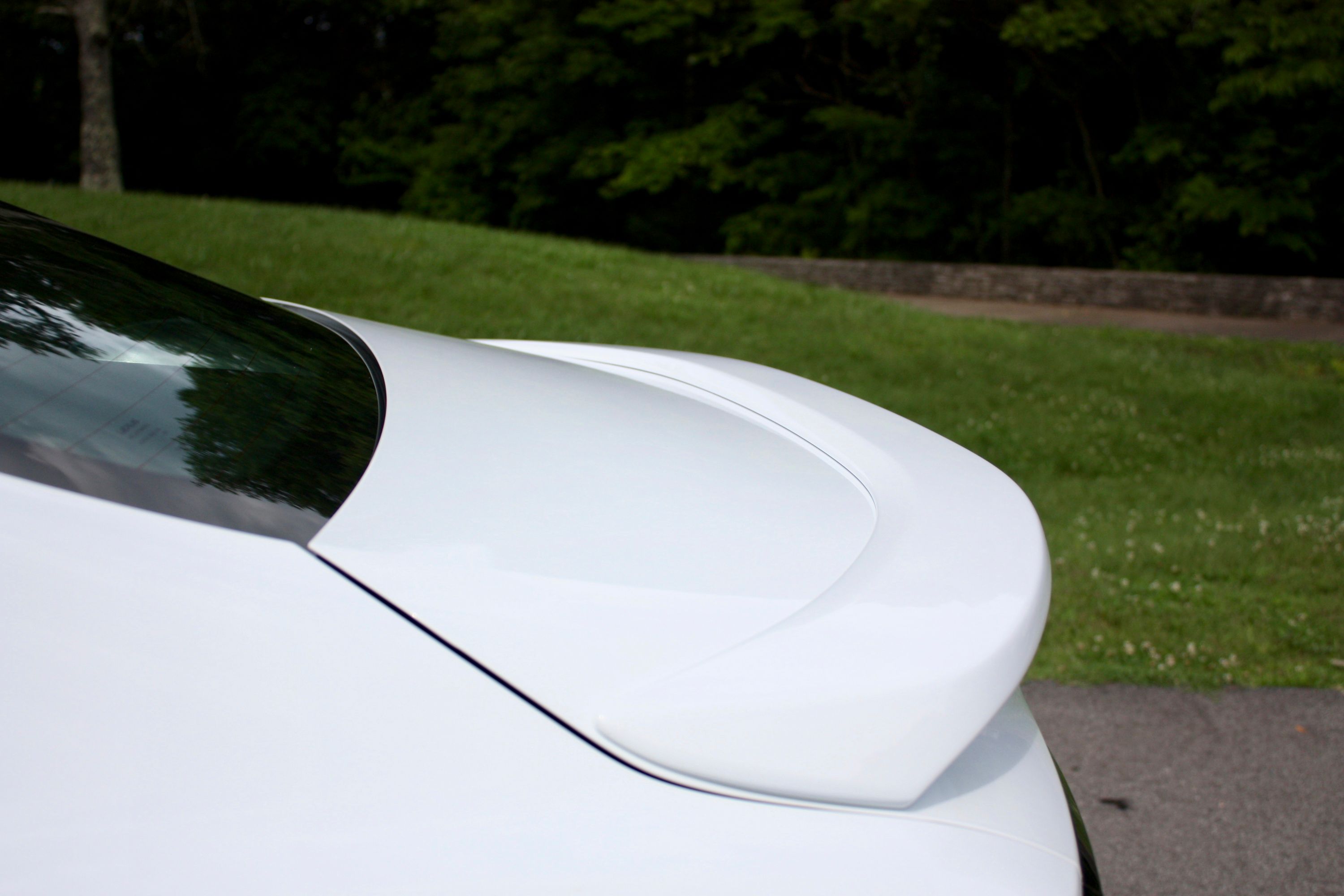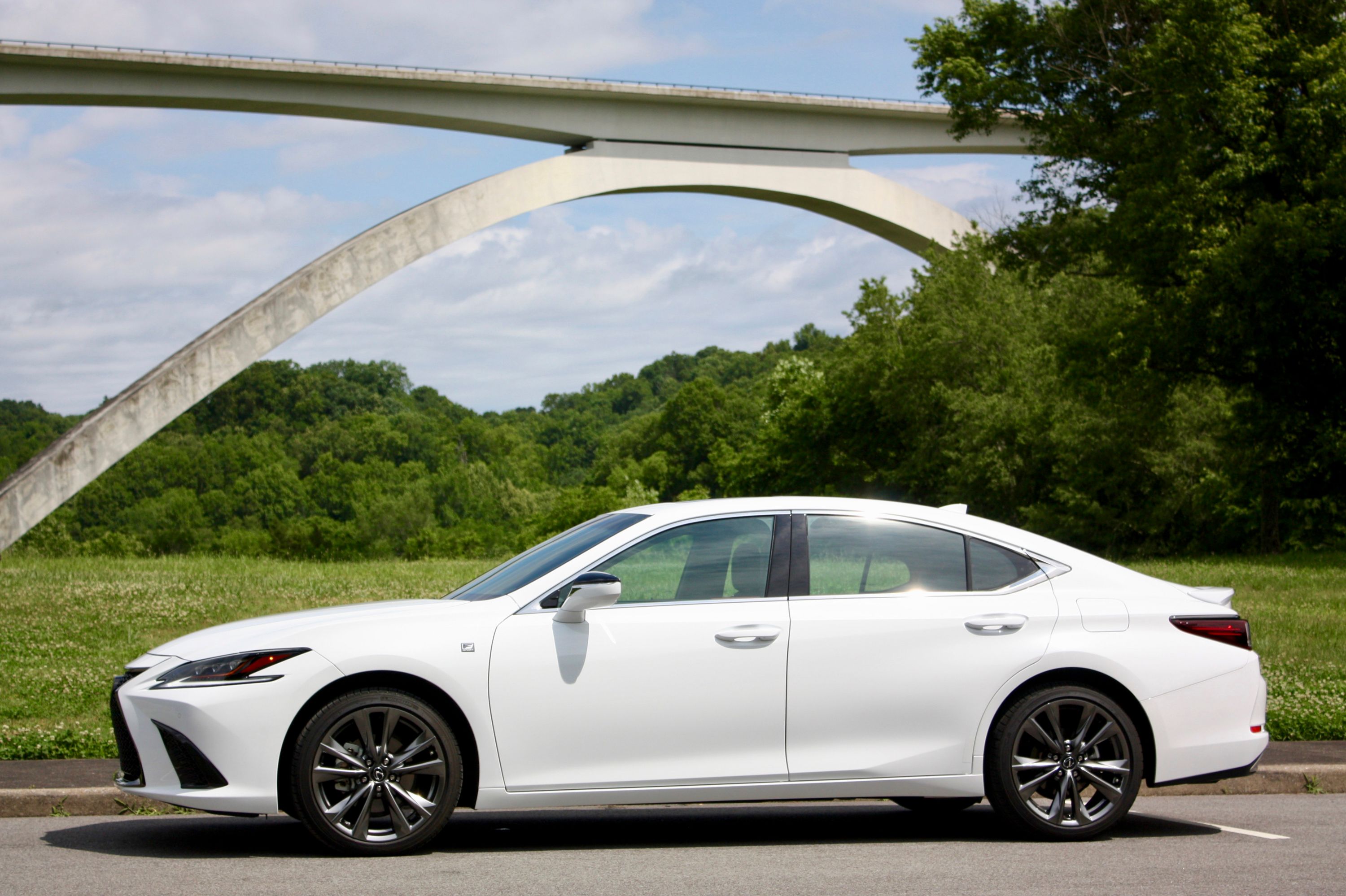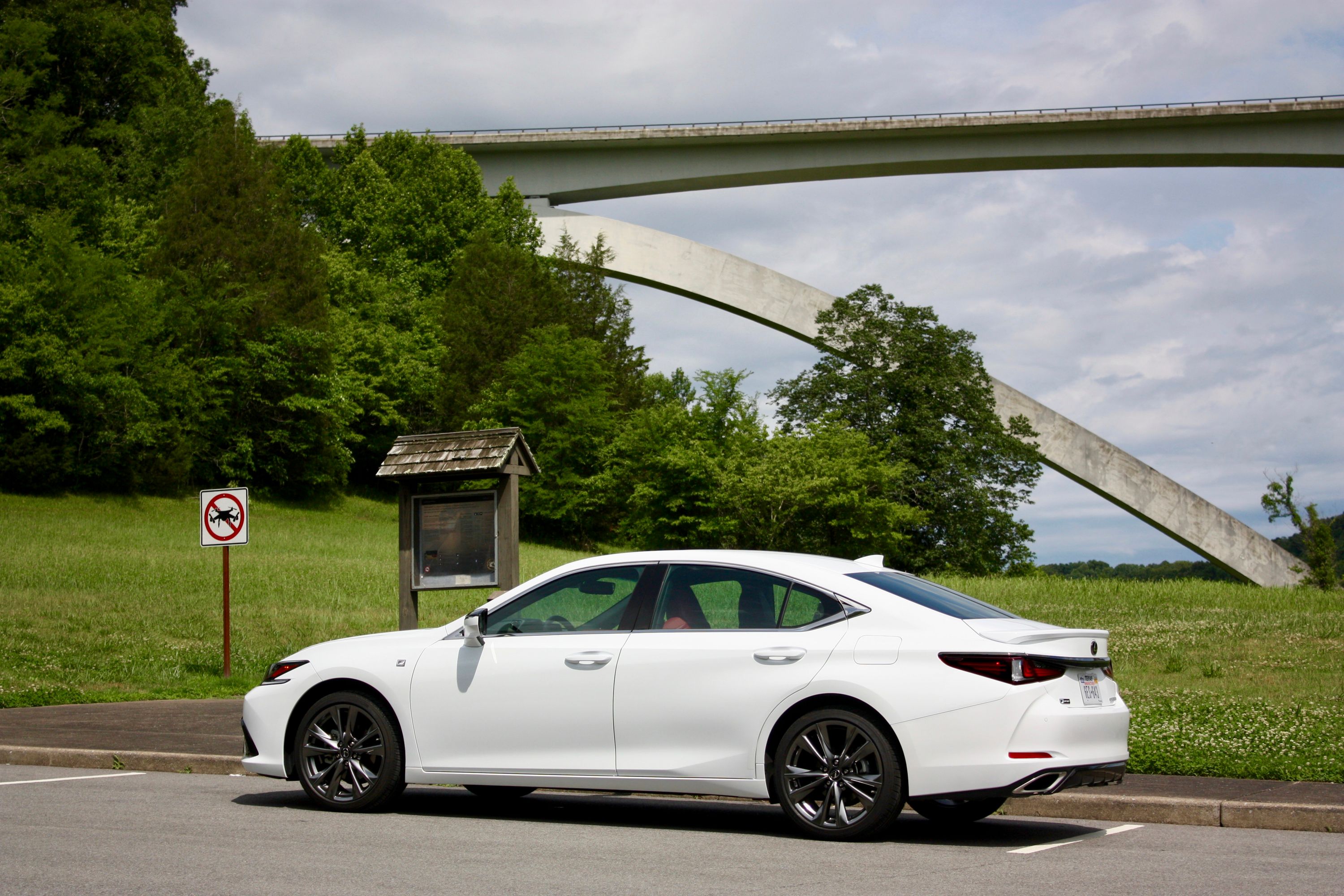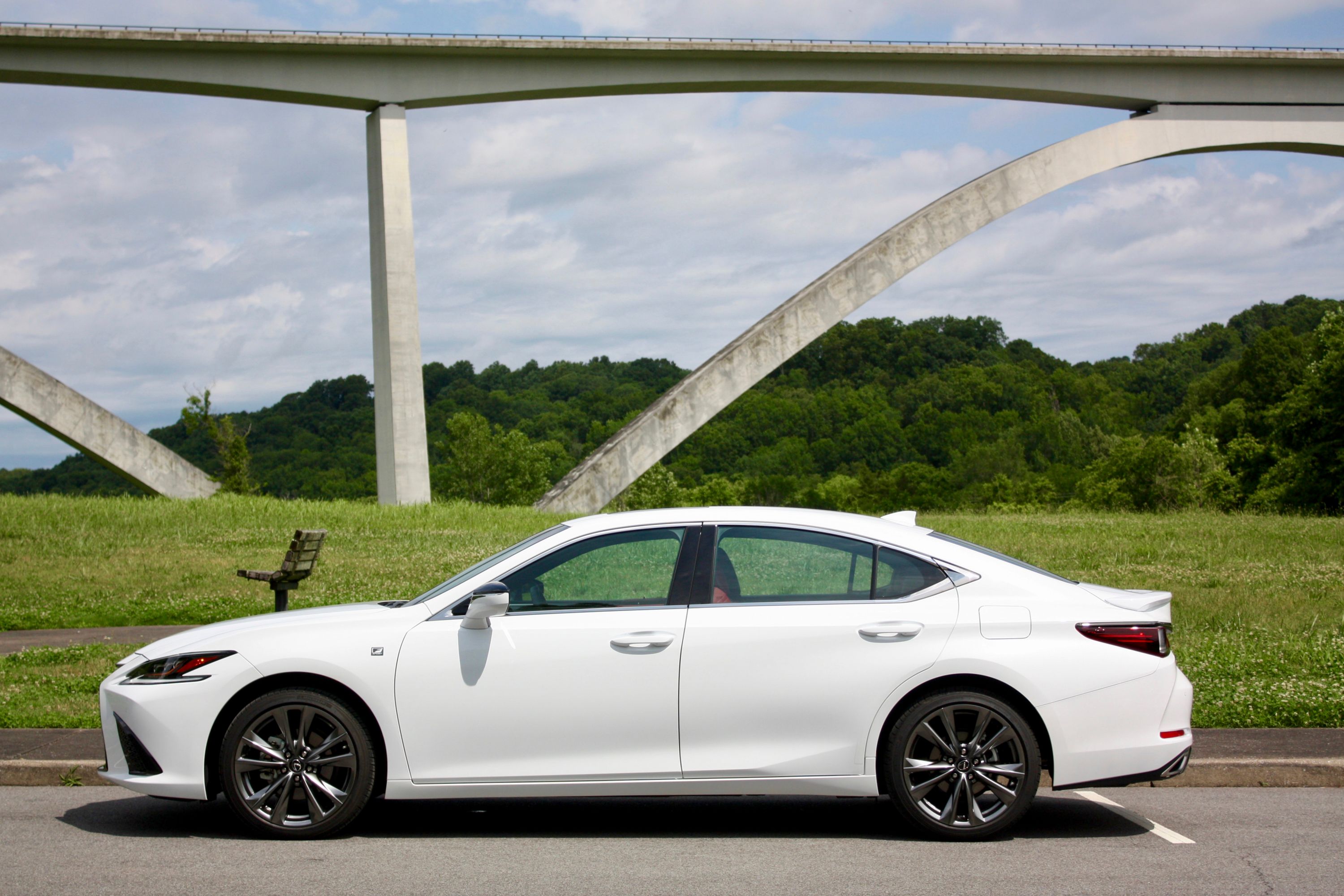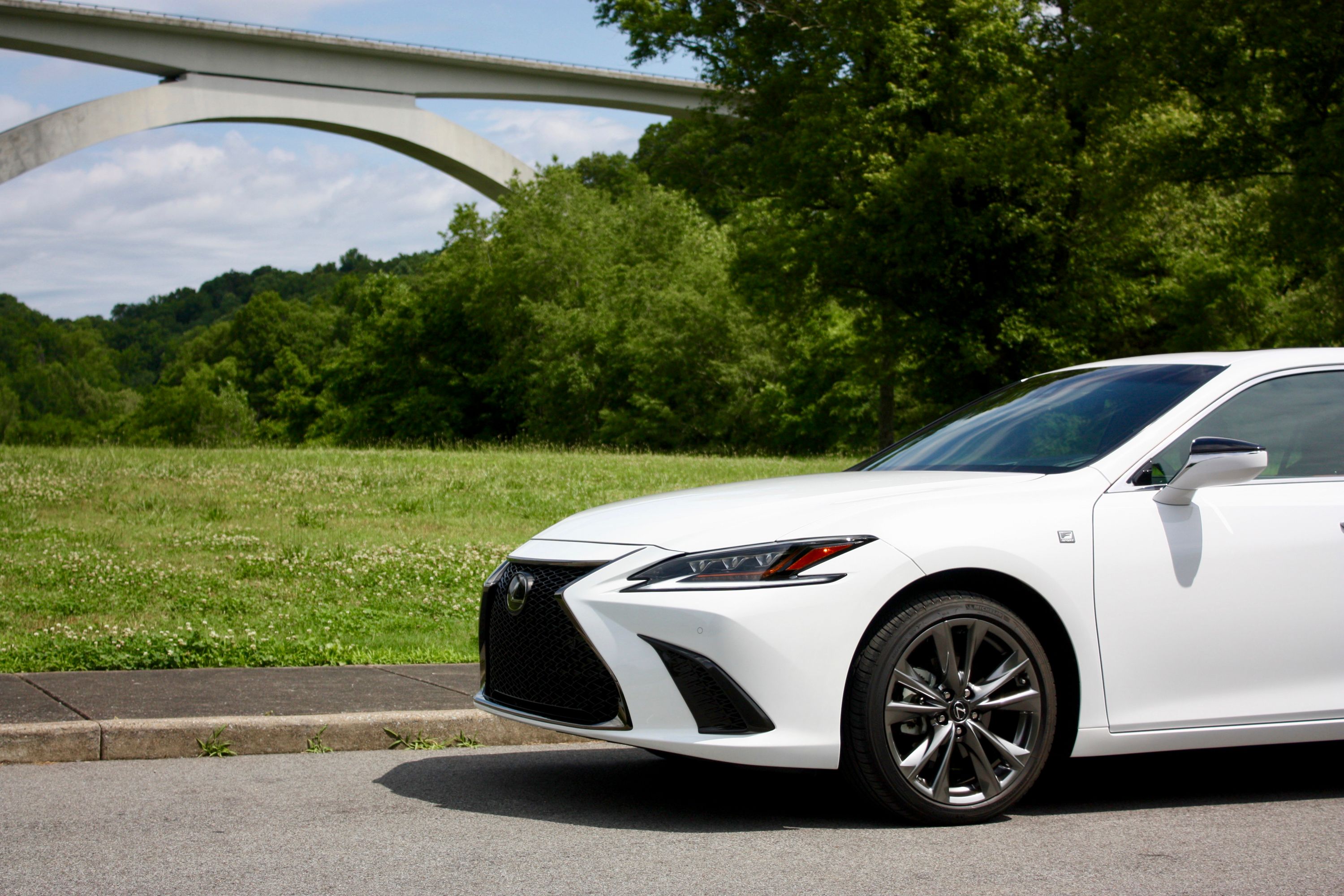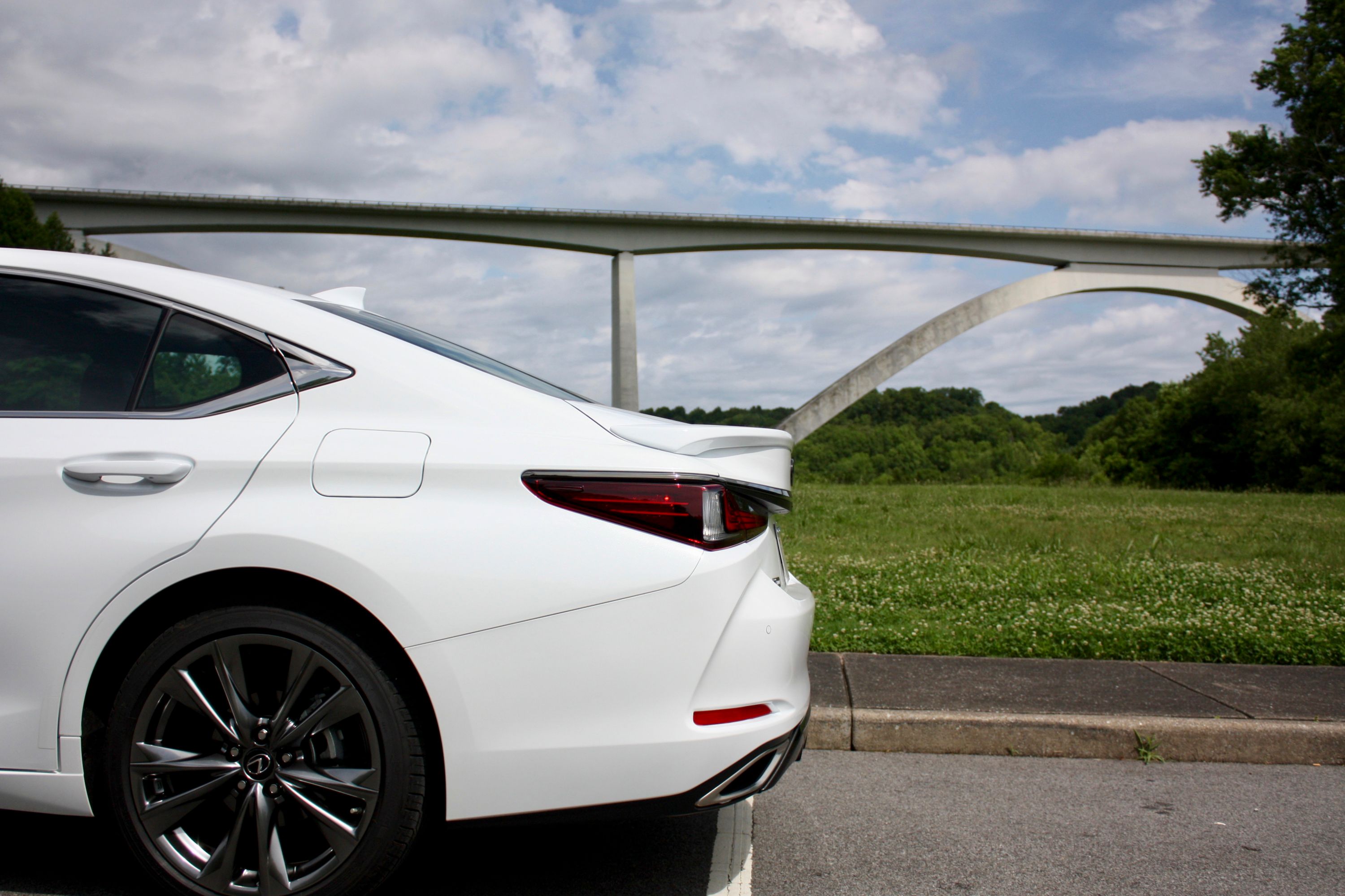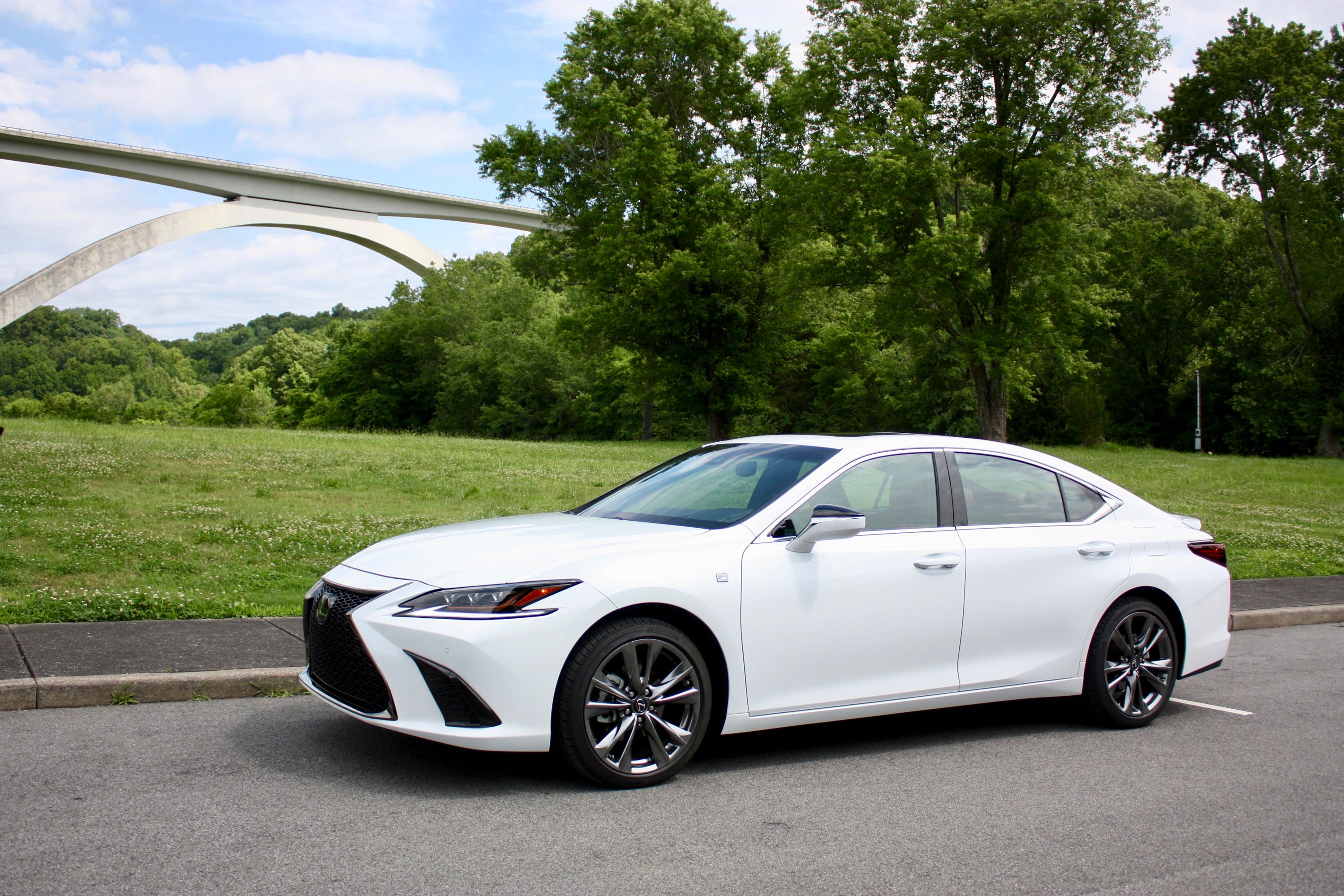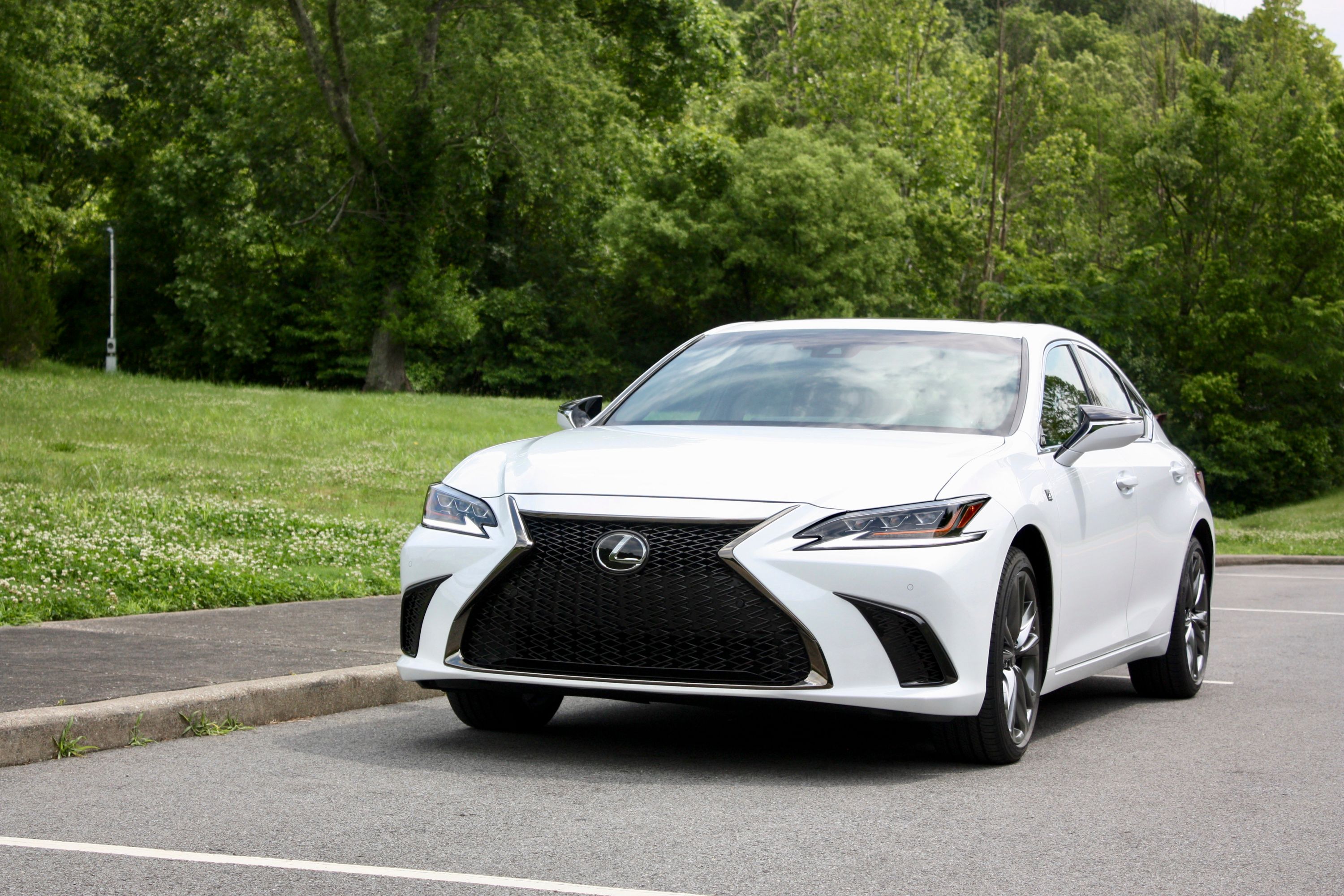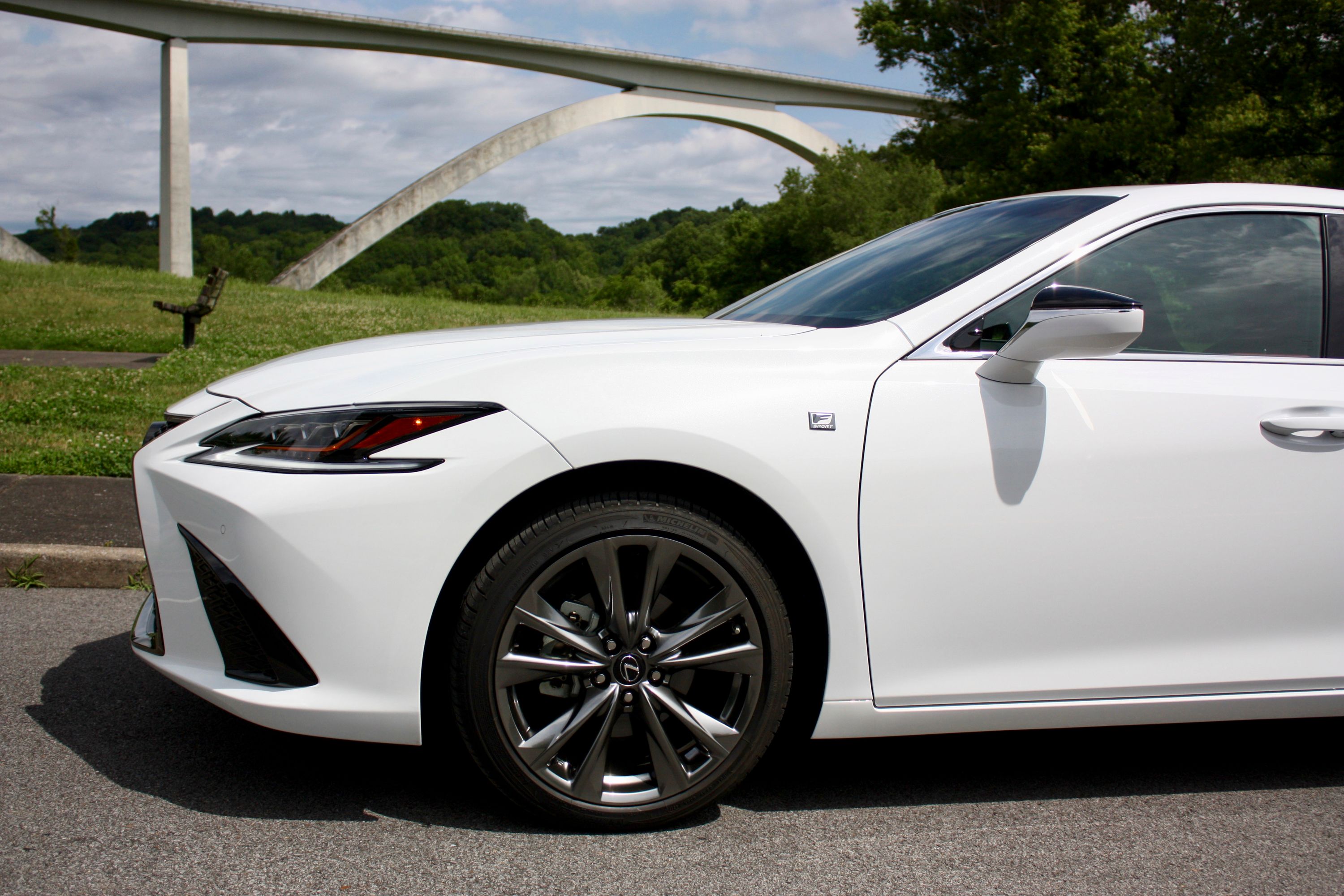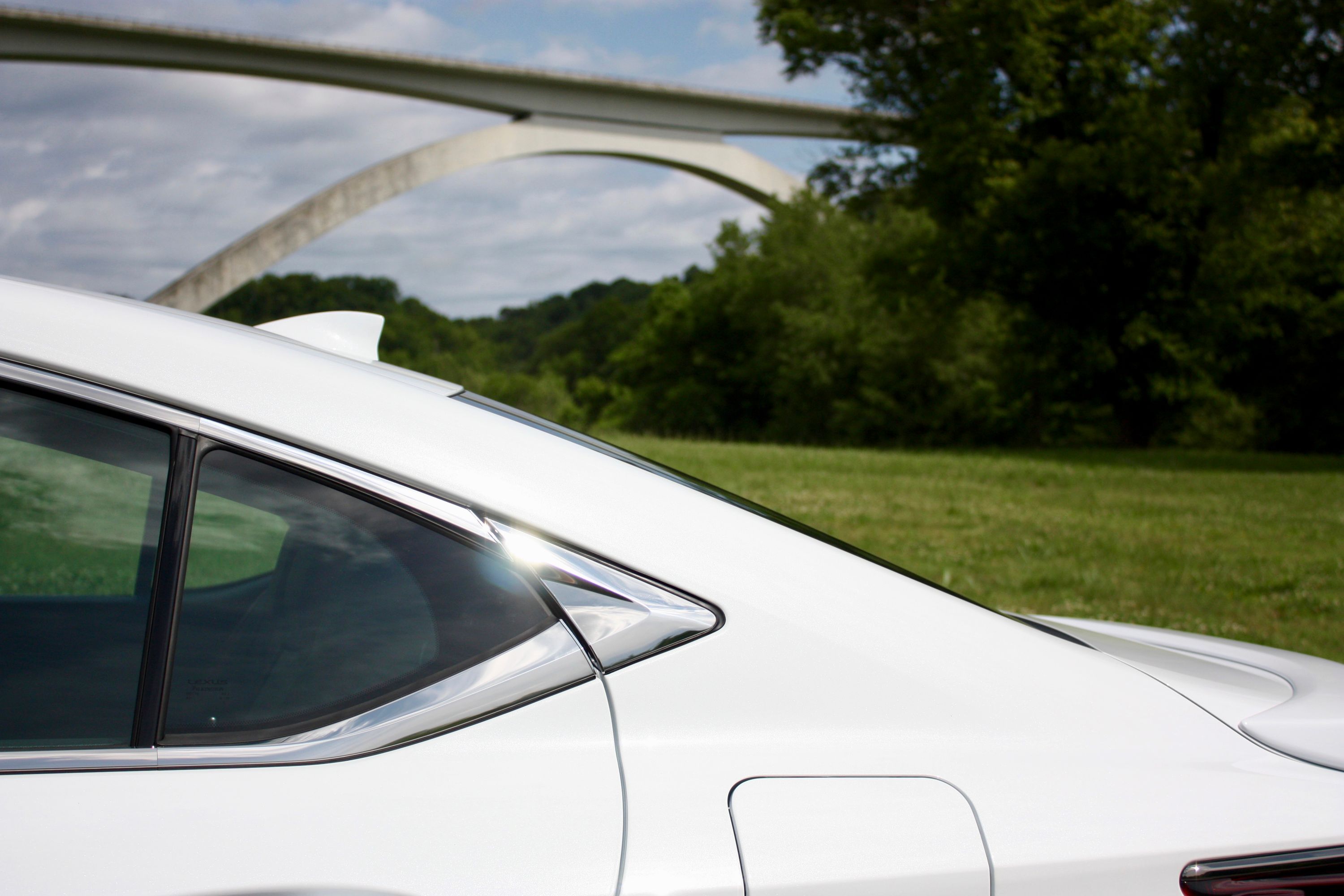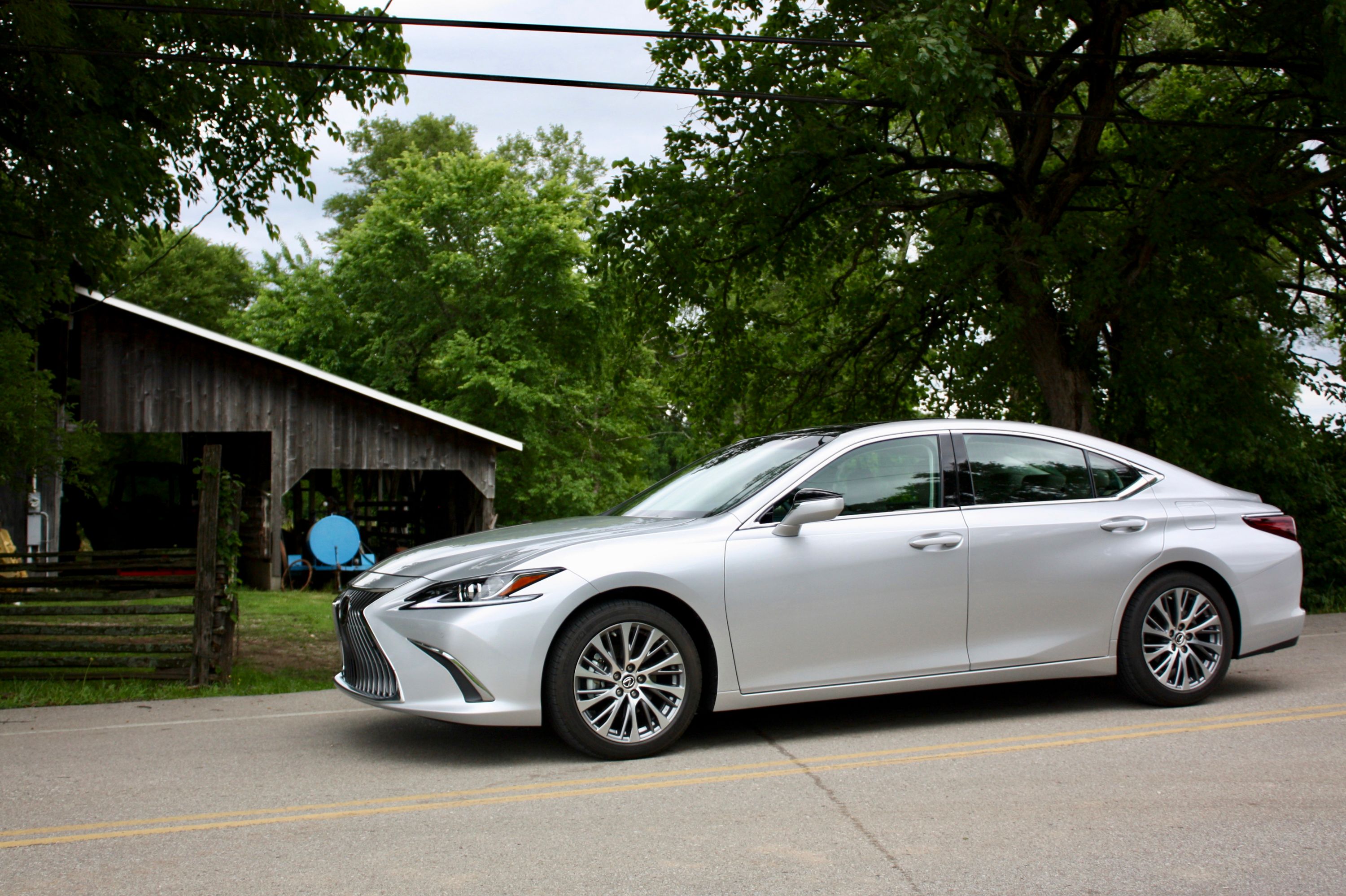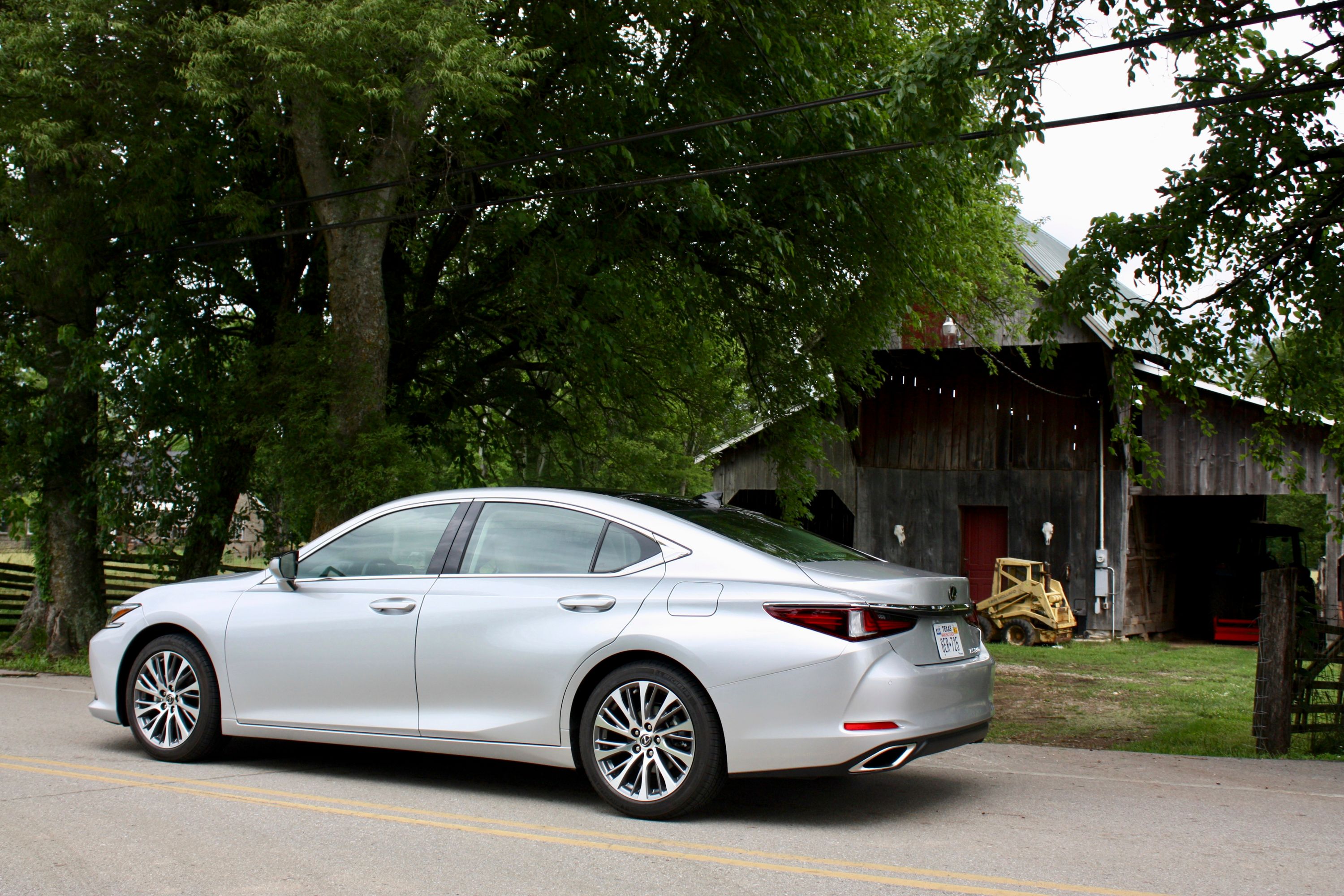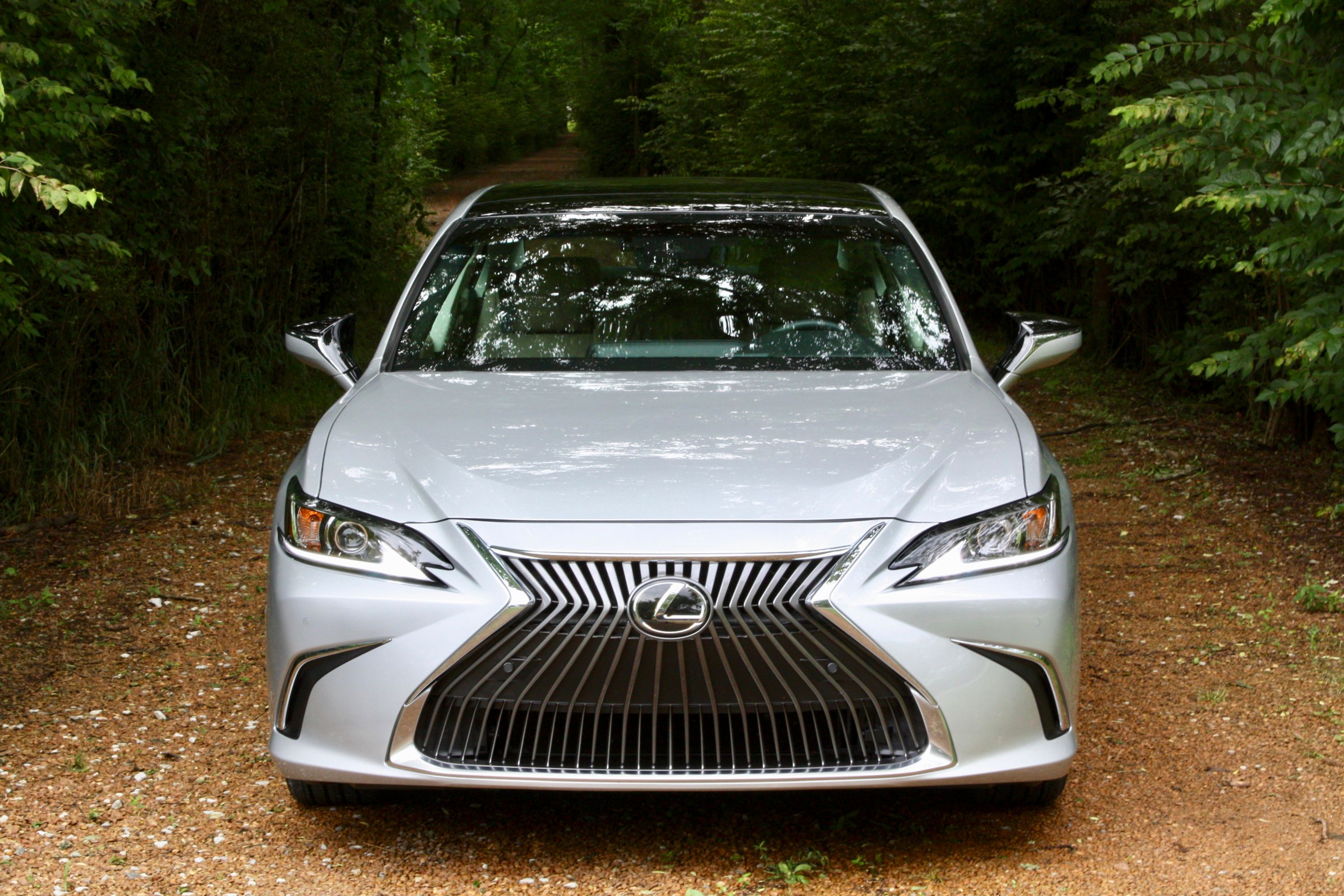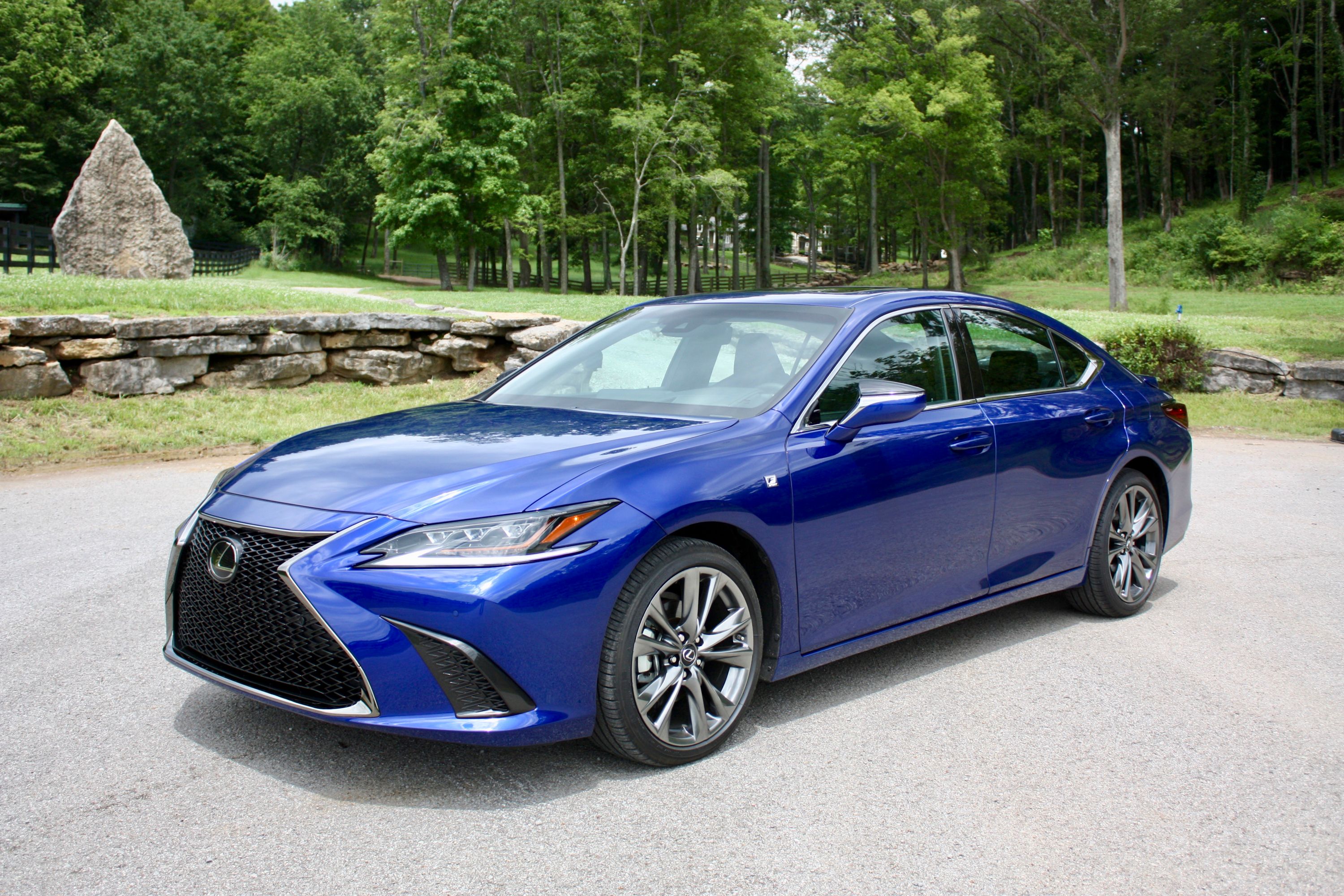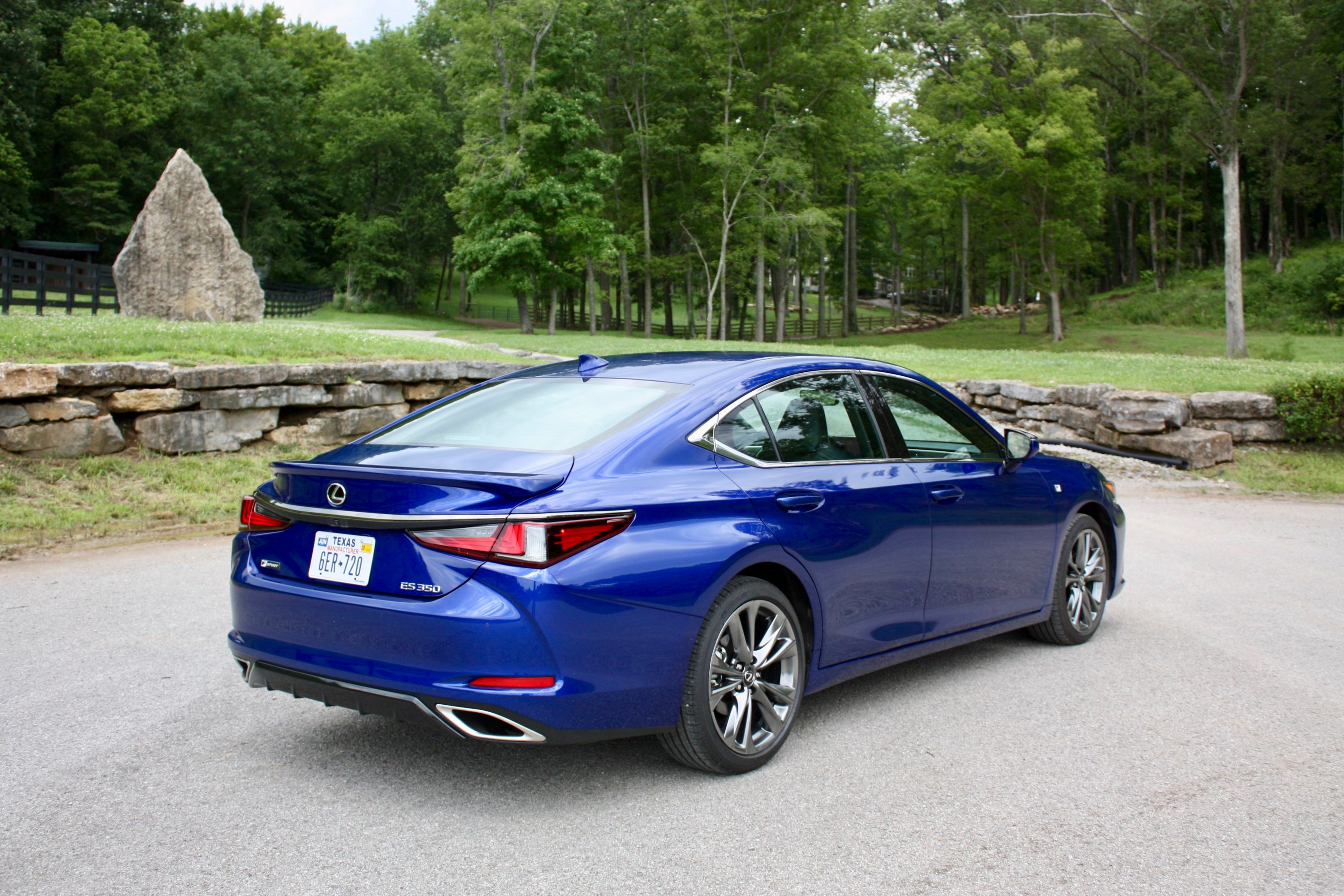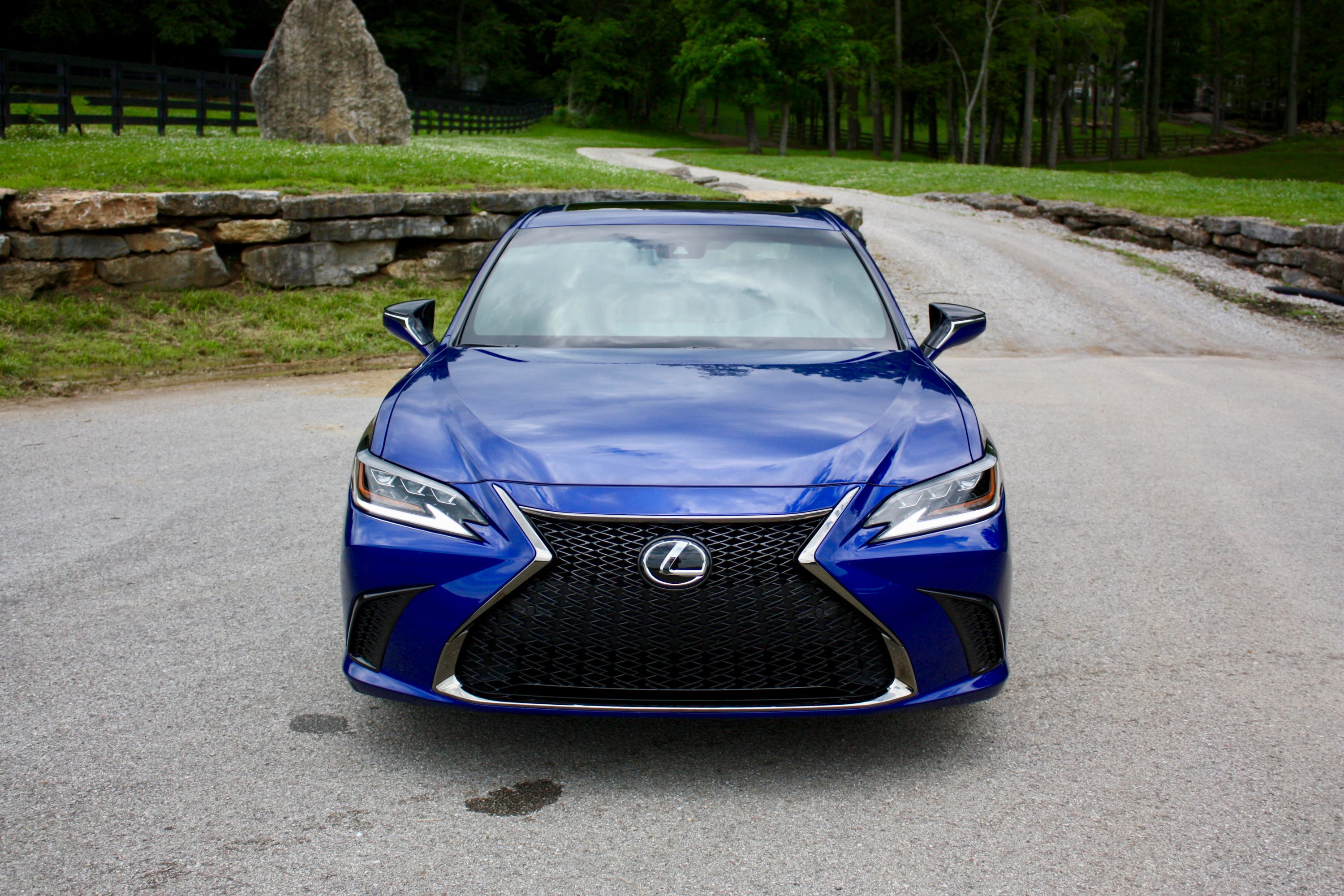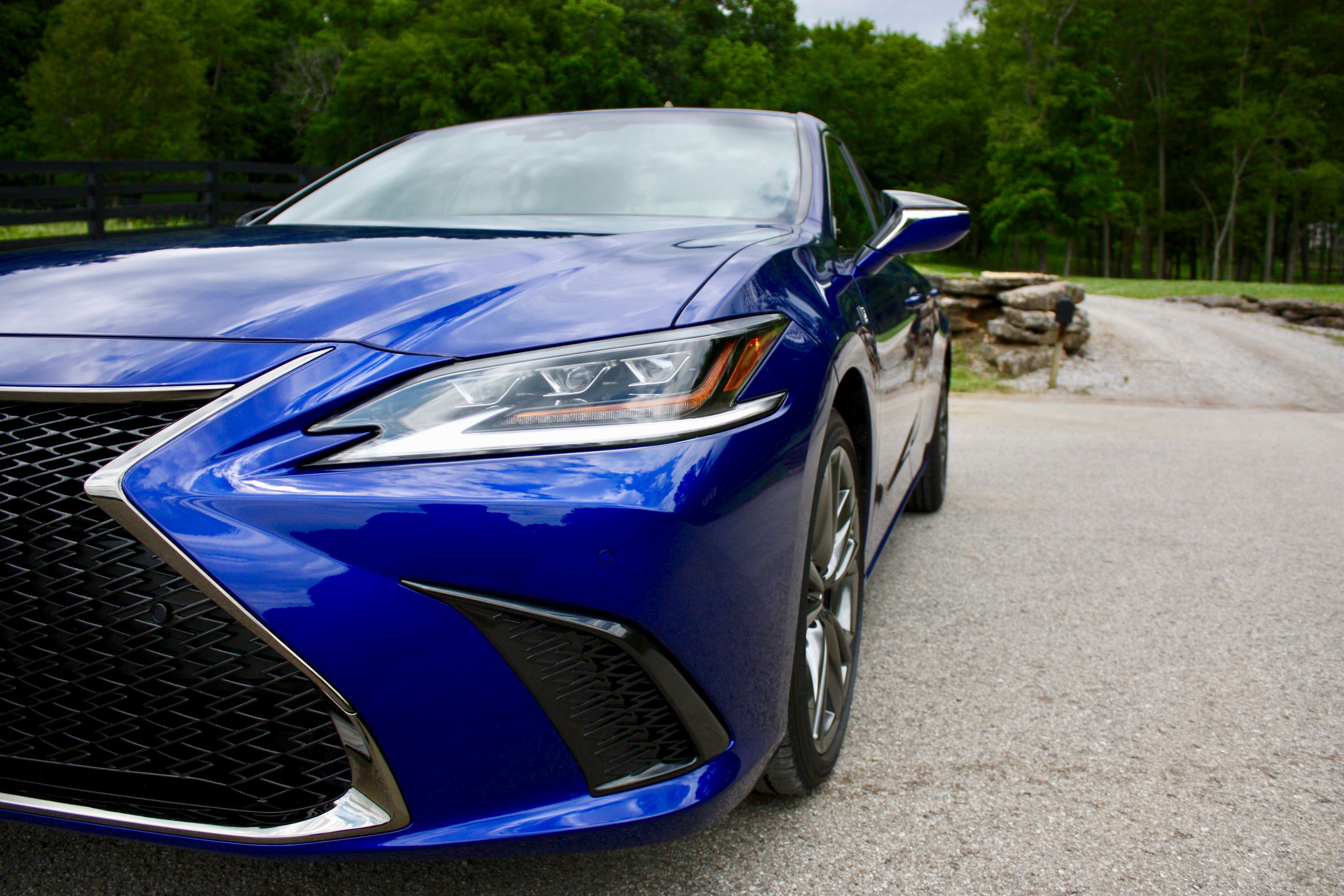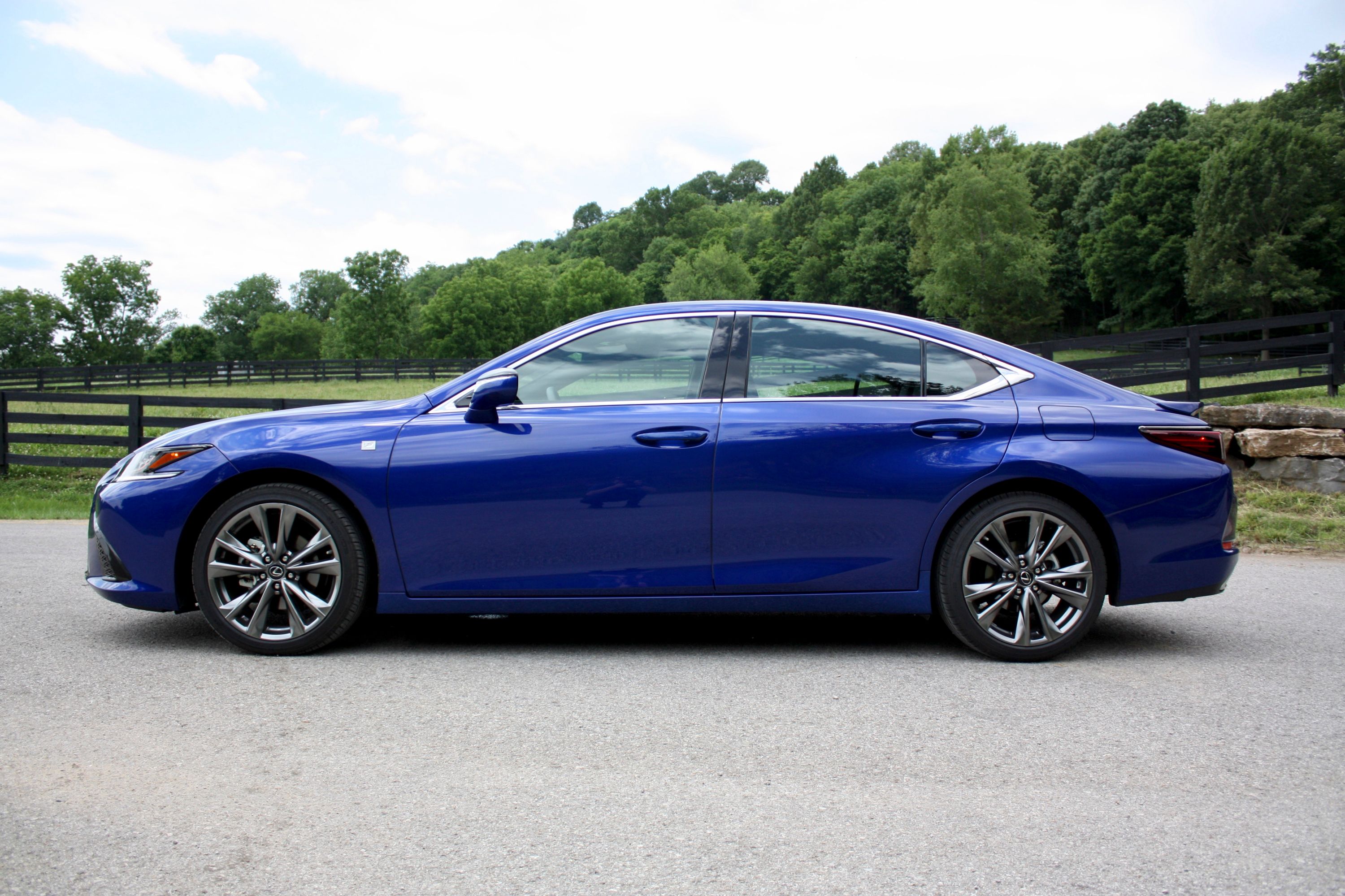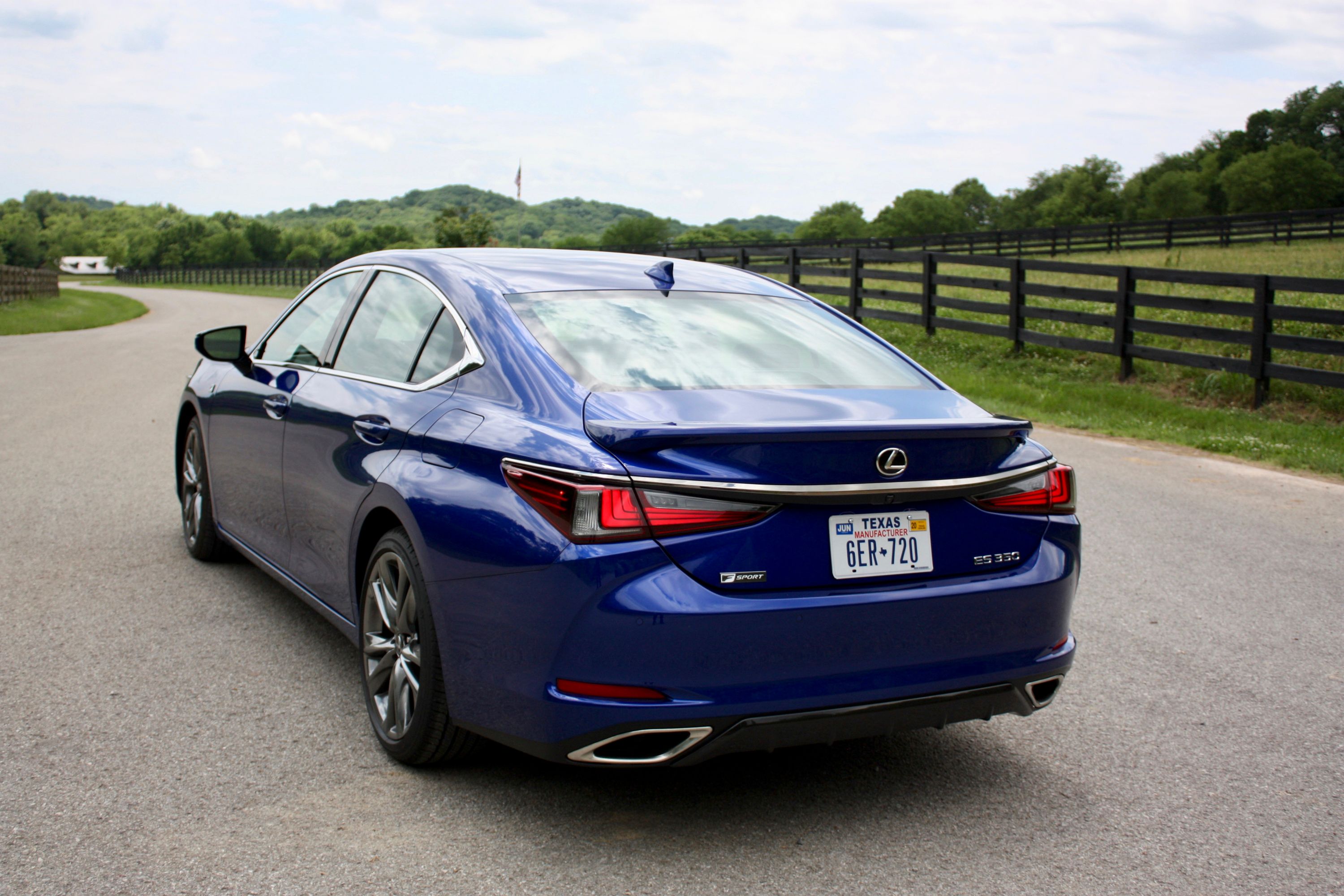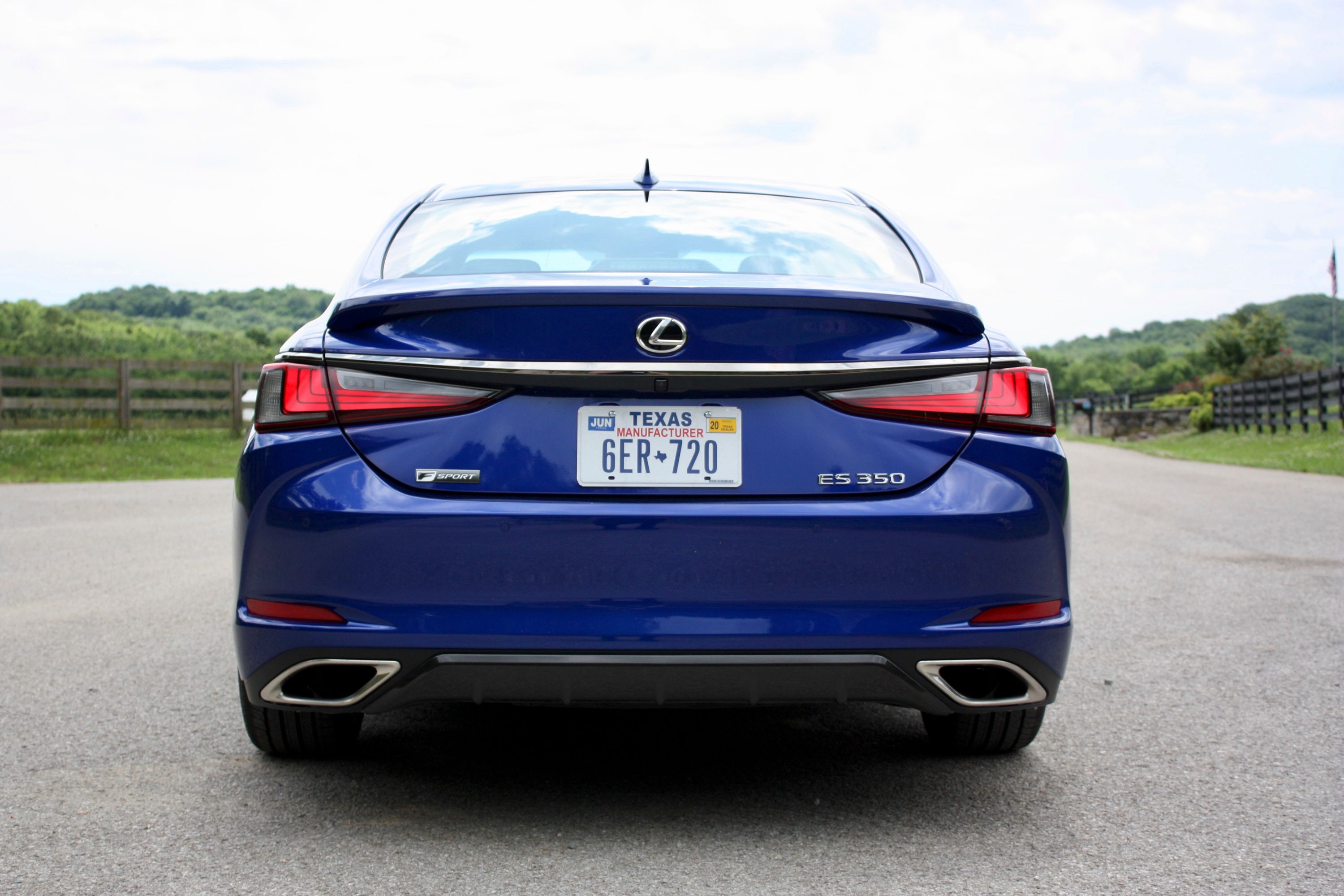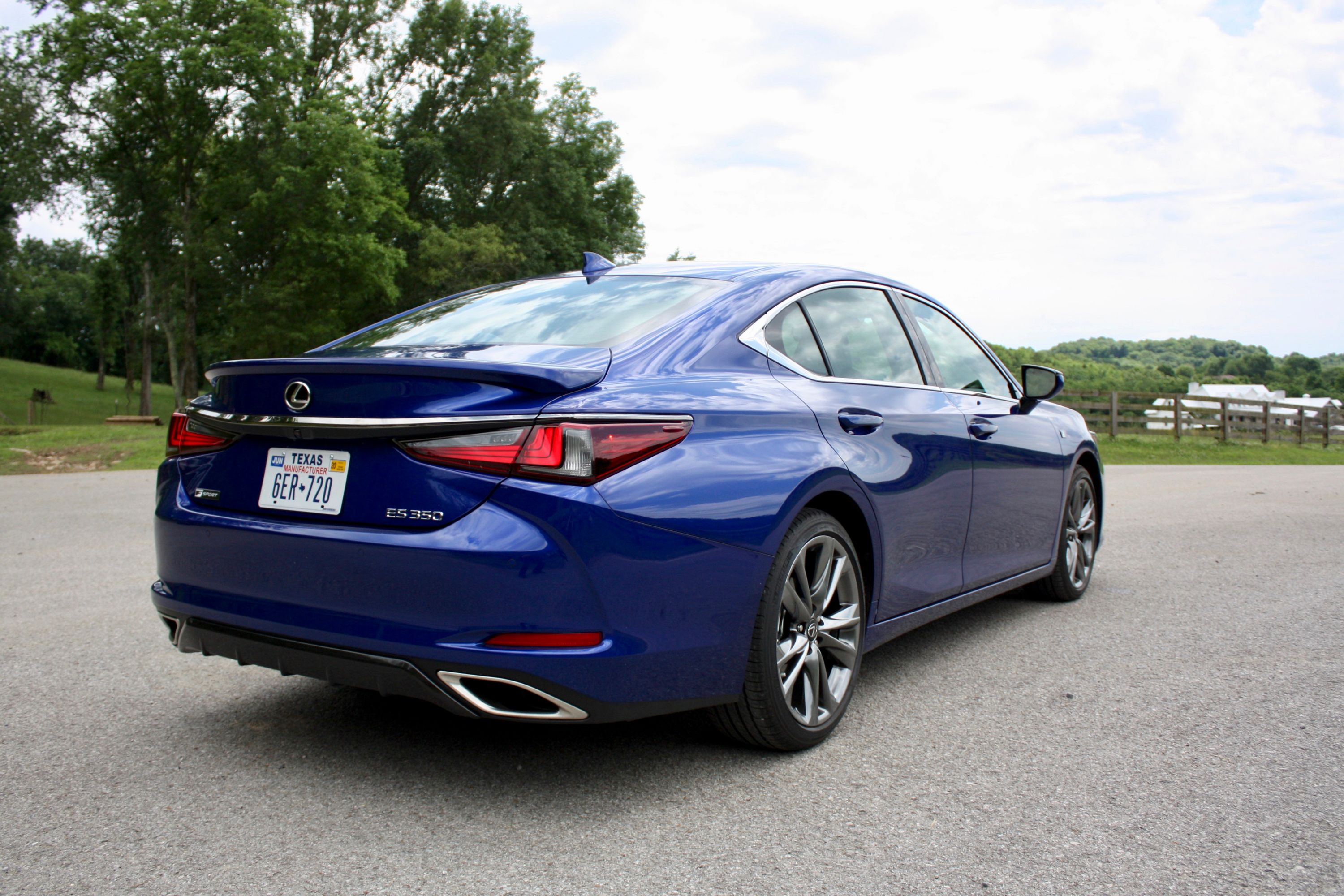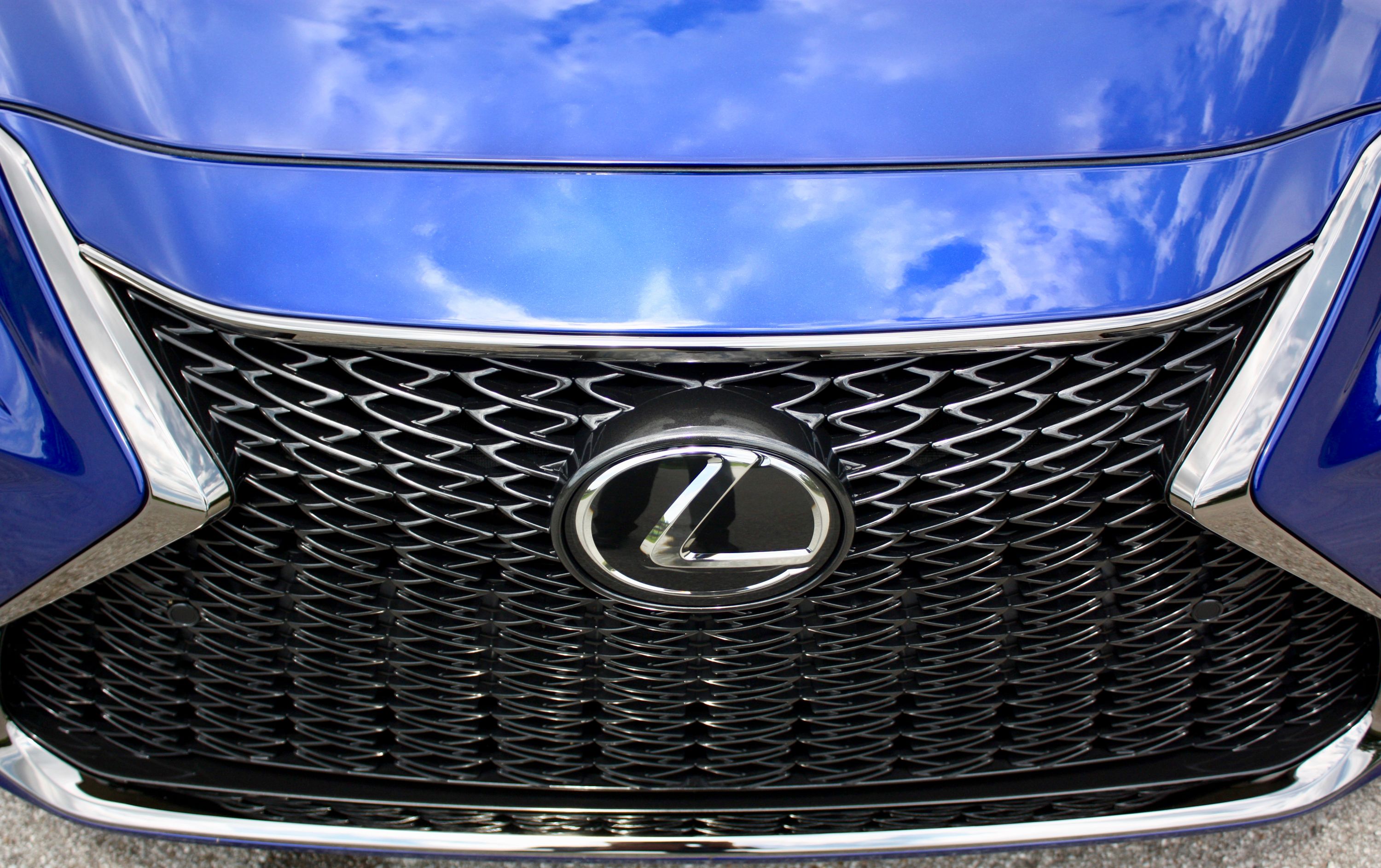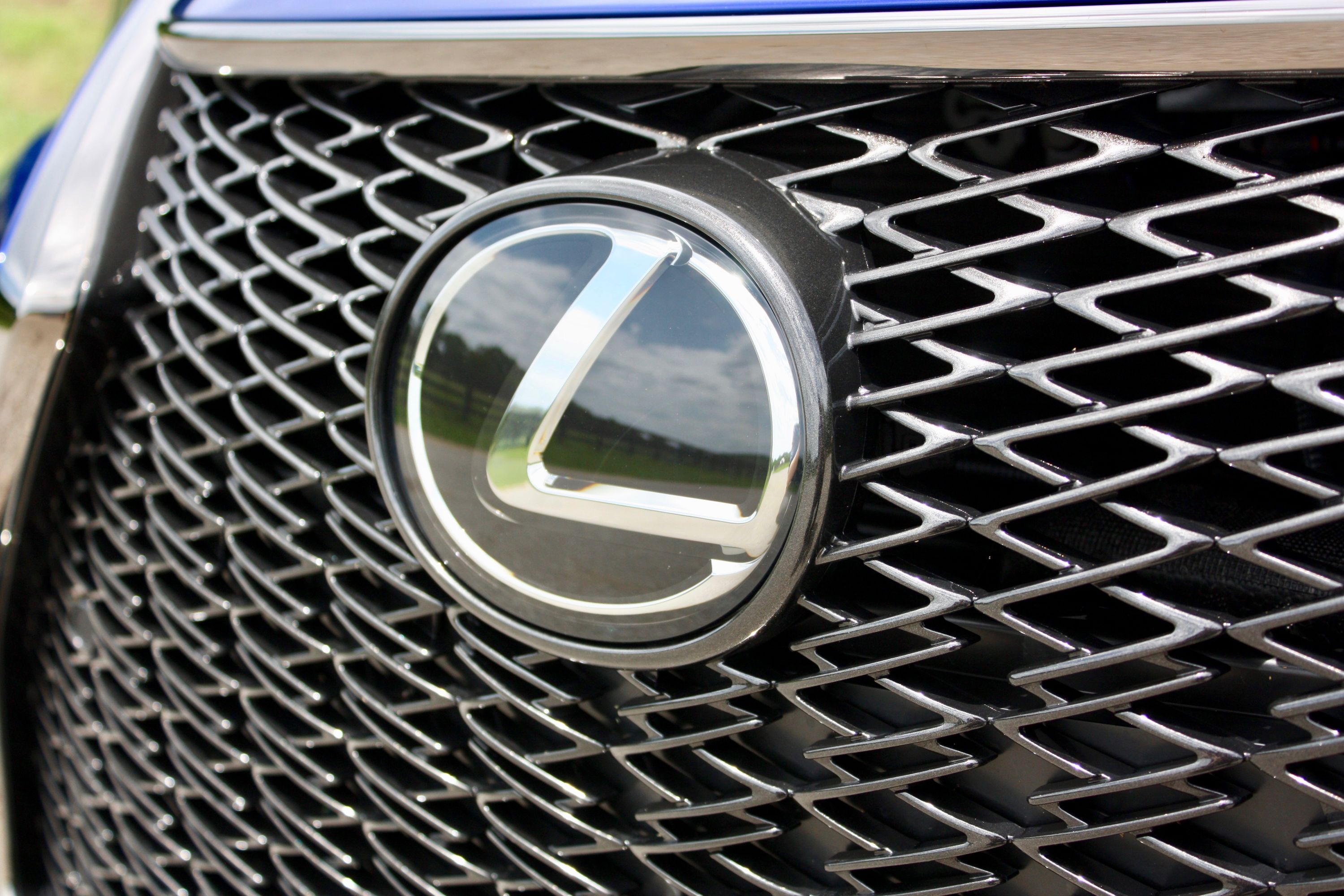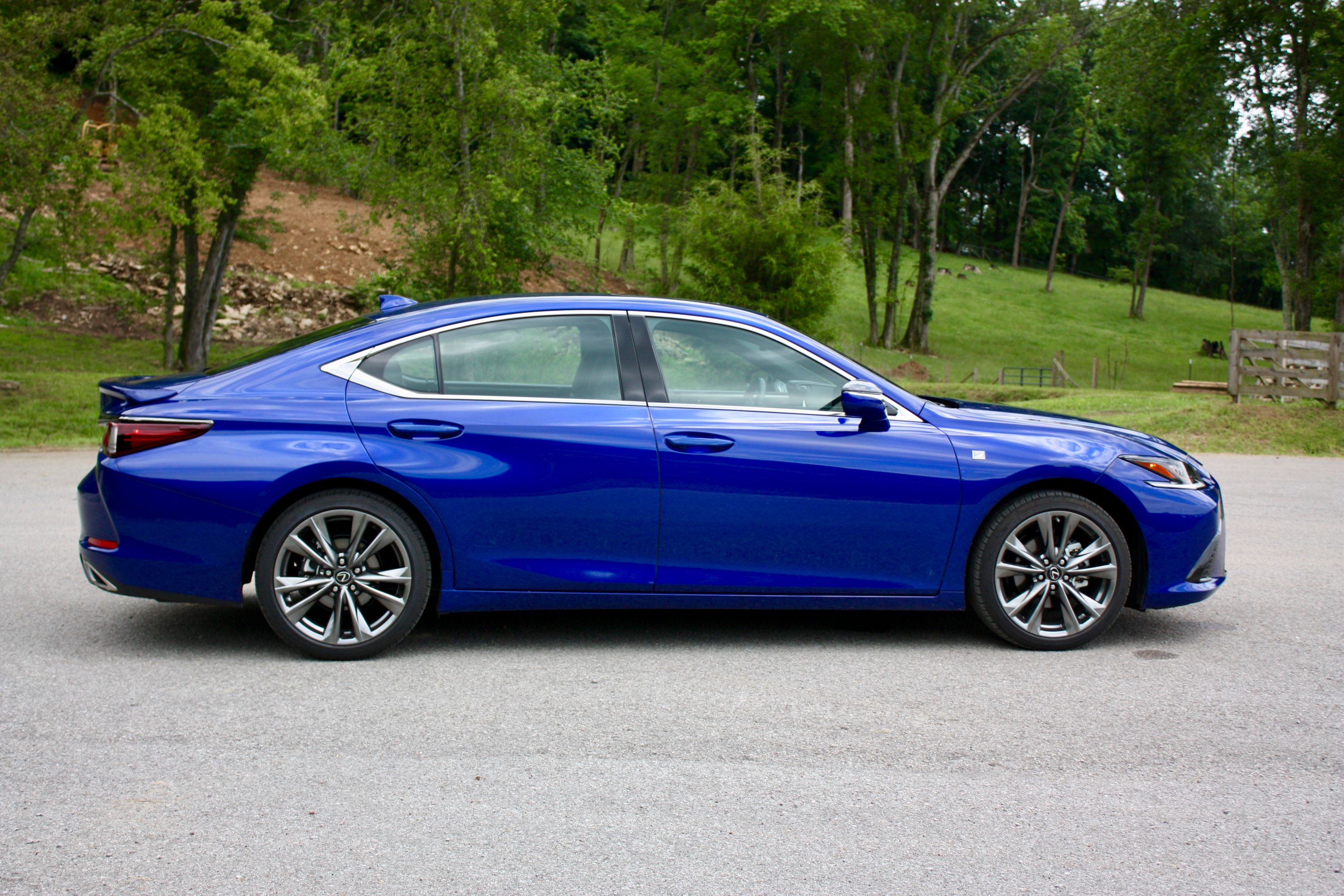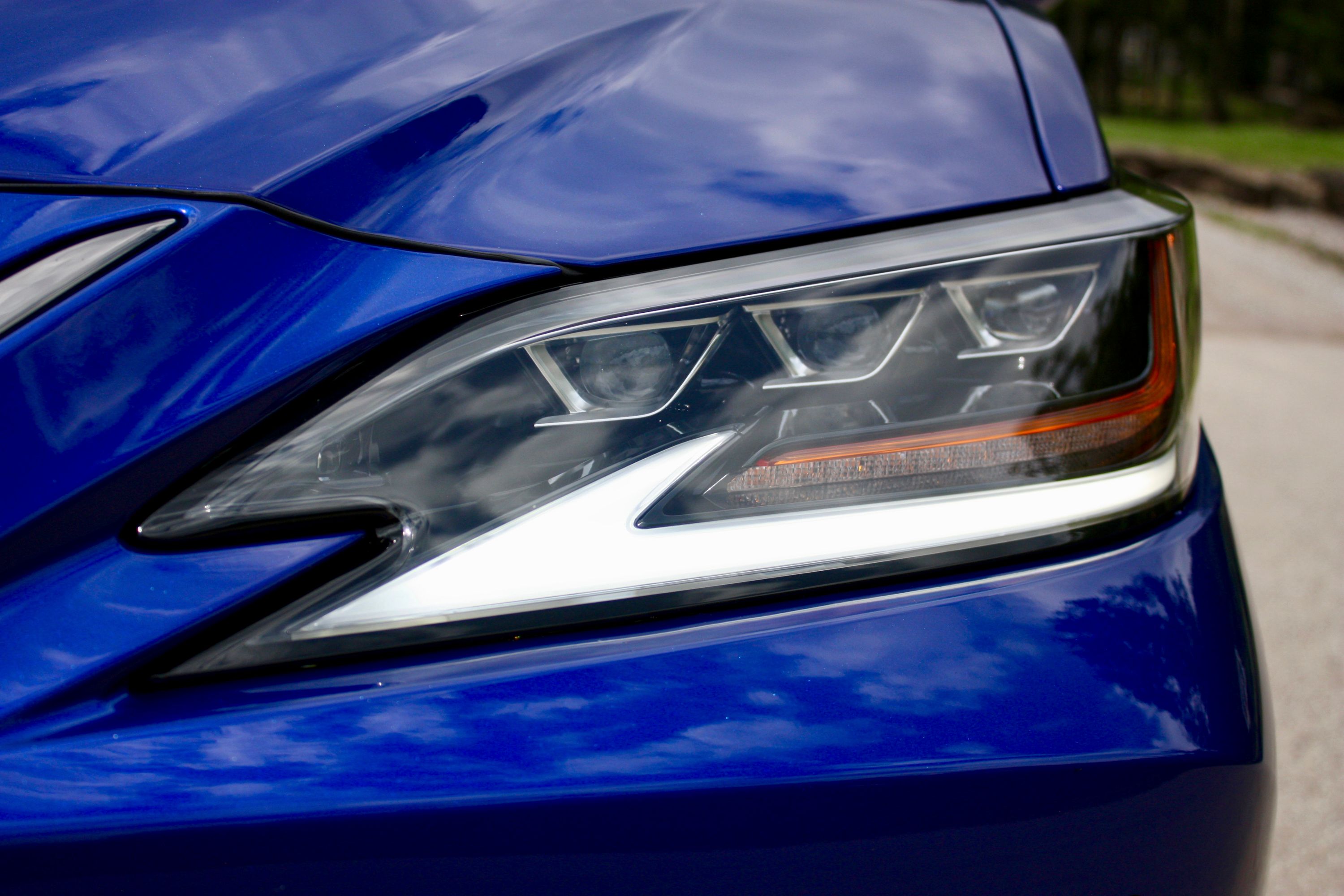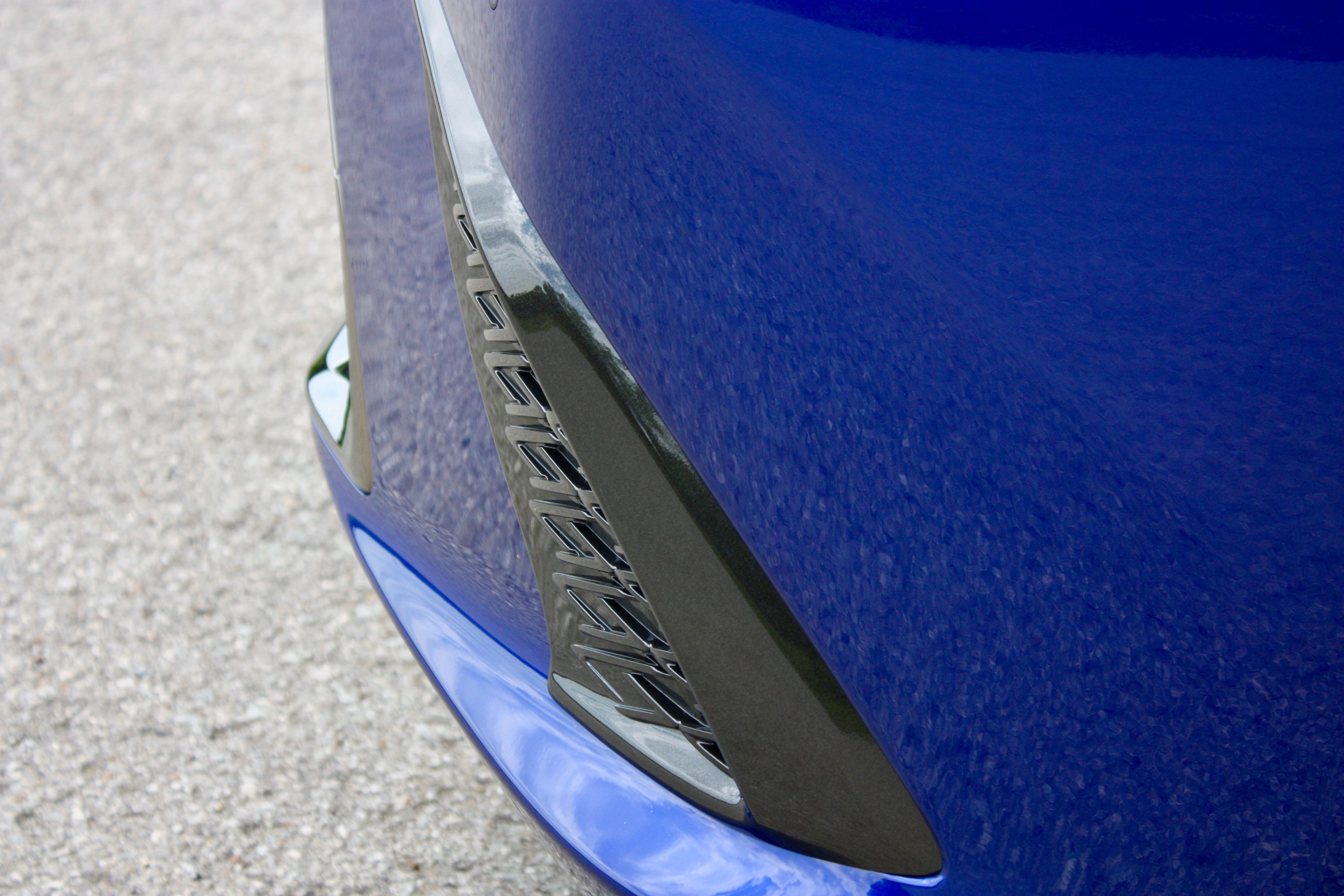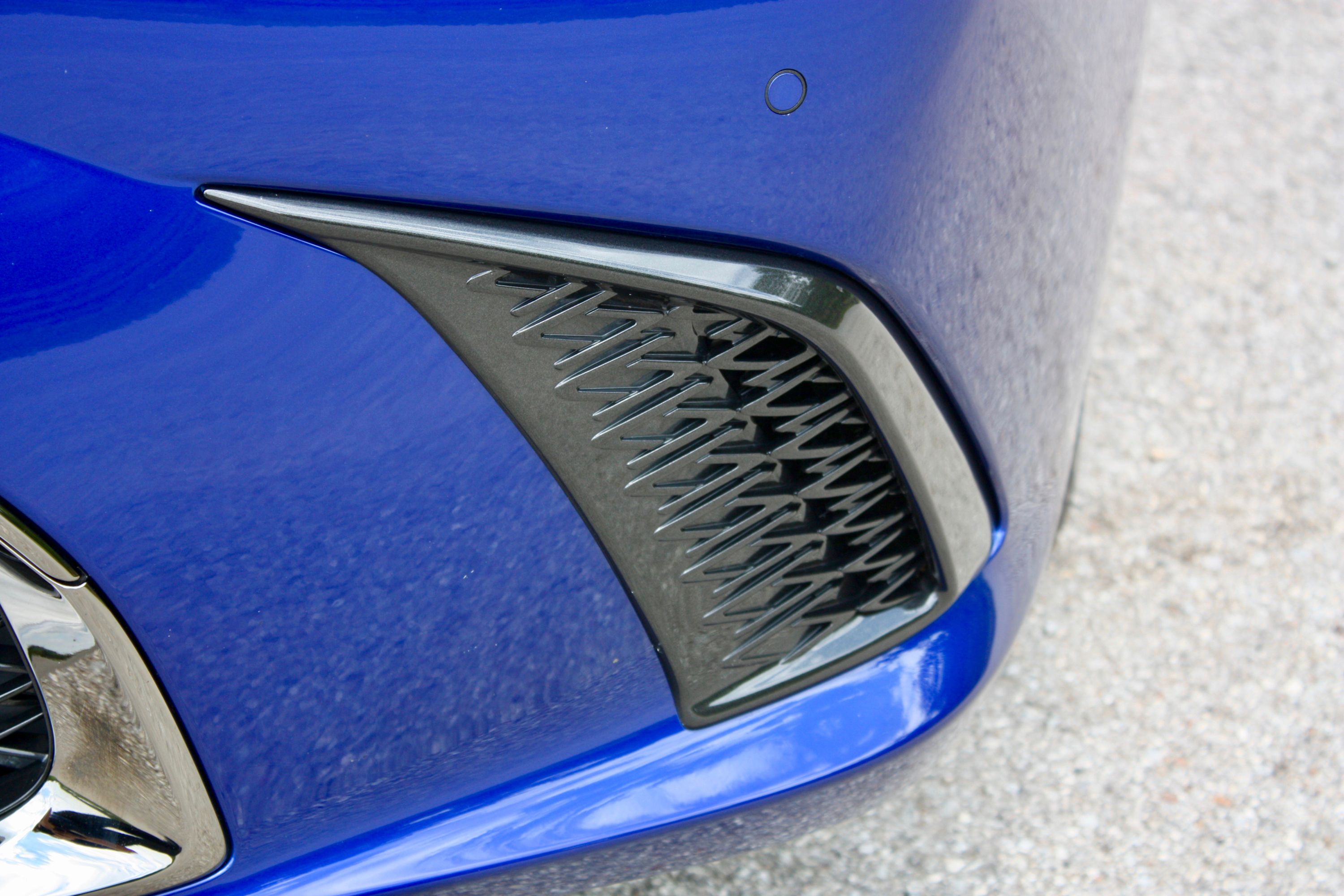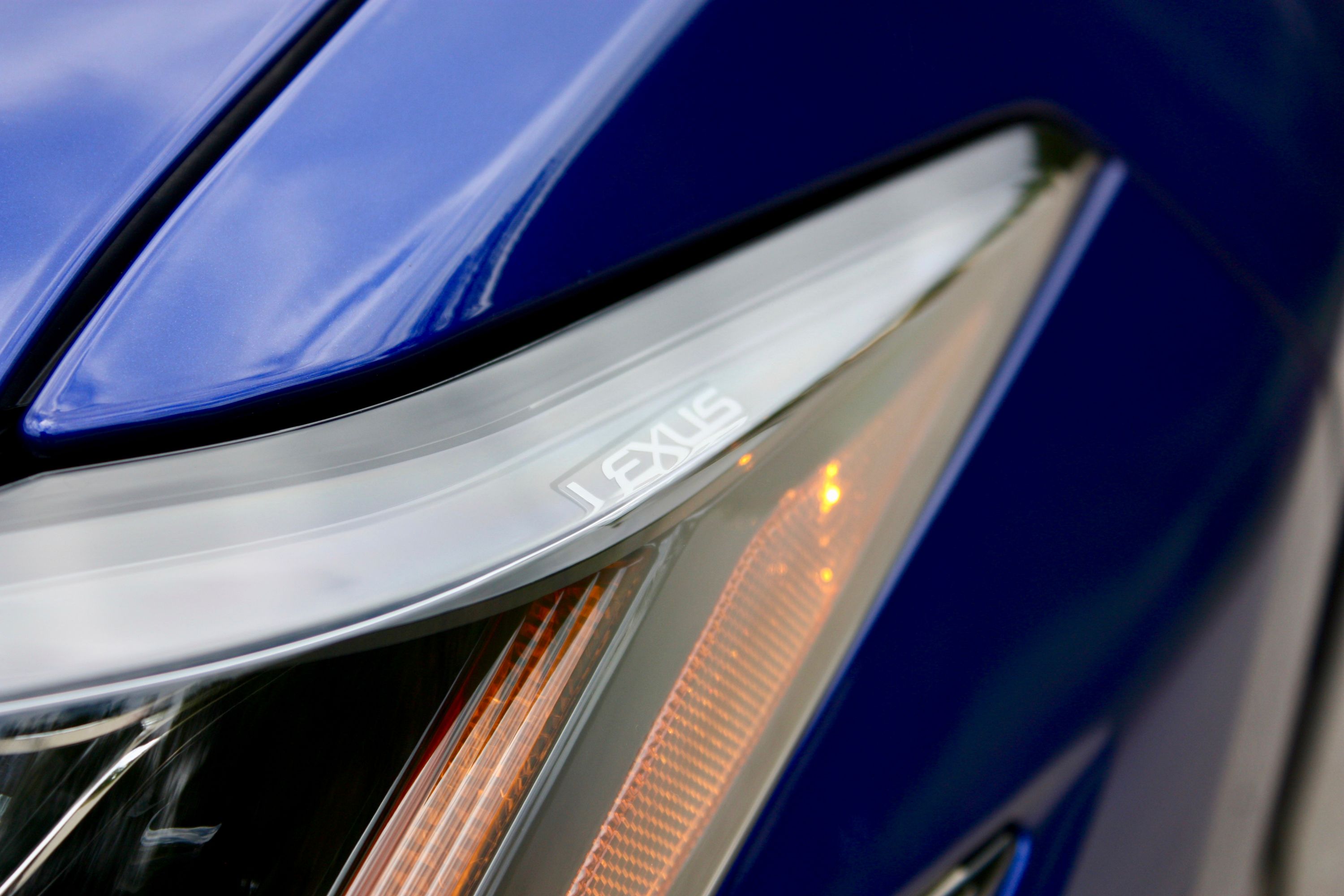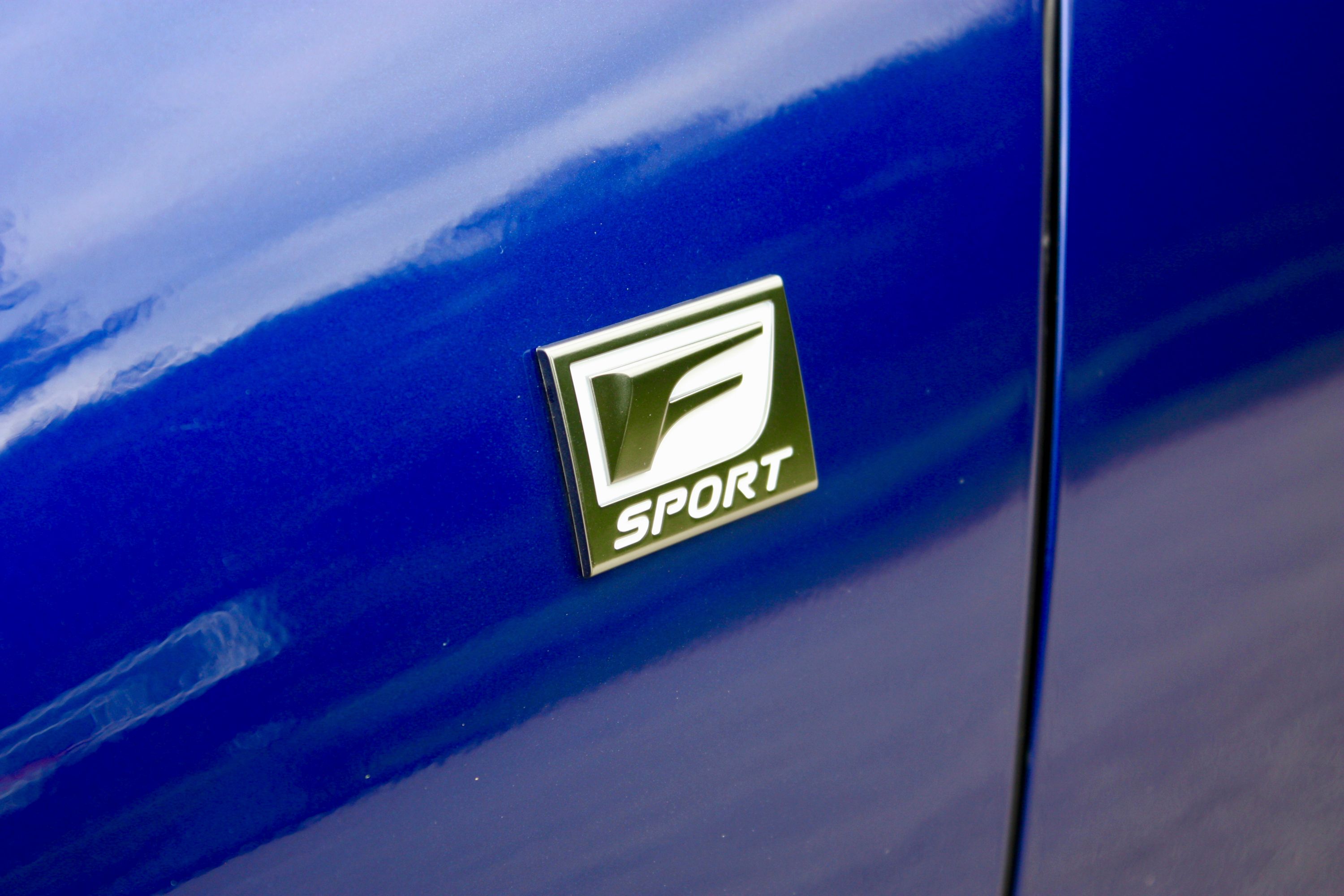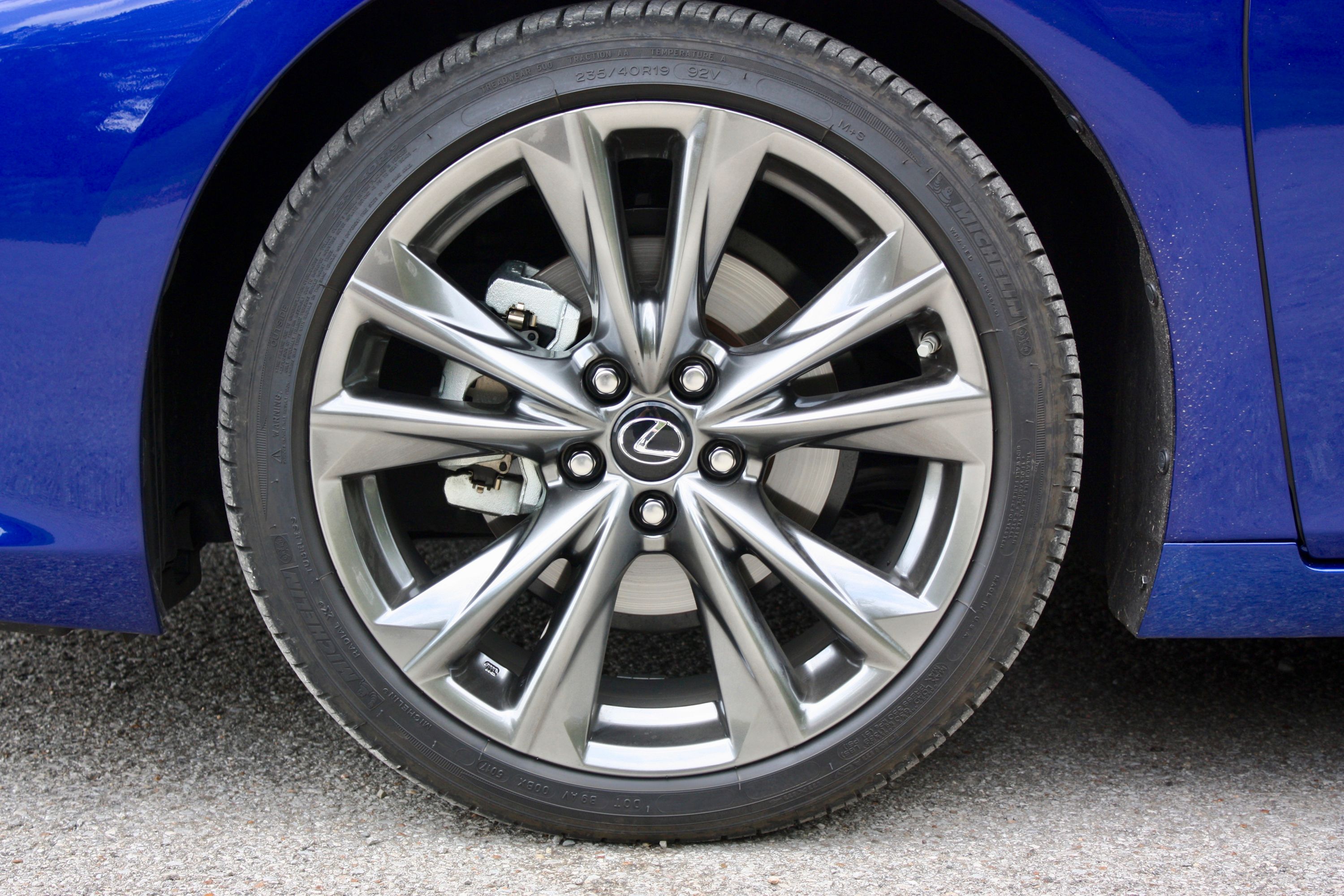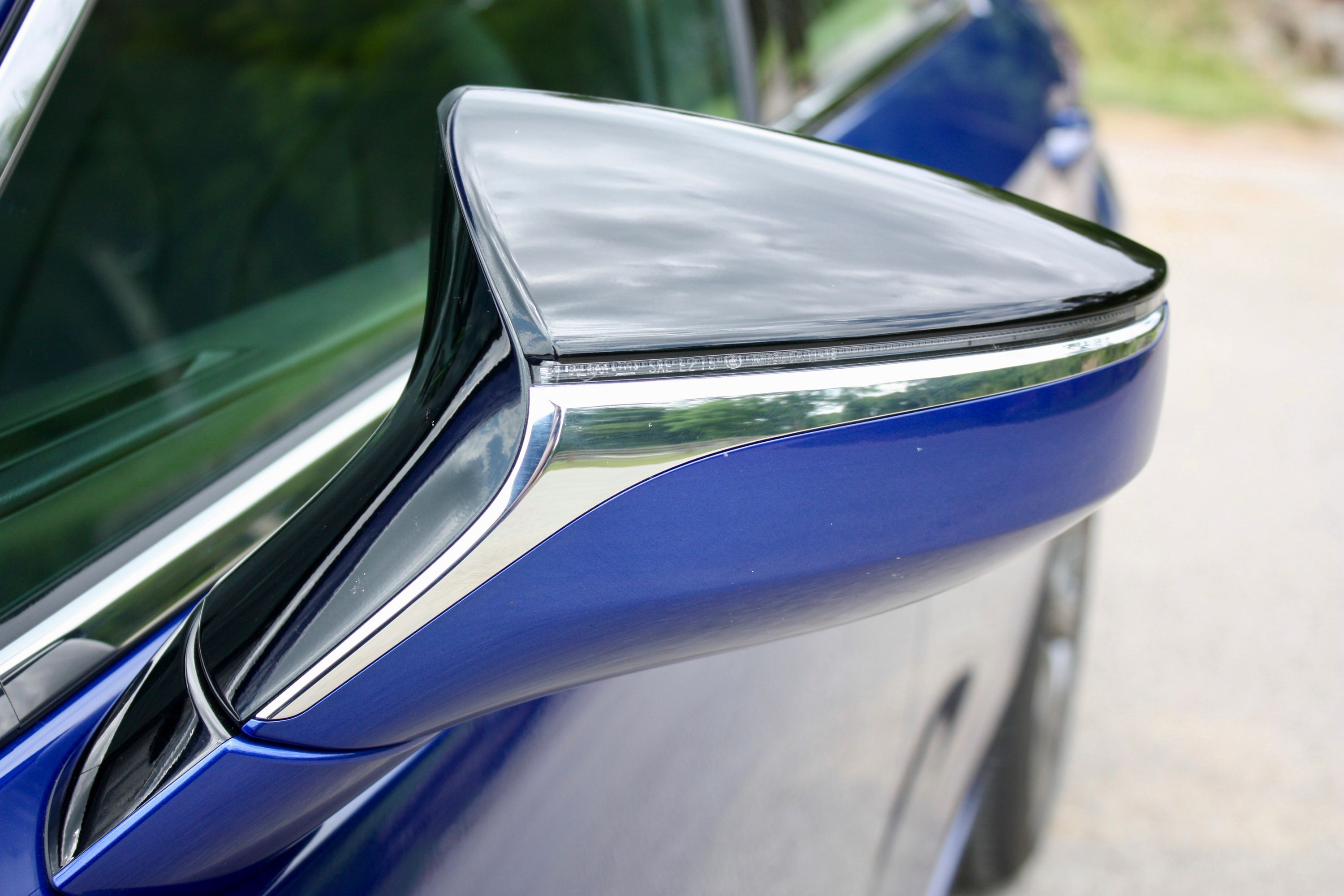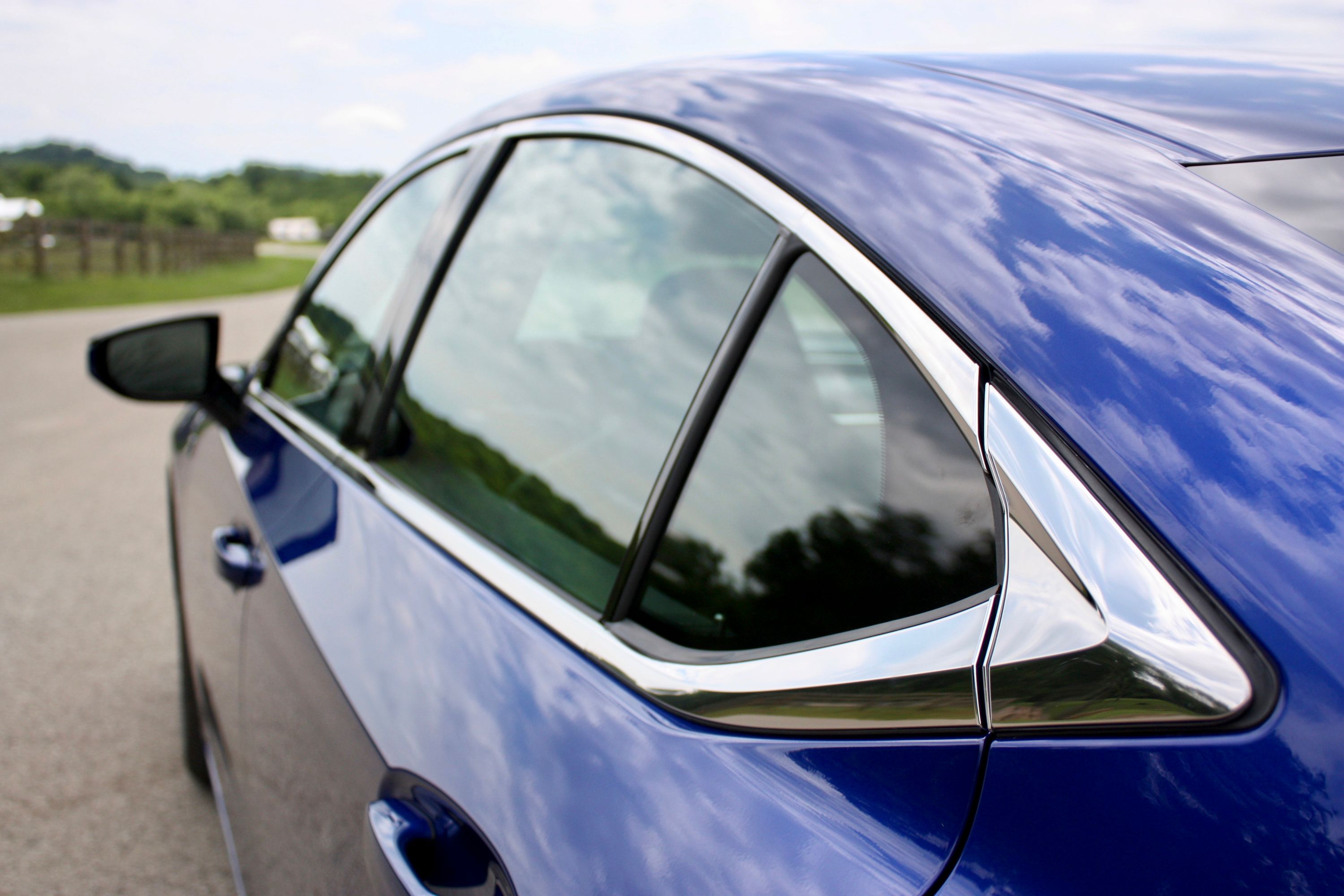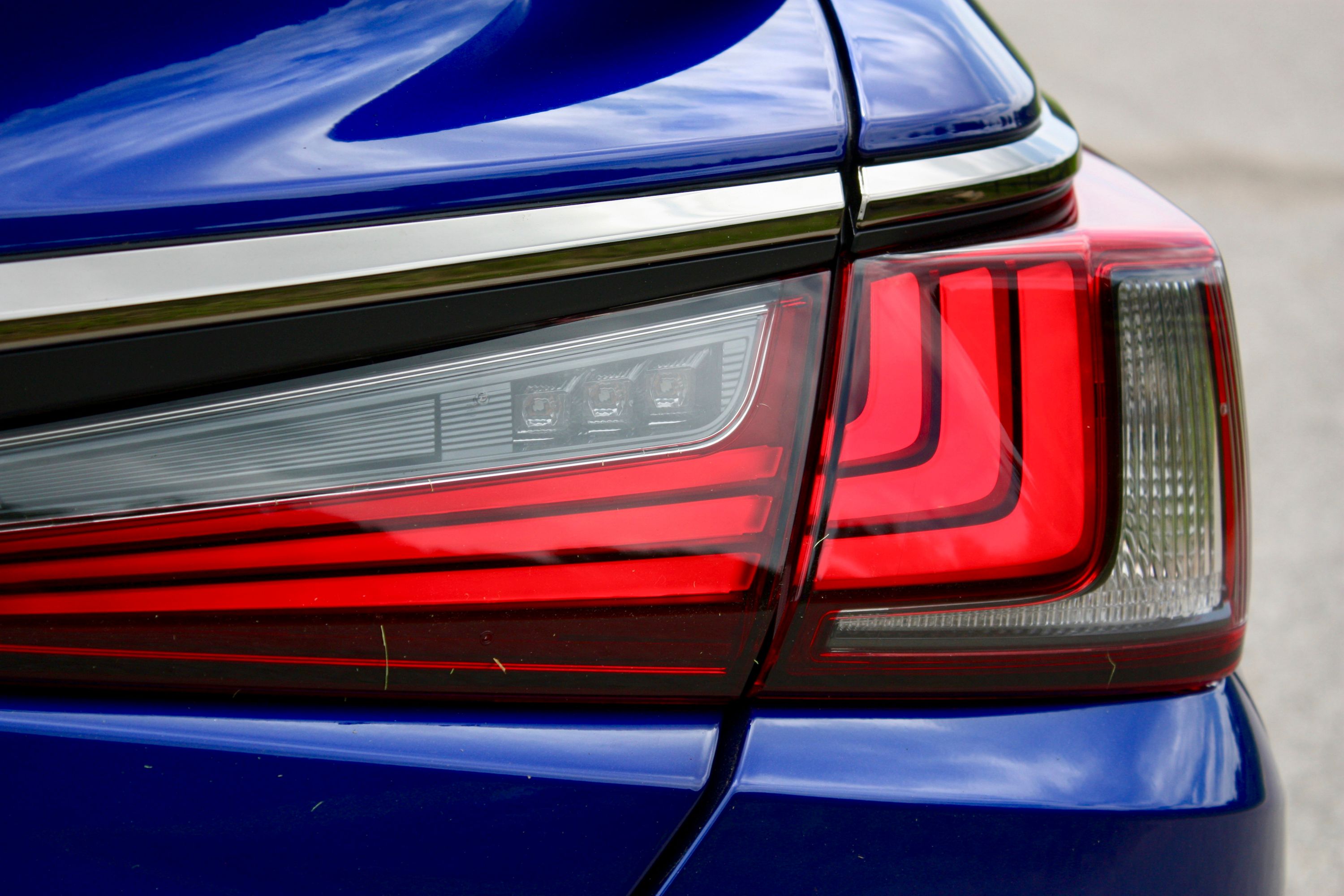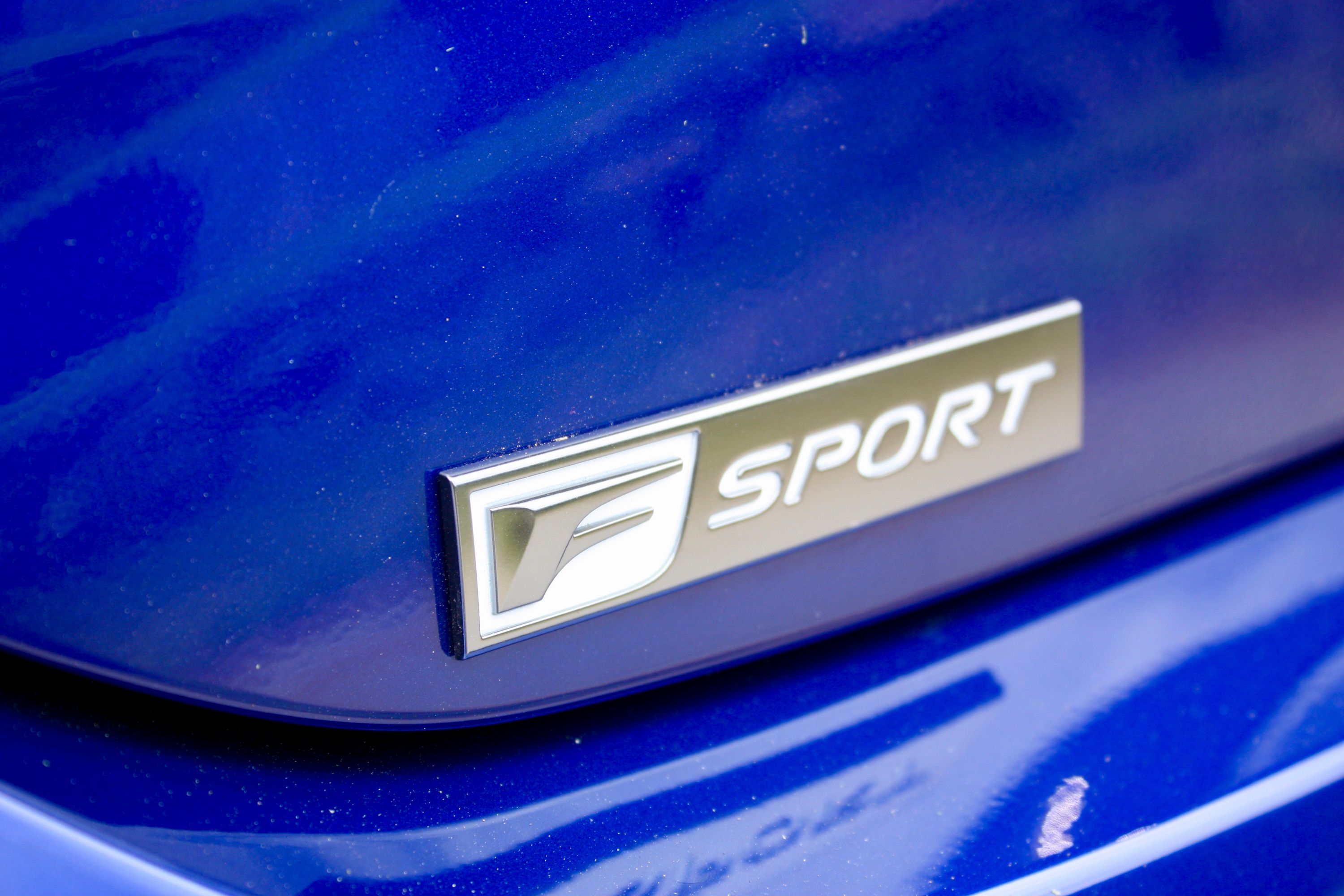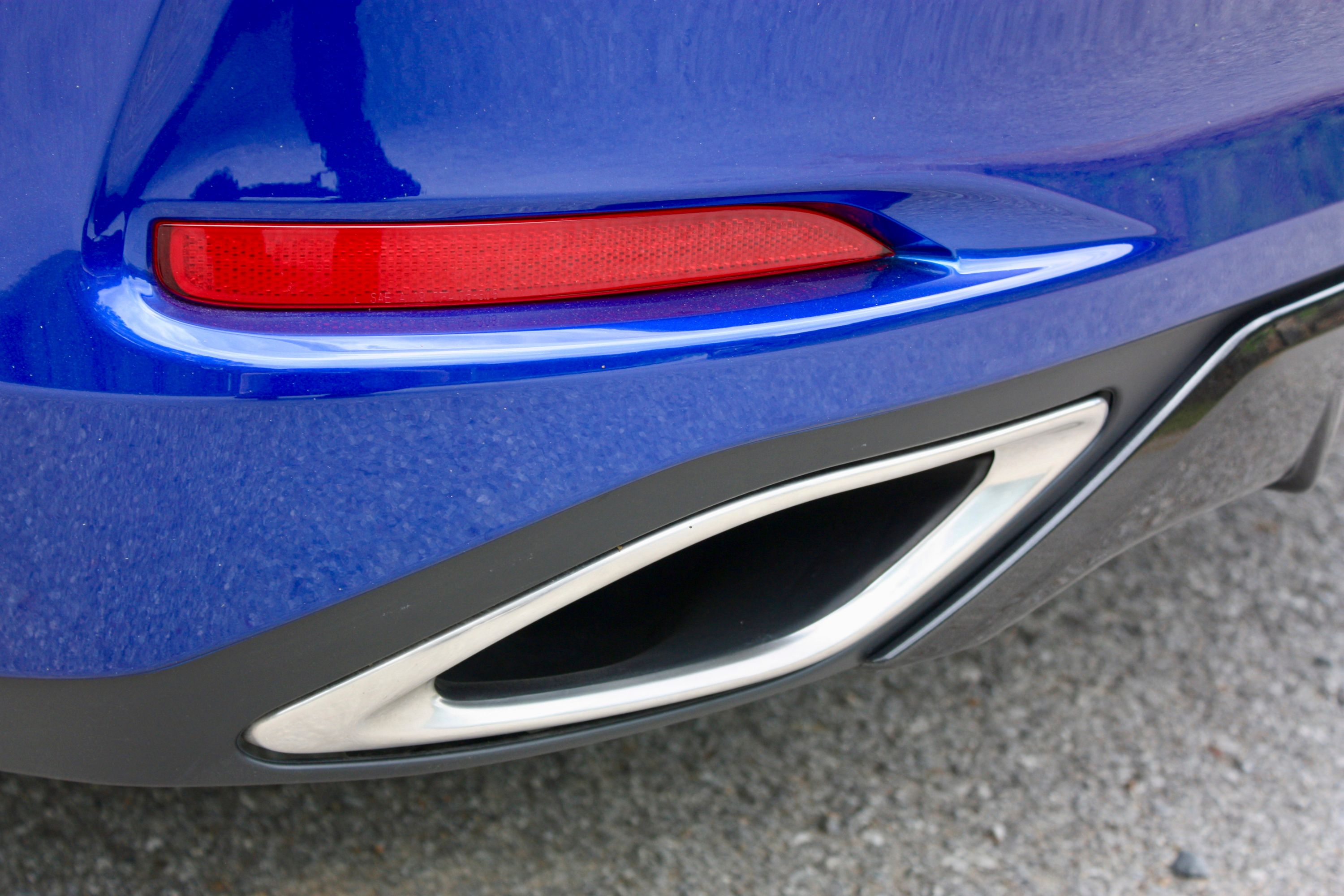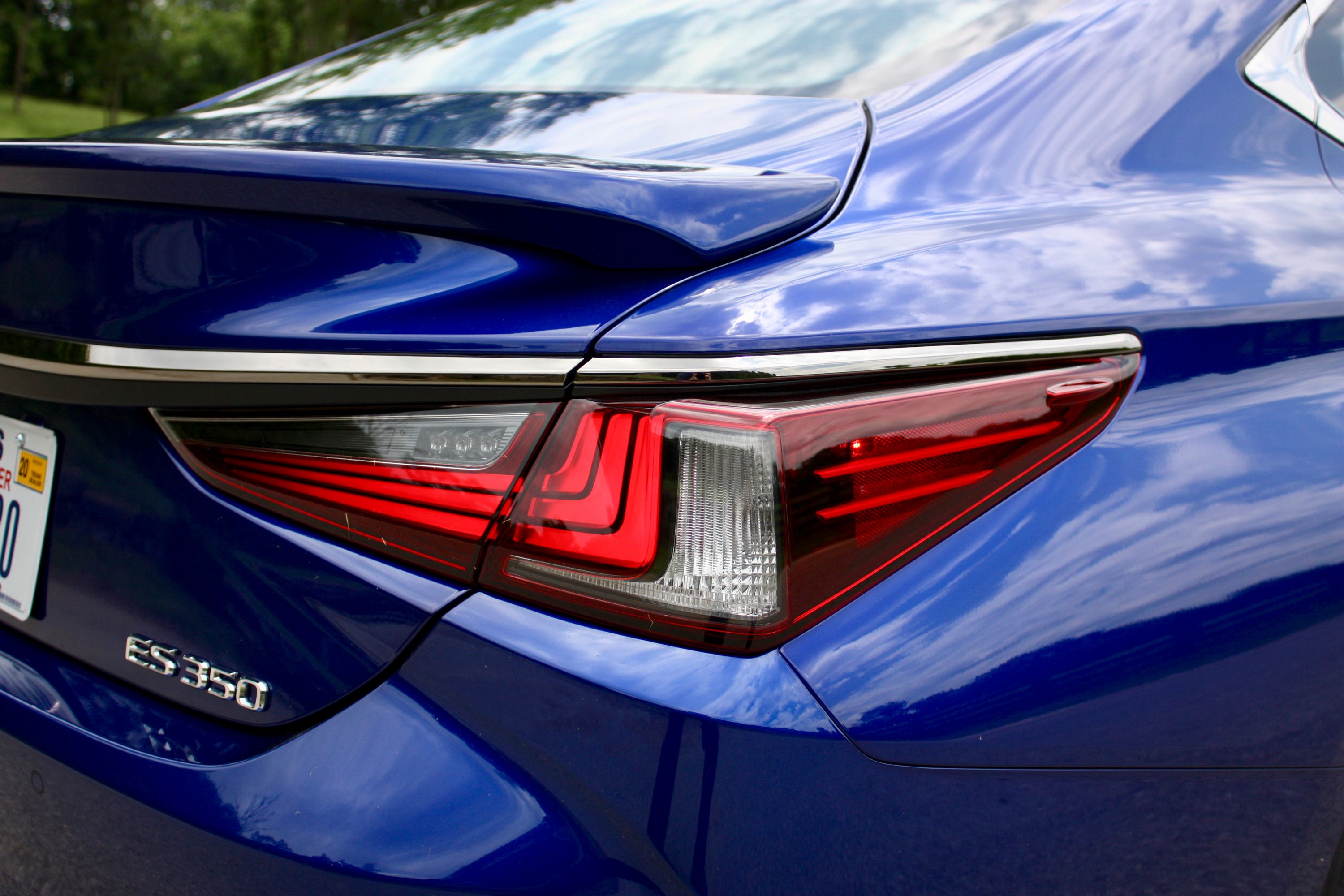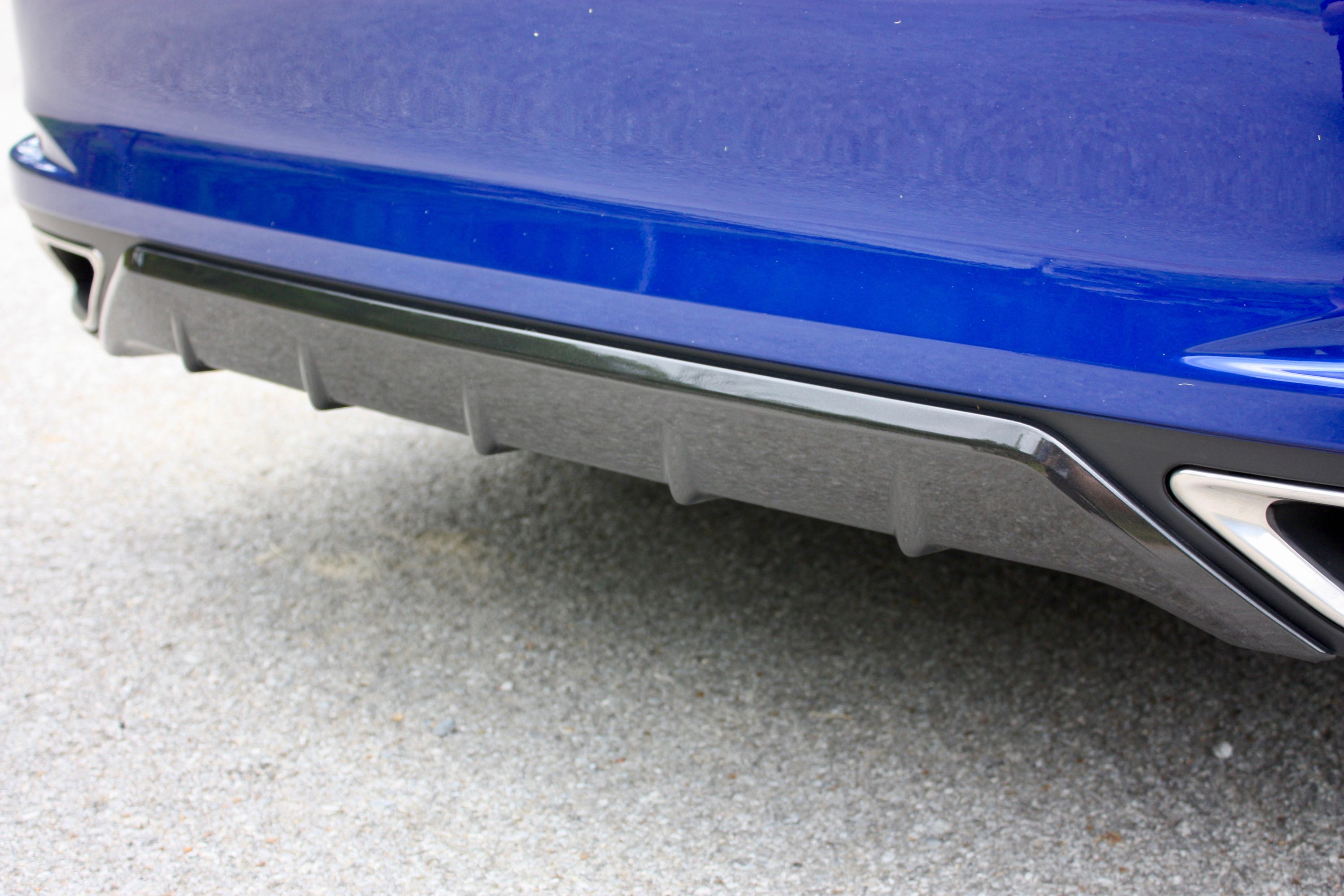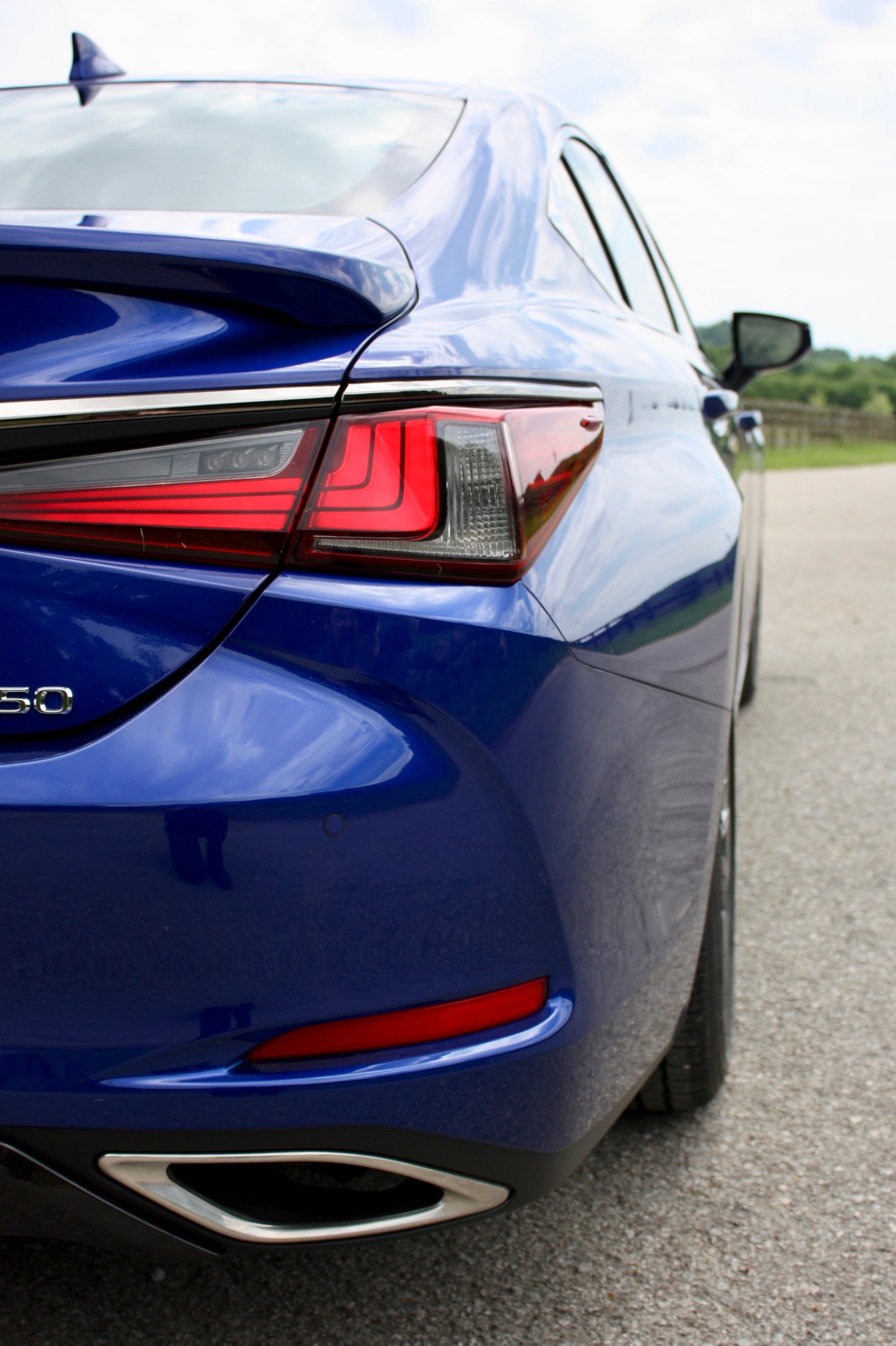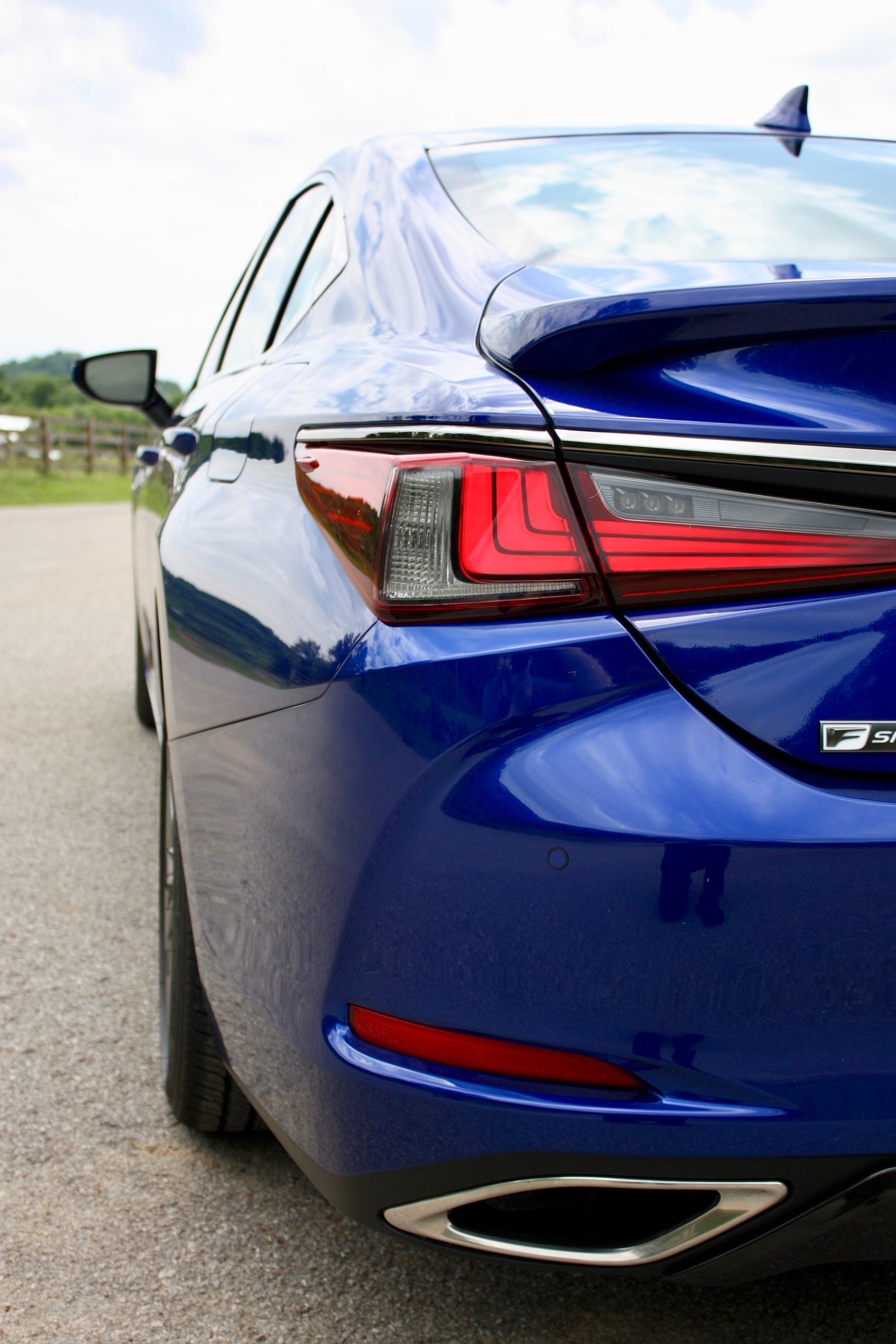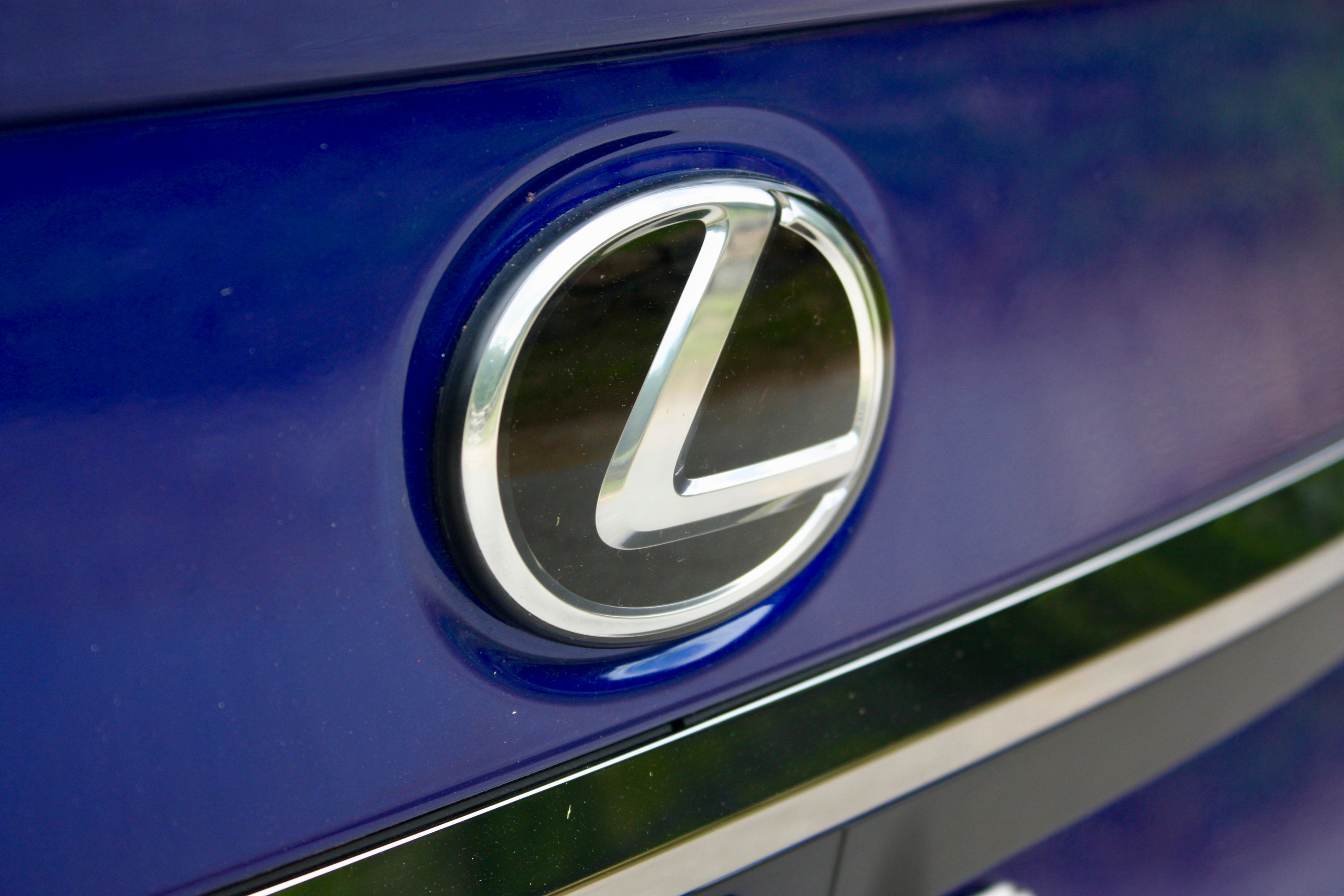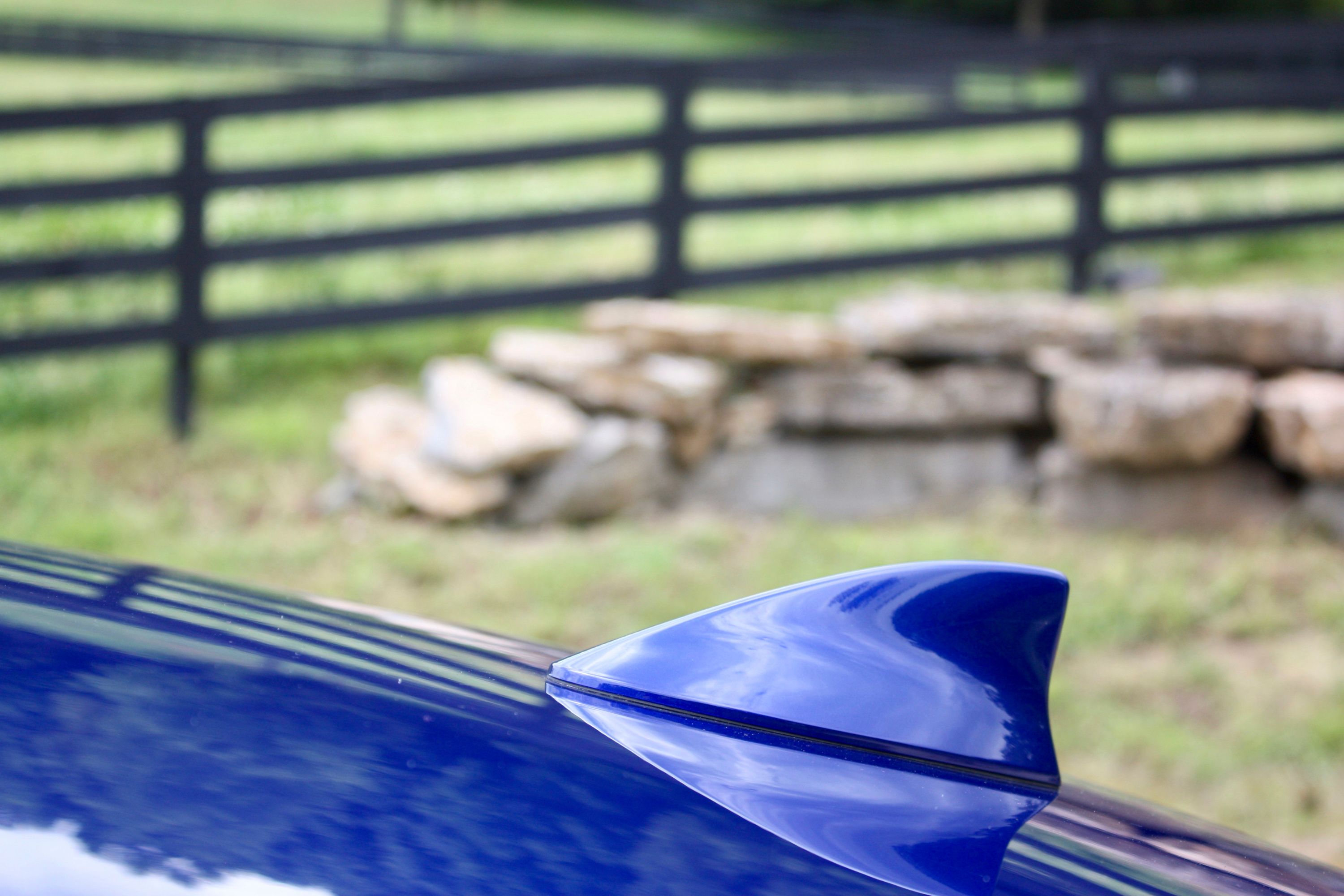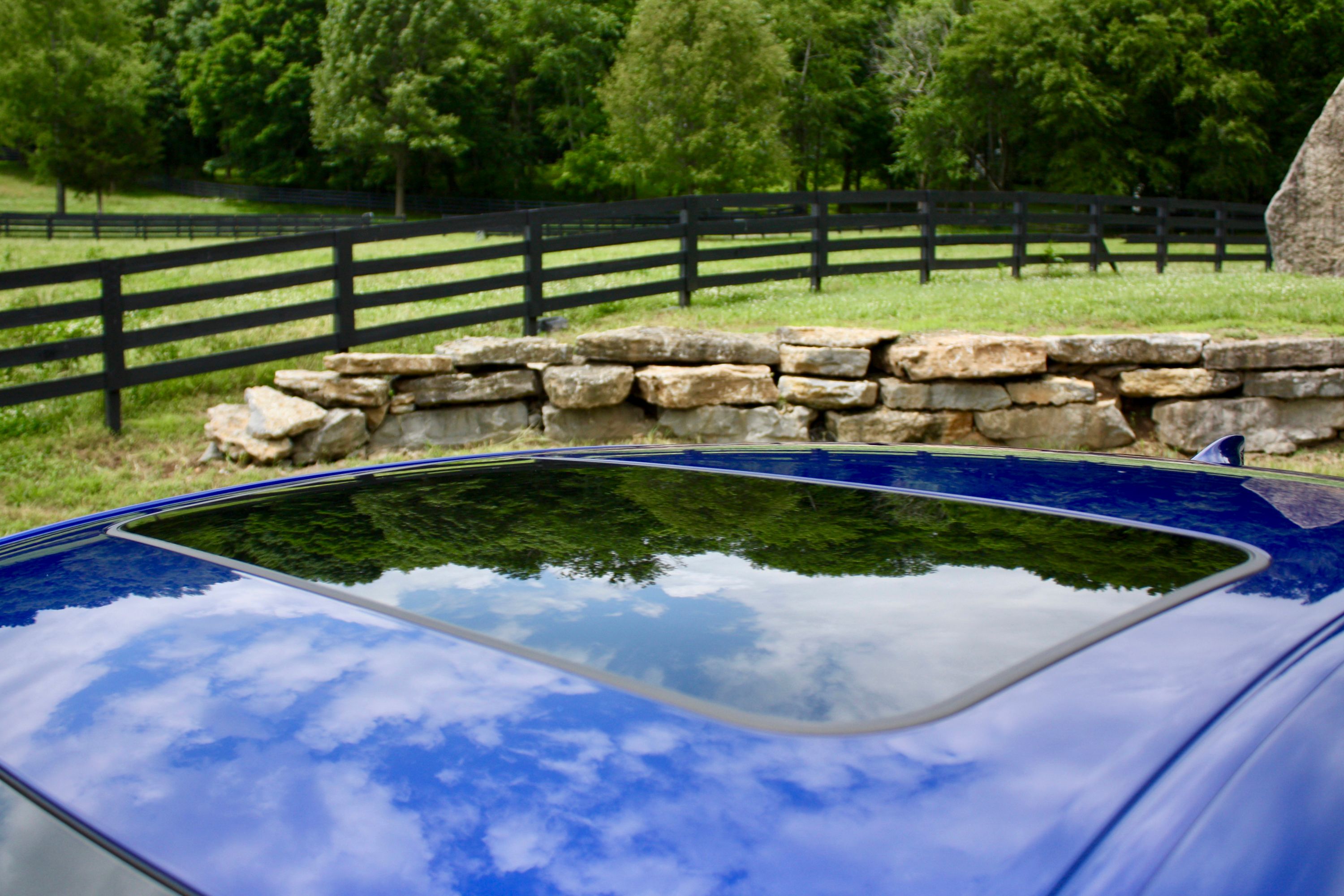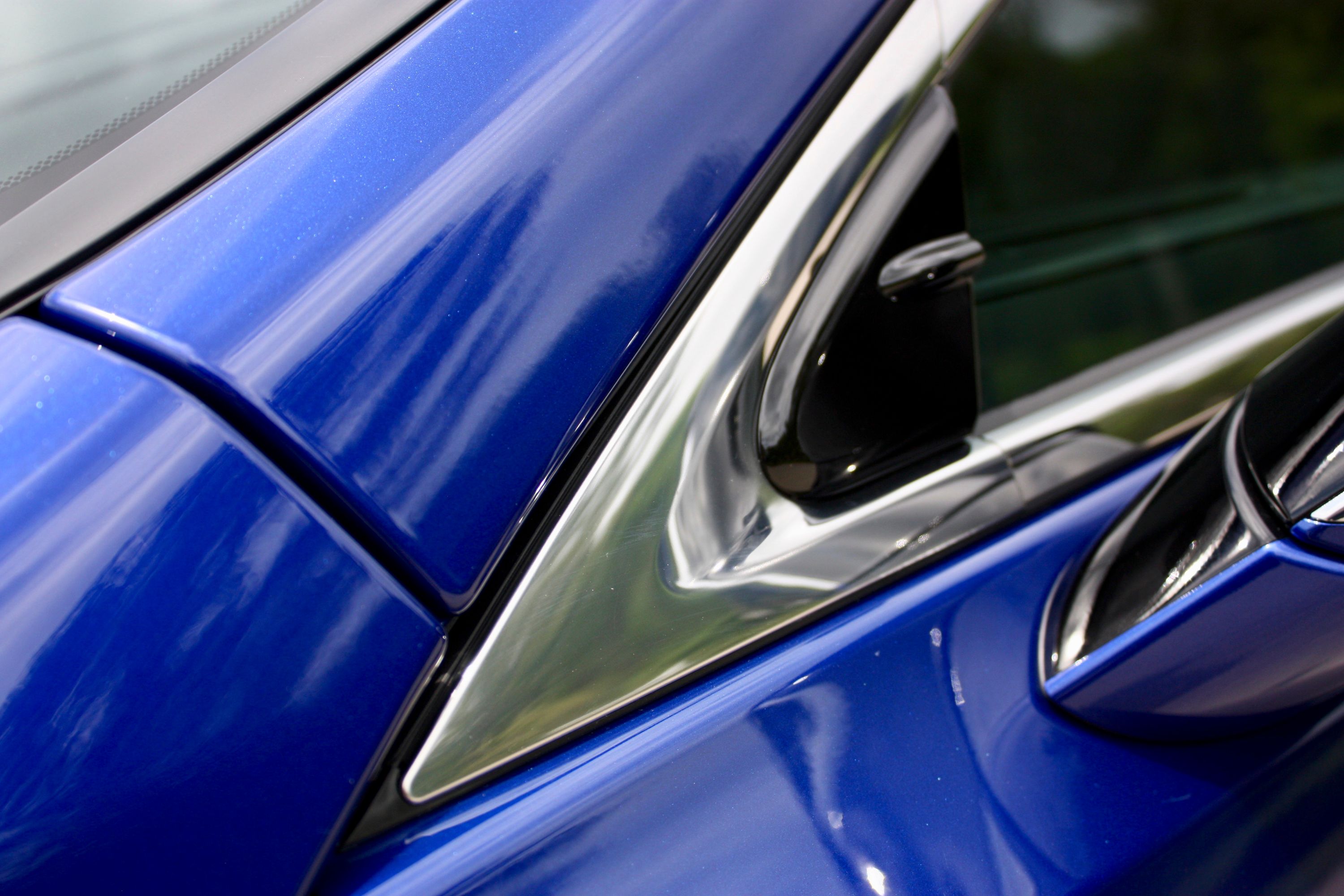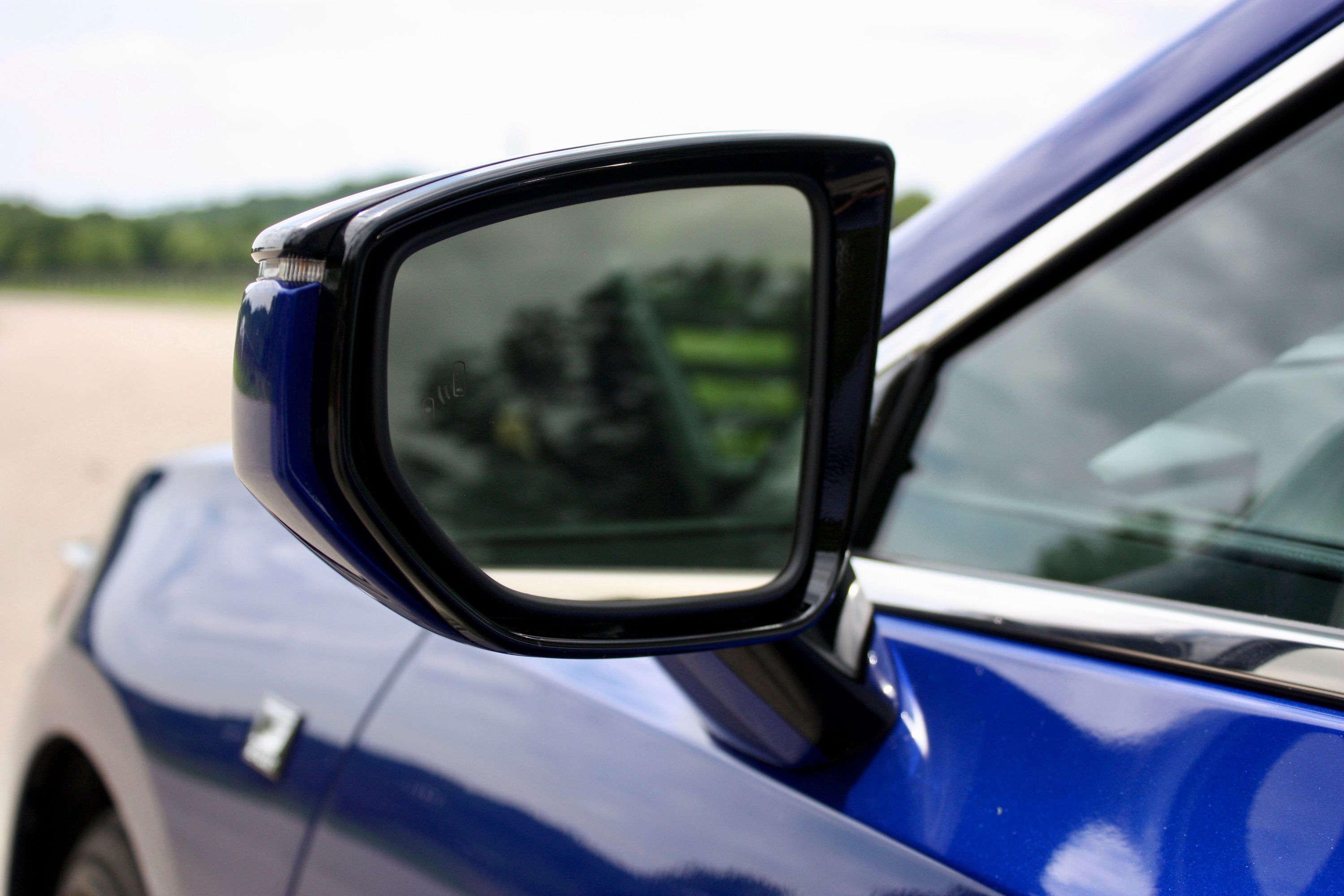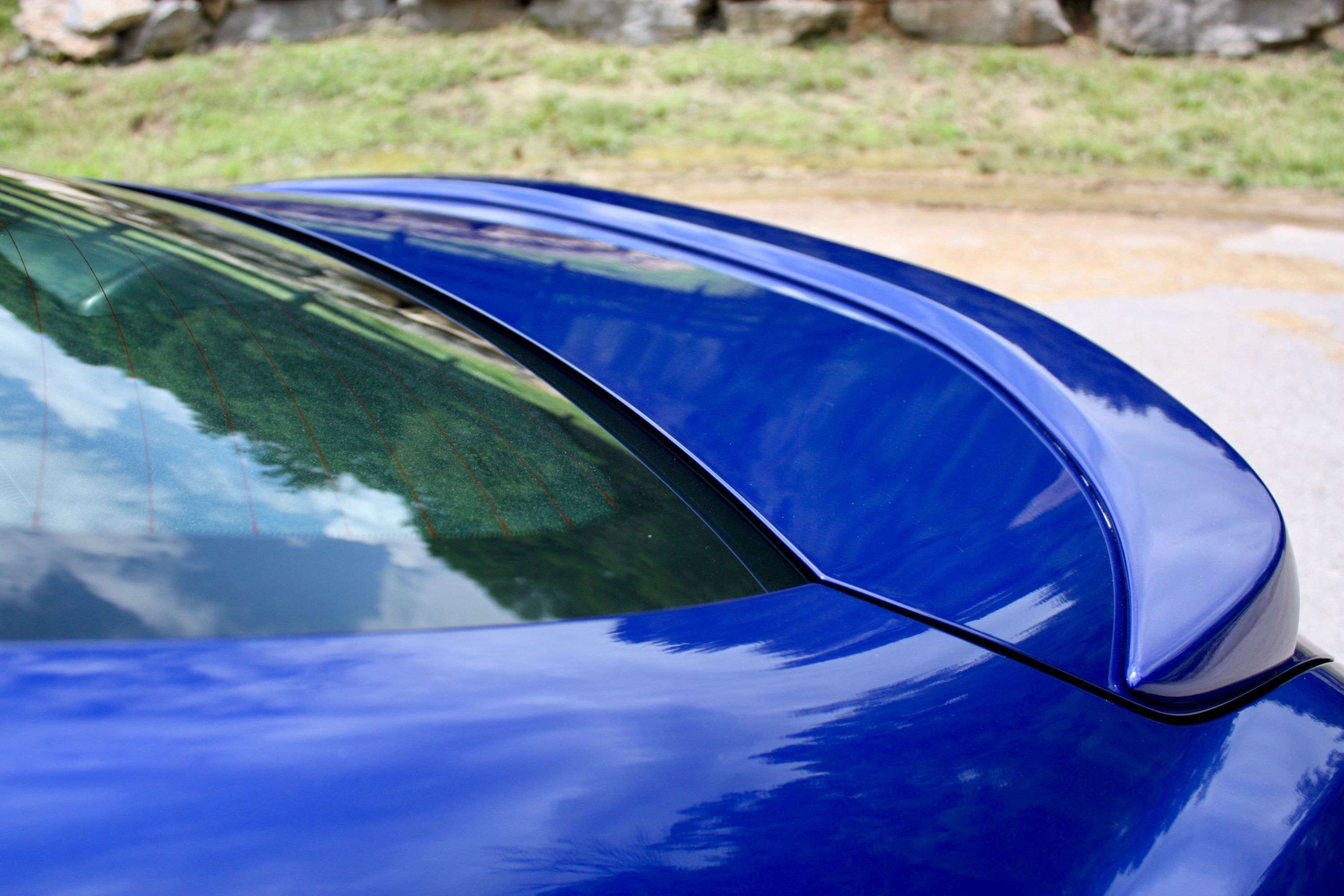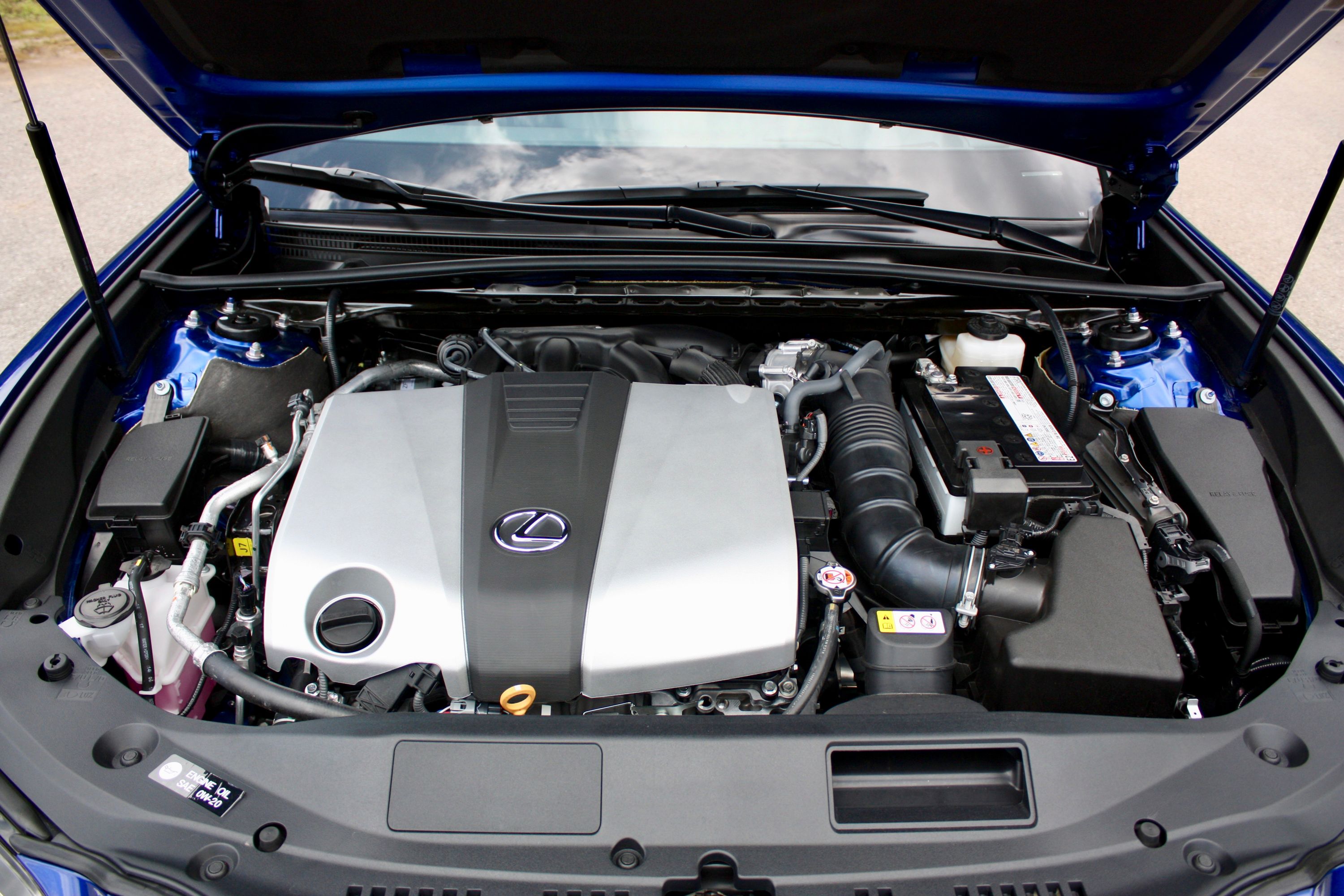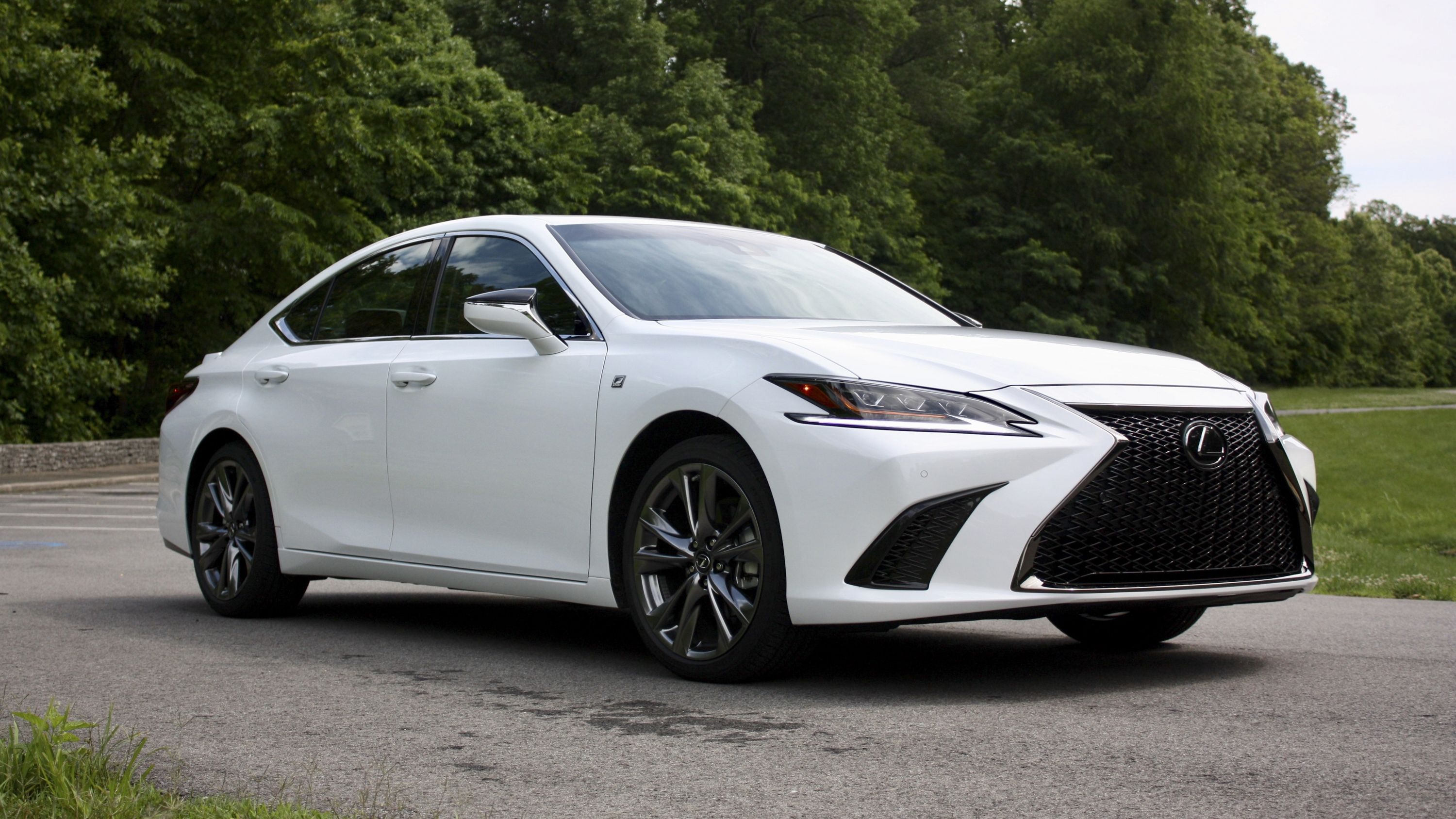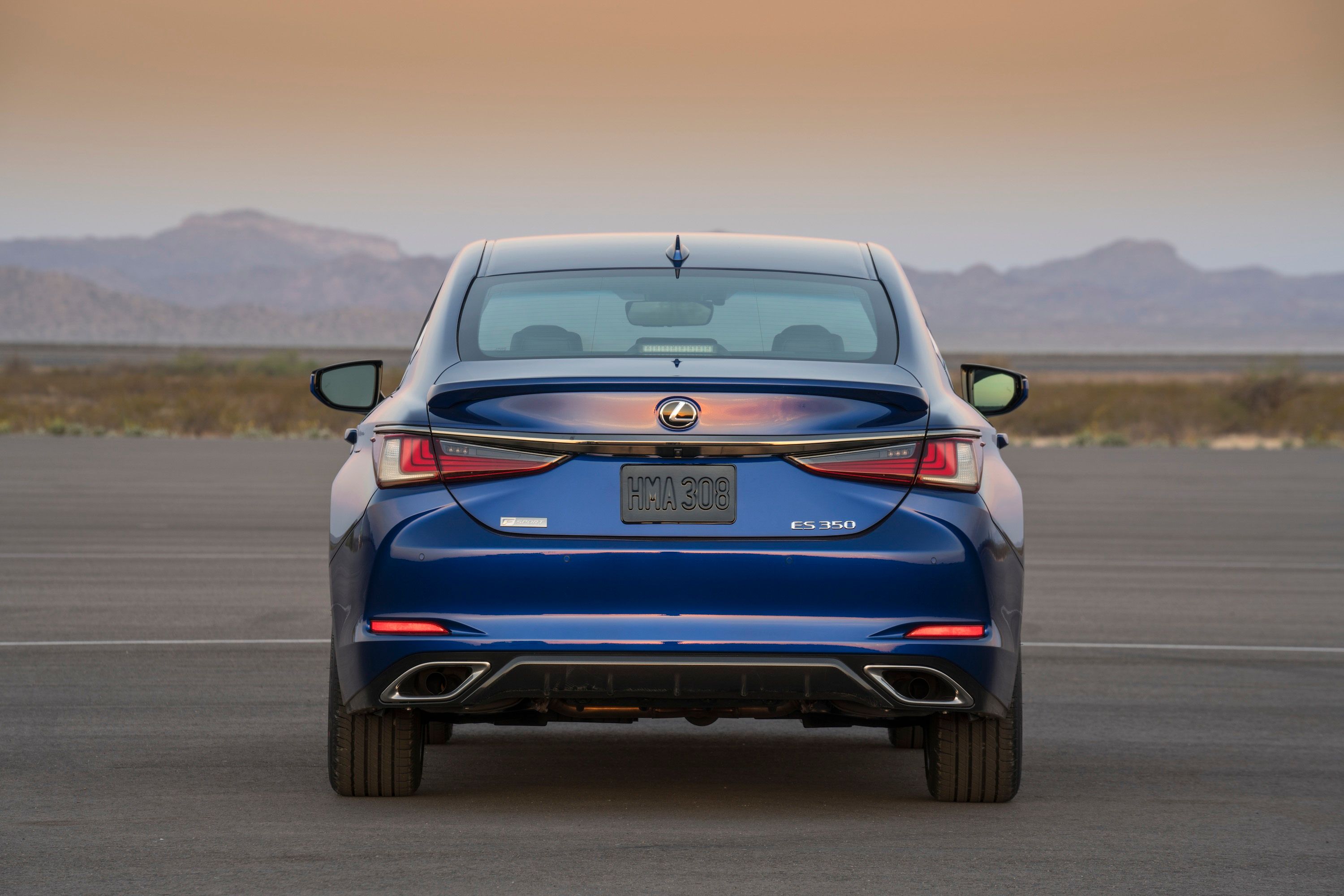The Lexus ES enters its seventh generation this year, offering a new design, fresh underpinnings, an updated engine lineup (including a hybrid), the latest infotainment goodies, and for the first time, a more engaging F Sport model variant. Framed as Lexus’ entry-level midsize luxury sedan, the ES is the most popular four-door in the brand’s stable, selling in 90 countries across the globe. However, does it have what it takes to compete with rivals from Europe? To find out, Lexus flew me out to Nashville, Tennessee, to give it a drive.
Continue reading to learn more about 2019 Lexus ES.
2019 Lexus ES - Driven
- Make: Array
- Model: 2019 Lexus ES - Driven
- Engine/Motor: V6
- Horsepower: 302 @ 6600
- Torque: 267 @ 4700
- [do not use] Vehicle Model: Array
2019 Lexus ES Exterior Styling
Lexus revamped the exterior styling for the ES heading into the 2019 model year, blessing the four-door with a sharper, more aggressive demeanor that definitely ups the sedan’s sporting intentions.
Let’s start in front, where we once again find the brand’s rather polarizing Spindle grille design. As before, the mammoth intake takes after the rather gorgeous Lexus LC Coupe, refreshing the look with new details such as vertical slats for the insert and satin plated trim.
On either side of the grille, you’ll find new, reshaped headlight housings, which come with sharp, drawn-back edges and checkmark-shaped daytime running lights. Options include triple-beam forward projectors with individual squared-off LED lighting elements, while the standard spec includes single LED projectors.
The 2019 ES now includes a more coupe-like shape for the profile, which adds another extra layer of sportiness, all without compromising interior space. The side angle also shows off a lower hood line, a lower roofline, and with passengers onboard, a lower seating position as well.
Occupying the corners is a quartet of 17-inch aluminum alloy wheels with a split five-spoke design, dark silver accents, and a machined finish, all as standard equipment. Alternatively, buyers can get the available Premium and Luxury packages, which toss in 18-inch wheels with either a split five-spoke design or a 10-spoke design.
Moving towards the tail, we find a rectangular rear end punctuated by long, horizontal LED taillights, which are set in a three-dimensional housing design. The bottom edge of the rear bumper incorporates a duo of geometric exhaust tips draped in polished chrome.
For those buyers looking to get into something a bit more expressive, Lexus is also offering a new F Sport model, which adds a slew of extra performance-inspired styling goodies. Up front, the F Sport’s grille replaces the base model’s standard insert slats with a unique mesh pattern similar to that of the Lexus LS flagship sedan, plus a jet-black finish and dark trim surround. Black mesh was also added to the side intakes, which are wider on the F Sport model, while unique 19-inch wheels inspired by the LC coupe take up residence under the fenders, rocking a handsome a dark graphite finish. Around back, the F Sport model adds a small trunk lid spoiler and additional rear dark-colored trim pieces.
When it comes to the paint, buyers can choose between 12 different exterior colors, some of which are unique to specific model variants. New additions to the list include Moonbeam Beige Metallic and Sunlit Green. Meanwhile, the F Sport is offered in exclusive shades like Ultra Sonic Blue Mica 2.0 and Ultra White.
Finally, the 2019 Lexus ES is larger than the outgoing model, adding an extra 2.6 inches to the length, 1.8 inches to the width, 2.0 inches to the wheelbase, 0.4 inches to the front track, and 1.5 inches the rear track. It’s also lower by 0.2 inches. All told, the new ES is bigger than even the BMW 5 Series!
2019 Lexus ES Exterior Dimensions
|
Wheelbase |
113 inches |
|
Overall Length |
195.9 inches |
|
Overall Width |
73.4 inches |
|
Overall Height |
56.9 inches |
|
Front Track |
62.9 inches |
|
Rear Track |
63.4 inches |
TopSpeed’s Take
Aesthetically speaking, the 2019 Lexus ES has a lot going for it. The profile and rear view are definitely well-executed, with proportions that offer a mix of elegance and sportiness that plays well in this segment, especially with the wider, lower stance. The paint choices are also top-notch, with a variety of unique options you aren’t likely to find from the European rivals.
Of course, the big controversy (and I do mean big) has to be that front grille. Plenty of folks deride the frontend of the ES as garish and over-styled, which is definitely a worthwhile critique when viewed against alternatives from Audi and Mercedes.
That said, we would actually prefer the front of the head-turning Lexus over the fade-into-the-background fascias you get from the Germans. Standing out the from the crowd matters in this segment, and the Lexus undoubtedly accomplishes that goal.
I can also say that pictures have never really played well with the Spindle grille, and that the frontend looks quite a bit better in person. All told, if you’re trying to break from the European status quo, this is where you start.
Throw in the aesthetics upgrades of the F Sport model, and you can go ahead and double underline all of the above statements.
2019 Lexus ES Interior Design
The 2019 Lexus ES offers passengers an all-new interior to enjoy. The LC Coupe once again provides the inspiration, with the various instruments and controls focused on the hot seat in a “driver-centric” arrangement.
Critically, the ES offers more interior space than before, especially in back, where headroom sees a significant boost. Even with the lower roofline, the lower seating position helps significantly in adding a sense of spaciousness.
Up front, there’s a newly redesigned three-spoke steering wheel, which comes with optional wood trim and a heating function. The seats are 10-way power adjustable units, and they come with optional heating and optional ventilation.
When it comes to customization, buyers get a nice variety of choices, including three interior colors, four trim types, three wood trims, and three upholstery materials.
Grab the F Sport model, and you’ll also get the Circuit Red interior color scheme, with red seats and door panels, plus some very cool Hadori Aluminum trim bits that add a sort of folded metal look to the dash and doors.
Running it all is an LCD instrument display, with a large central analog tachometer, a digital speedometer, and a digital multi-information display. Standard spec adds a 7.0-inch screen on the dash, while the F Sport ups the ante to an 8.0-inch screen. You can also get the optional 12.3-incher with the Navigation package. A touchpad on the central tunnel makes it easy to navigate on screen thanks to a haptic feedback feature that jiggles your finger when mousing over icons.
Tech lovers will dig the optional heads-up display, which can be customized to relay info of your choosing onto the windshield, just below your field of vision, all while offering the largest viewable area of any HUD in the class.
Standard spec includes a 10-speaker Pioneer audio system, while options include a 17-speaker Mark Levinson system pumping out 1,800 watts.
Further tech features include onboard Wi-Fi provided through Verizon, keeping you connected while on the move. The 2019 ES is also the first Lexus to come equipped with Apple CarPlay and Amazon Alexa support, while connected features like Lexus Enform Service Connect, Lexus Enform Remote, and the Lexus Enform App Suite 2.0 round it out.
As you might expect, the 2019 ES also gets a wide selection of new safety technology as standard thanks to the Lexus Safety System+ 2.0. This includes features like a Pre-Collision system with daytime bicyclist detection, Lane Departure Assist, Lane Tracing Assist, All-Speed Range Dynamic Radar Cruise Control, Road Sign Assist, and more.
Under the skin, the ES’ new platform helps significantly when it comes to reducing unwanted NVH (noise/vibration/harshness). Sound deadening material was added to 93 percent of the floor pan, which is a significant boost over the outgoing model’s 68 percent. There’s also additional underbody covers and front fender liners. Lexus said it even managed to reduce things like driver eyeball movement, which means less driver fatigue for the long haul.
Unfortunately, the updated rear rigidity-enhancing components make it so you can’t fold down the rear seat, reducing cargo volume a bit. However, there’s still a rear-seat pass-through, plus loads of storage thanks to a sliding armrest, seat back pouches, and more, plus there’s an optional hands-free trunk opener to make the most of what’s there. Still, even with the seats up, rear cargo room is adequate, increasing to 16.7 cubic feet for the 2019 model year.
2019 Lexus ES Interior Dimensions
|
Seating Capacity |
5 |
|
Headroom (front) |
37.5 inches (w/ moonroof), 37.6 inches (w/ panoramic roof) |
|
Headroom (rear) |
37.8 inches |
|
Legroom (front) |
42.4 inches |
|
Legroom (rear) |
39.2 inches |
|
Shoulder Room (front) |
55.9 inches |
|
Shoulder Room (rear) |
54.3 inches |
|
Hip Room (front) |
55.0 inches |
|
Hip Room (rear) |
54.3 inches |
|
EPA Passenger Volume |
99.9 cubic feet |
|
EPA Cargo Volume |
16.7 cubic feet |
TopSpeed’s Take
As soon as I slid into the 2019 Lexus ES, I was immediately struck by just how comfortable and roomy it was. Whether you’re sitting in front or in back, there’s always loads and loads of space, and at 6’1”, I was never left wanting for more. If you expect to put that rear bench to good use on a regular basis, fear not with this one.
Aesthetically speaking, we think the interior looks pretty good. The layout is simple yet elegant, with the number of hard-button controls reduced to the bare minimum, as the majority of functions are accessed via the the dash-mounted digital screen. We even like the little knob stubs on top of the gauge hood - it’s a unique solution, and it works.
The materials were all top-notch, giving the ES a lovely, high-end feel. We particularly liked the Hadori Aluminum trim bits on the F Sport, and the shift paddles were fun and looked great, even if manual shifting on the eight-speed automatic was a bit meaningless (more on that in the next section).
However, one of the ES’ greatest assets have to be the seats, which I found to be fantastic throughout the driving experience. Also impressive was the ventilation feature, which worked its magic and always kept me comfortable, even while cruising around Nashville in 95-degree heat. The F Sport’s seats in particular caught my attention, as not only did they offer all the good stuff as the base model’s sitters, but a solid dose of support when driving spiritedly as well. Top marks on the seats, Lexus.
The infotainment system worked fine, while the stereo came in exceptionally clear, even on the base model.
I also noticed just how much the lower hood line enhanced forward visibility, and never once did the low seating position obscure the road ahead. However, rear visibility isn’t the greatest, but luckily the backup camera and digital guidelines make up for it.
2019 Lexus ES Drivetrain, Performance, And Chassis
As it has in the past, the Lexus ES once again employs a front engine, FWD drivetrain layout for the 2019 model year. Providing the motivation in both the standard ES 350 and the F Sport model variant is a 3.5-liter V-6, which comes equipped with features like D-4S fuel injection and variable valve timing. Interestingly, the V-6 can even switch between the standard Otto combustion cycle and the more efficient Atkinson combustion cycle as needed. Lexus also bumped up the redline from 6,200 to 6,600 rpm.
All told, the ‘six now makes upwards of 302 horsepower at 6,600 rpm and 267 pound-feet of torque at 4,700 rpm, improving on the outgoing model by 34 extra hoses and 19 extra pound-feet. Fuel efficiency also sees a bump, and is now estimated at 22 mpg in the city, 33 mpg on the highway, and 26 mpg combined. Put your foot down, and the run from 0 to 60 mph happens in 6.6 seconds, with top speed electronically limited at 131 mph.
Helping to make these numbers possible is a new 8-speed Direct Shift transmission, which replaces the outgoing six-speed automatic and comes equipped as standard on all models except the hybrid. Highlight features include an ultra-thin torque converter and a multi-plate lock-up clutch. The extra gears also make the transmission more flexible when it comes to picking an appropriate ratio, and there’s something called AI Shift Control, which will more accurately choose the appropriate shifting behavior based on your driving style.
For the greener buyers out there, there’s the ES 300h, which mates a 2.5-liter Atkinson-cycle four-cylinder with an electric motor and compact hybrid transaxle. Output is rated at 215 horsepower and 163 pound-feet, 20 horsepower and 12 pound-feet more than the previous ES hybrid, while max fuel returns is estimated at an impressive and 44 mpg, making for the highest fuel returns of any luxury model sold in the U.S. without a plug. Lexus also moved the nickel metal hydride battery from the trunk to underneath the rear seat, enhancing rear cargo room and weight distribution in the process.
The hybrid powertrain mates with a continuously variable transmission to put the power to the front axle, offering six simulated gears for less of that “rubber band” feel commonly associated with CVTs. There’s also a feature called Auto Glide Control for more predictable regenerative braking response. Put your foot down, and the 300h manages a run from 0 to 60 mph in 8.1 seconds, while the top speed is electronically limited at 112 mph.
One of the biggest updates with the next-gen ES is under the skin, where you’ll find a new chassis from Toyota’s latest move to modular platforms. It’s called the Global Architecture-K (GA-K), and it was designed to provide a more dynamic driving experience, all while retaining the inherent comfort and quiet you’d expect.
Part of that comes from structural rigidity-enhancing materials like high-strength steel, plus the inclusion of additional structural adhesives. Lexus says it used as much as 785 inches of adhesives with the ES, which is more than twice that of the outgoing model.
The ES also uses new laser screw welding in 120 different locations on the chassis, while a new strut tower brace in front, additional reinforcement panels for the strut towers, and new radiator support braces keep it tight. Aluminum was used for the hood and the fenders to shave some weight.
The suspension includes MacPherson struts in front with a trailing arm, while the rear utilizes a multilink setup with stabilizer bars. Lexus revised the handling characteristics by increasing the caster angle by 2 degrees and increasing the caster trail by 0.3 inches.
And while it doesn’t offer any extra ponies under the hood, F Sport models stay true to the badge thanks to a Adaptive Variable Suspension setup. This system offers tons of adjustment to maximize the car’s prowess in the twisty bits, incorporating data on g-force, steering angle, yaw rate, and more to find the optimal setup at a moments notice. The F Sport also comes with bigger anti-roll bars for even crisper handling.
Pointing the front wheels is a rack-assist Electric Power Steering system, which replaces the steering-column-mounted assist motor on the old ES with a motor mounted directly to the steering rack, thus enabling more precise steering inputs.
And of course, there’s a wide variety of drive modes to choose from, which affect things like throttle response, climate control settings, transmission settings, steering assist, and the dampers. Settings include modes such as Eco, Normal, and Sport, while F Sport models also include Sport S, Sport S+, and Custom modes.
Finally, all-season tires are equipped across the line.
2019 Lexus ES Drivetrain And Performance
|
Fuel Capacity |
15.9 gallons |
|
Drivetrain Layout |
Front engine, FWD |
|
Engine (gas only) |
3.5-liter naturally aspirated V-6 |
|
Horsepower (gas only) |
302 hp at 6,600 rpm |
|
Torque (gas only) |
267 pound-feet at 4,700 rpm |
|
0-to-60 mph (gas only) |
6.6 seconds |
|
Top Speed (gas only) |
131 mph (electronically limited) |
|
Transmission (gas only) |
8-speed automatic |
|
Engine (hybrid) |
2.5-liter naturally aspirated in-line four-cylinder |
|
Horsepower (hybrid) |
215 hp |
|
Torque (hybrid) |
163 pound-feet |
|
0-to-60 mph (hybrid) |
8.1 seconds |
|
Top Speed (hybrid) |
112 mph |
|
Transmission (hybrid) |
continuously variable automatic |
|
2019 Lexus ES Chassis And Suspension |
|
|
Front Suspension |
MacPherson strut-type |
|
Rear Suspension |
Trailing arm multilink |
|
Steering |
Rack-mounted electric rack and pinion |
|
Tire Size |
215/55R17, 235/45R18, 235/40R19 |
|
Curb Weight |
3,649 pounds |
|
Weight Distribution % (front/rear) |
61 / 39 |
TopSpeed’s Take
From the off, the Lexus didn’t feel nearly as big as it should have. Rather, it felt sharp and nimble, with far more engagement than I expected. Tackling the backroads around Nashville, the ES was planted and confidence inspiring, and definitely put a smile on my face more than once, all while maintaining an adequate level of composure and comfort while cruising.
Adding in the adaptive suspension of the F Sport model, the chassis felt even more alive, handling whatever I could throw its way without breaking a sweat. Makes sense - these are the same components found on the LC Coupe, and clearly, Lexus knows what it’s doing when it comes to extracting every last bit of fun from the platform.
That all said, I never once forgot the ES was running on a FWD platform.
Don’t get me wrong - Lexus polished the platform to an utterly brilliant shine, and the ES is exceptionally nimble and fun to drive for what it is. The rigidity can definitely be felt, and the adaptive suspension works wonders. The Lexus team has a lot to be proud of.
Still, at the end of the day, FWD is FWD. Torque steer is almost completely eliminated, but it’s still there if you really push it. The front end grips with tenacity, but will still scrubs out in unyielding understeer if you go over the limit. The front tires are communicative, but still scramble for grip on hard launches.
Indeed, if it’s a true, died-in-the-wool sports sedan that you’re after, the Lexus ES is not the optimal choice.
Of course, most buyers (i.e., normal people) will be thrilled by the driving dynamics that it has to offer, especially the F Sport model, and it’s really only the more hardcore performance enthusiasts out there that will find fault with the FWD power delivery.
Moving on, let’s talk about the hybrid model. Under the hood of the 300h, you’ll find the same electrified powertrain as the new Avalon hybrid. However, the Lexus gets different tuning, and when I put my foot down, it definitely felt like there was less battery assistance than I experienced in the Avalon. Perhaps the electrons were running a bit low, or the hot weather was affecting performance, but overall, it felt significantly slower. Unfortunately, that’s reflected in the 0-to-60 mph time, with the 300h clocking in at a plodding 8.1 seconds.
Luckily, the V-6 is quite a bit quicker, managing the same benchmark in a much more respectable 6.6 seconds. Sure, it’s not exactly neck-snapping, and considering the way this thing looks (especially the F Sport), you might expect a little more muscle. That said, I found the 302 horses to be adequate for most situations.
2019 Lexus ES Pricing
The 2019 Lexus ES will go on sale this September. Pricing is so far unannounced, but expect the new model to more or less mirror that of the old model, which currently starts at $38,950.
2019 Lexus ES Competition
Mercedes-Benz C300 Sedan
When it comes to luxury sedans, the C-Class is a true icon. The latest example comes equipped with a turbocharged 2.0-liter inline four-cylinder engine, which connects to the rear wheels through a nine-speed automatic transmission. Output is rated at 241 horsepower, with the run to 60 mph tackled in 5.8 seconds. Sport suspension and sport brakes are optional, while a 17-inch split five-spoke wheels and and an attractive cabin space are standard. Styling starts at $40,250.
Read our full review of the 2018 Mercedes-Benz C-Class.
Audi A4
Next on the list of Teutonic rivals is the A4 from Audi, which mounts a turbocharged four-cylinder powerplant under the hood to produce as much as 190 horsepower, enabling a run to 60 mph in 7.1 seconds. Alternatively, you can go big with the 252-horsepower iteration, which cuts the 60-mph sprint to 5.7 seconds. Standout features include standard heated front seats and leather upholstery, while the Audi virtual cockpit and heads-up display are optional.
Read our full review of the 2018 Audi A4.
Should You Buy a 2019 Lexus ES?
Despite the mass exodus to crossovers we’ve all been hearing about for the past several years, Lexus still believes the sedan body style is a viable and important segment. Indeed, the automaker reports that it managed to sell some 400,000 sedans just last year, and if gas prices fluctuate, we could see a major resurgence.
Regardless, those in the market for a well-equipped, comfortable, quiet, roomy, smartly priced luxury sedan are well advised to check out the 2019 Lexus ES. This thing comes with all the bells and whistles, and it’s definitely a worthy rival to anything coming from Europe when it comes to the essentials of the segment.
That said, the new Toyota Avalon seems like an even smarter buy for the majority of folks out there. After all, the Avalon offers the same platform, the same powertrain, and even the same adaptive suspension as the ES, and it's equally as comfortable, roomy, and quick, all for significantly less outlay.
But don’t take that as disrespect for the ES - rather, it’s intended as praise for the Avalon. It really is that good.
So then - why go for the ES instead?
First off, the Lexus offers a nicer interior design, more gadgets, and of course, the prestige of a Lexus badge. And that makes it the better buy for folks who absolutely must have it all, and wouldn’t be caught dead in a Toyota. It also handles a bit crisper thanks to the additional bracing.
Then there’s the styling. The Avalon is rather garish, what with it’s enormous gaping front grille. By comparison, the Lexus is sharper and a bit quirky, and with the F Sport gear, pretty good-looking to the right set of eyes. Of course, if you want a Lexus with more performance potential (as opposed to just the sporting looks), there’s always the IS.
In the end, the ES is definitely a worthy entry in this segment, and frankly, the Europeans should be sweating.
Further Reading
Read our full review on the 2018 Lexus ES.
Read our full review on the 2018 Lexus LC.
Read our full review on the 2019 Toyota Avalon.
Read more Lexus news.

